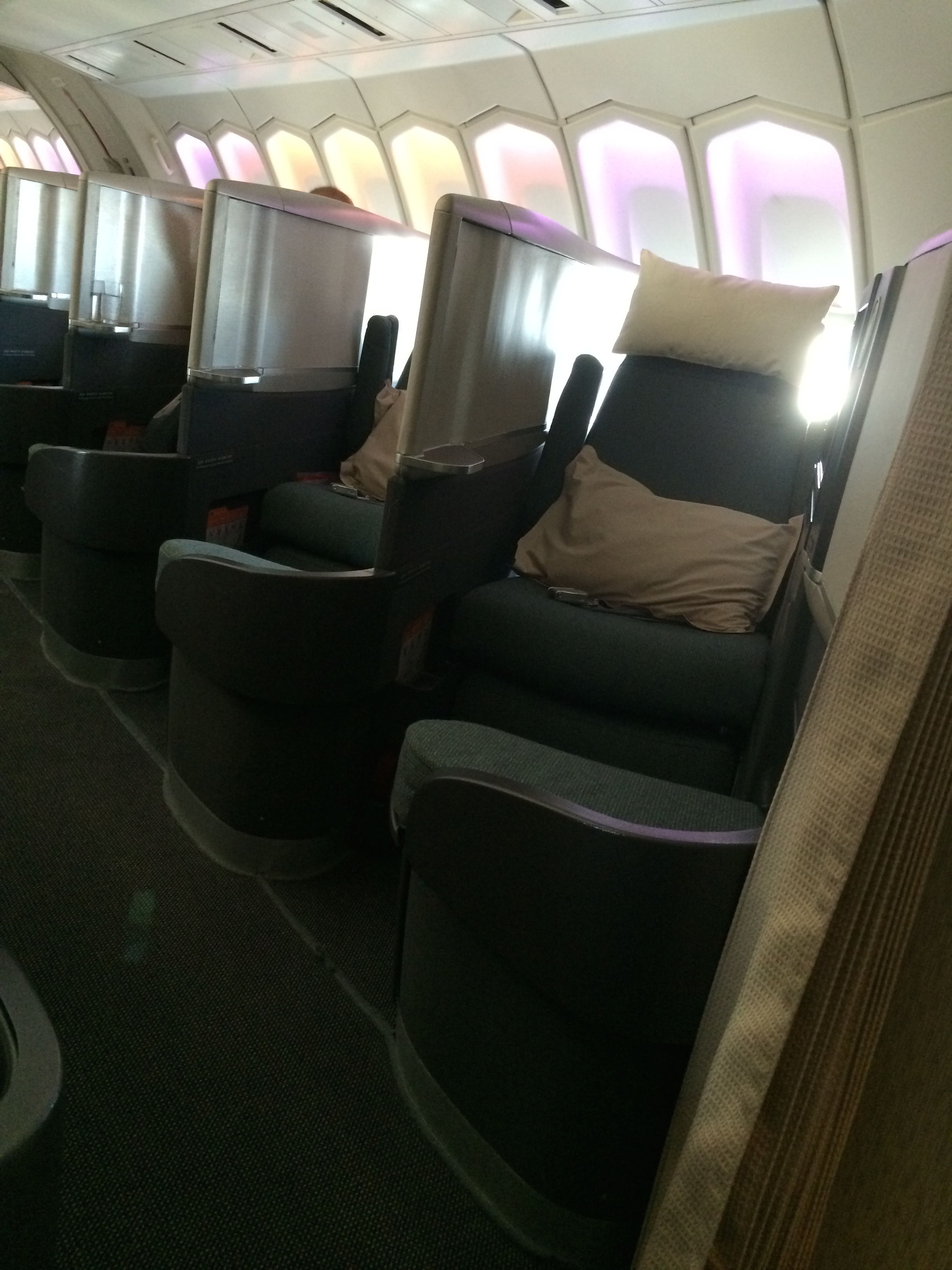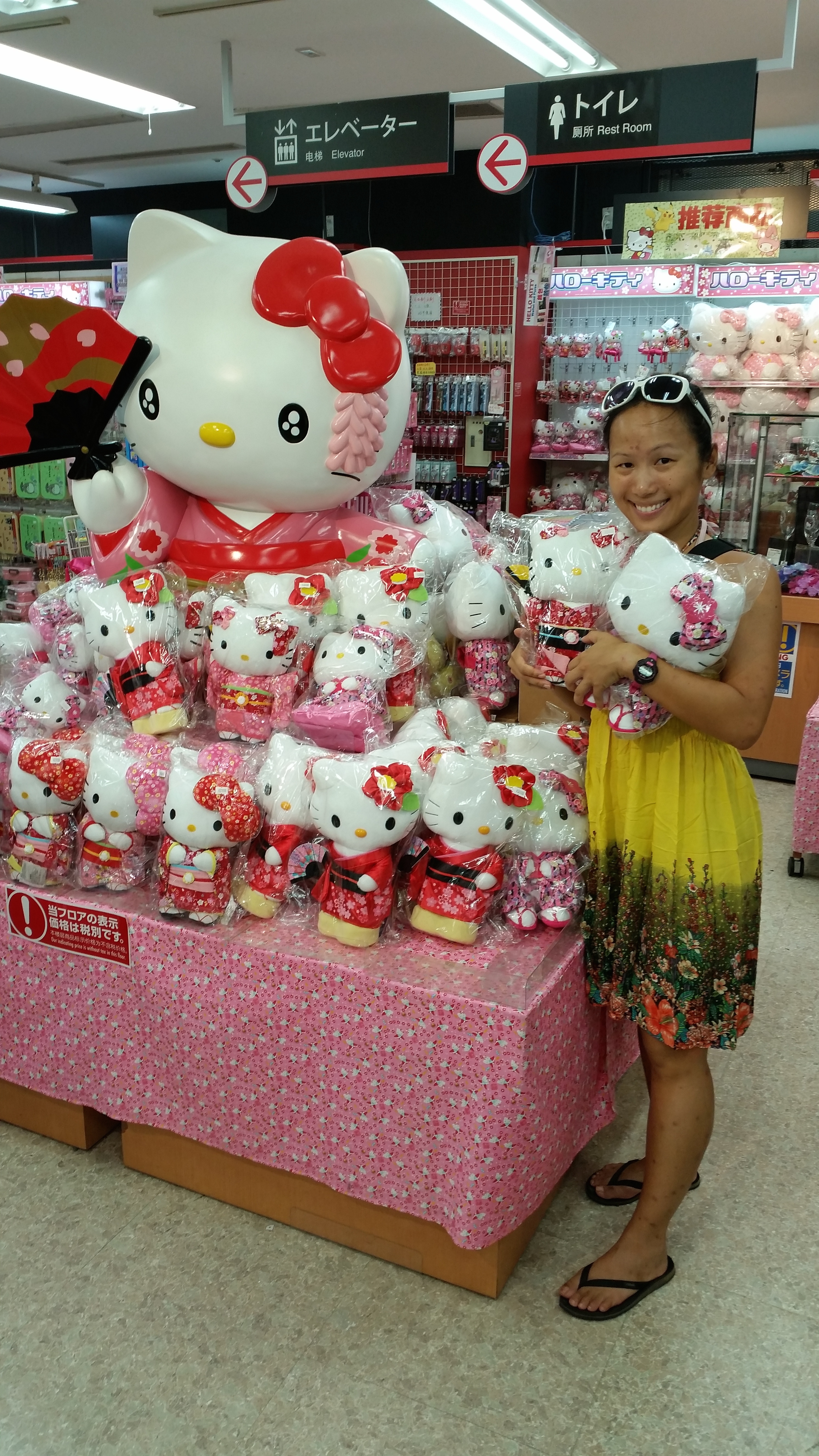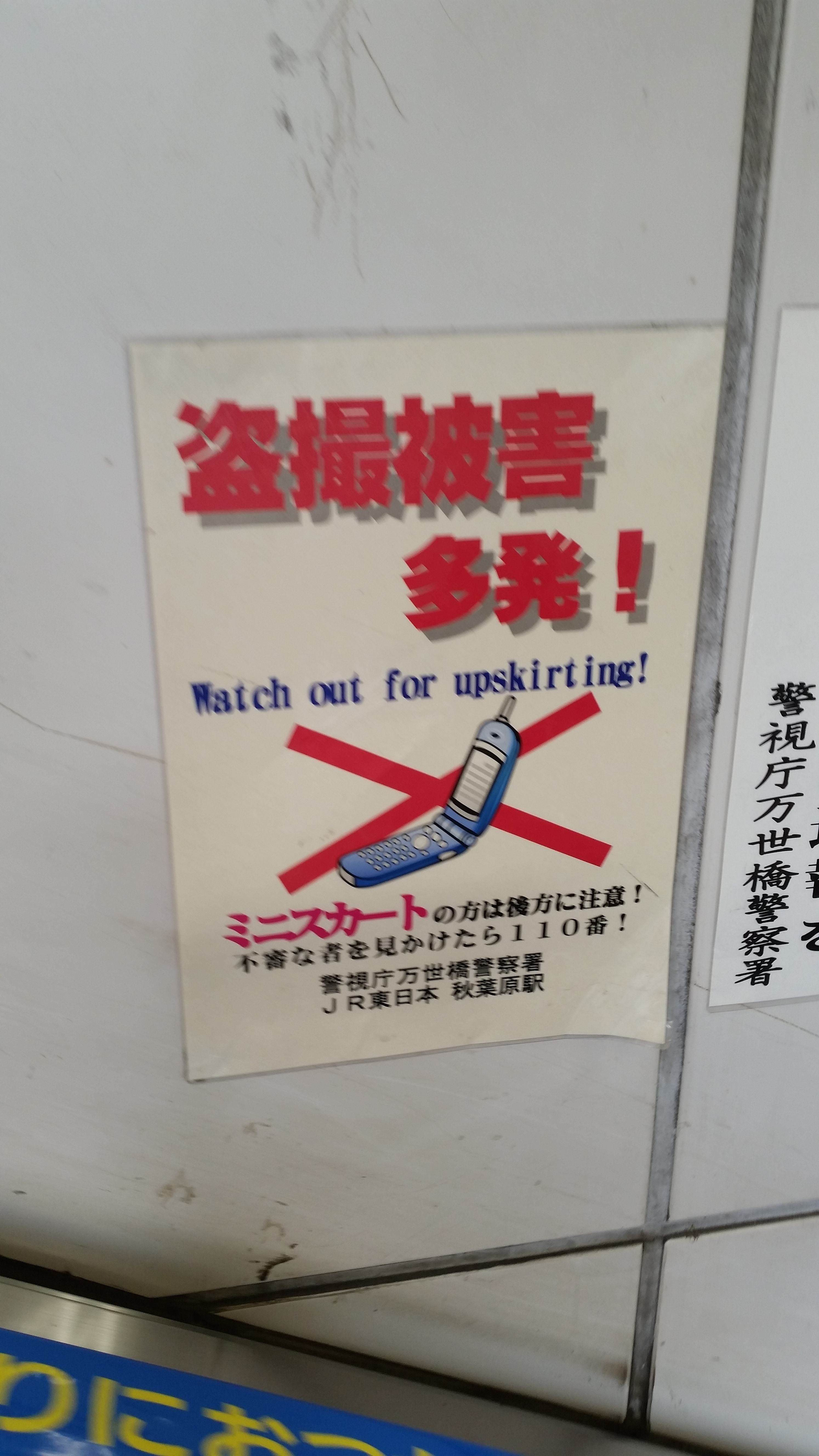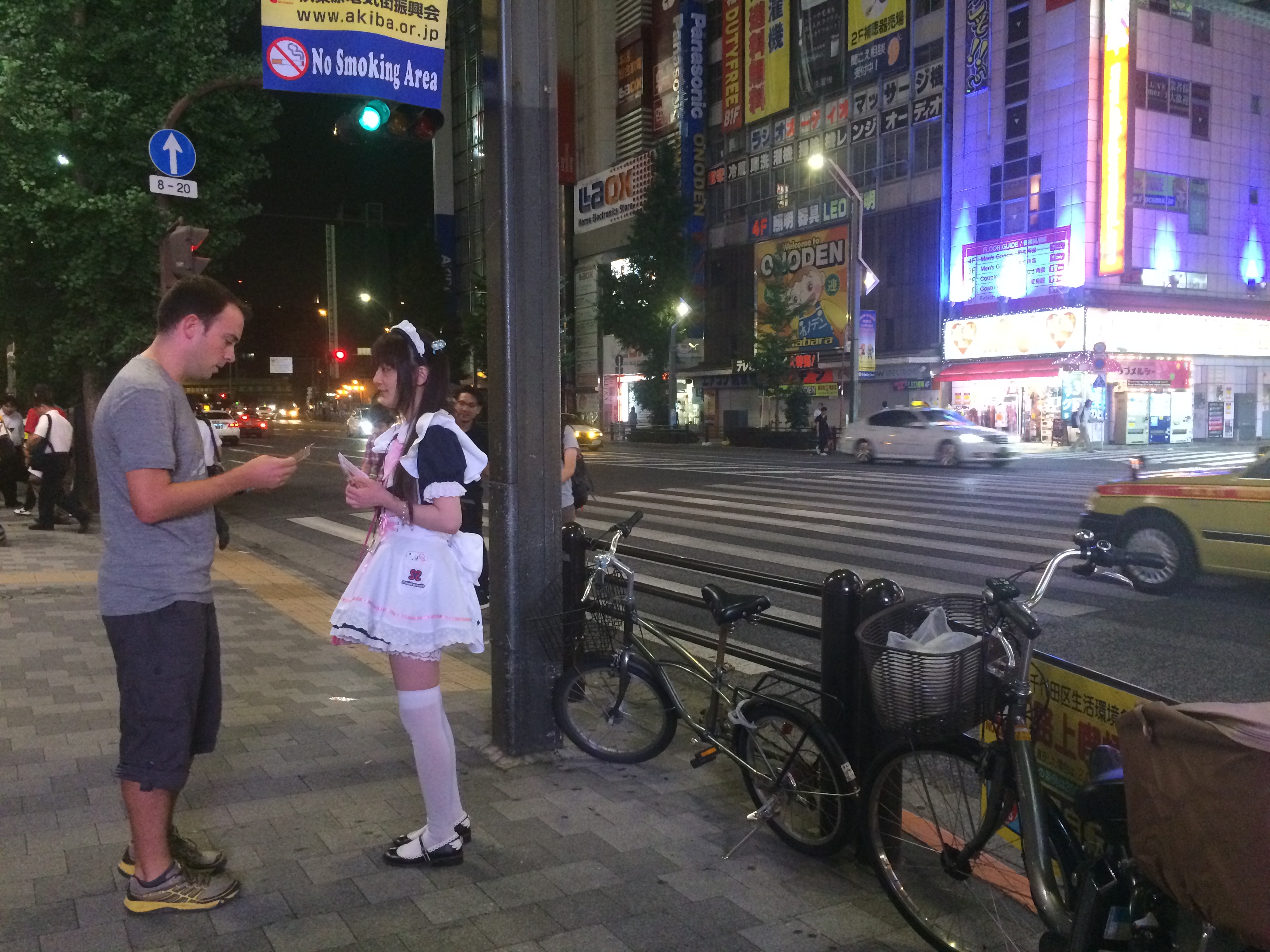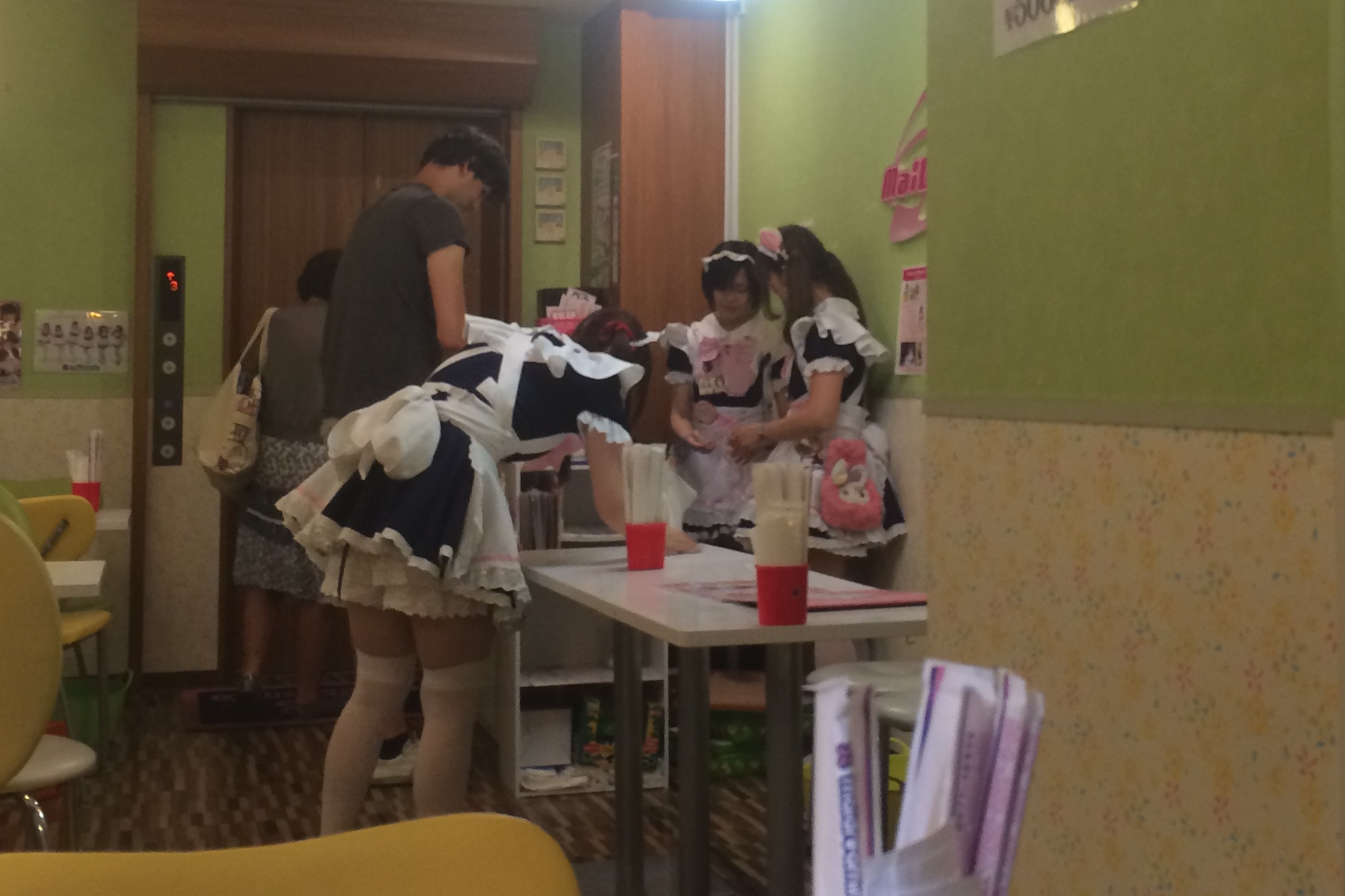Our culture shock from Myanmar quickly wore off within the first few days in Hong Kong, so by the time we departed in the wee hours of the morning from Chungking Mansions for Tokyo, we were pretty damn stoked.
On a side note, Chris and I were able to fly the $600 4-hour flight to Tokyo for FREE using points. With US Airways, Chris flew economy. YAY for the free flight, but BOO for economy (I know, I know, we’re spoiled). With American Airlines, I flew business class. SCORE!
After I finished my delicious complimentary breakfast in the business class lounge, I strolled up the stairs to the top deck business class section of the 747.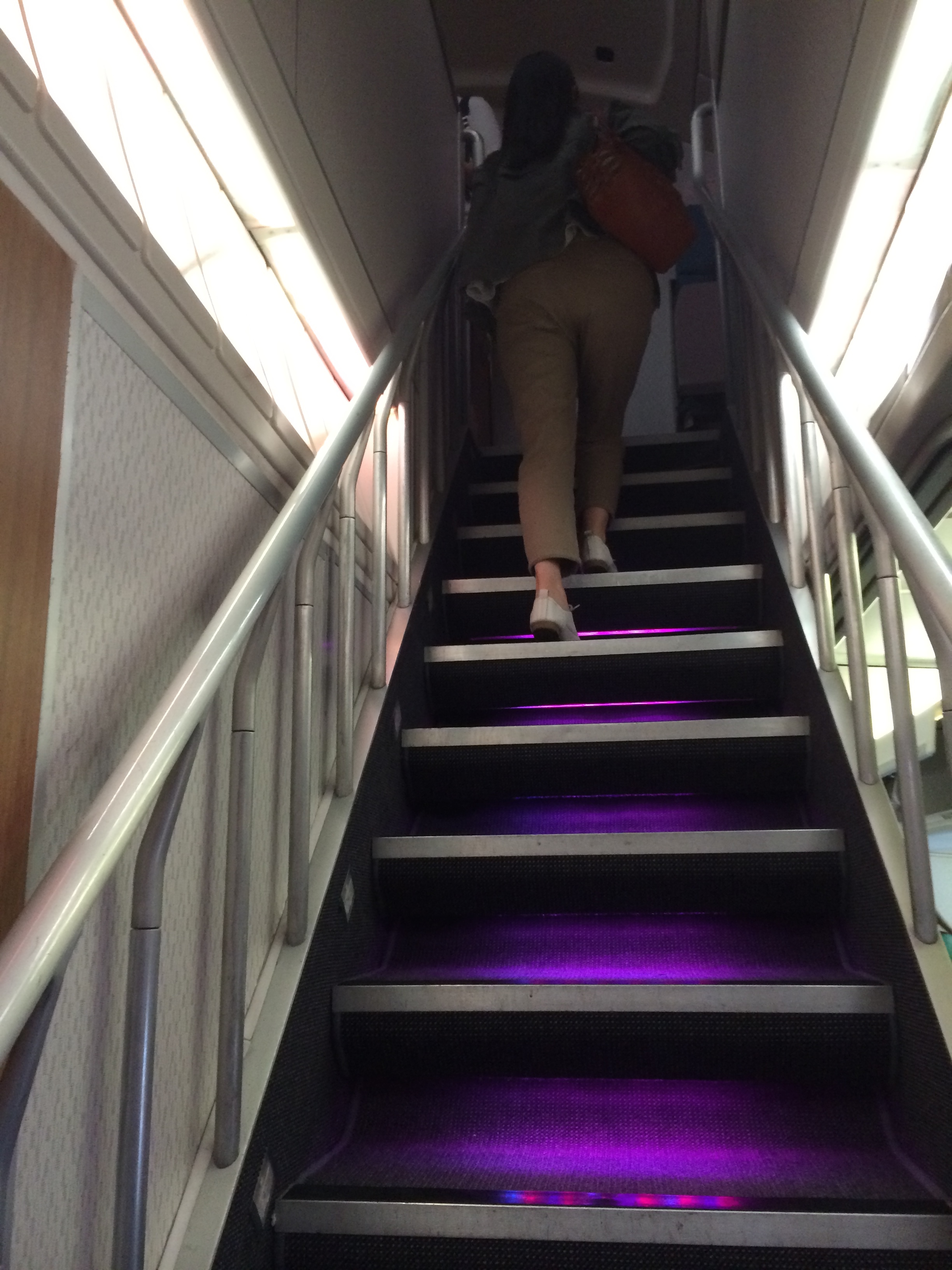
Literally right behind the pilot’s cabin:
Within minutes of settling in, I was served a beverage.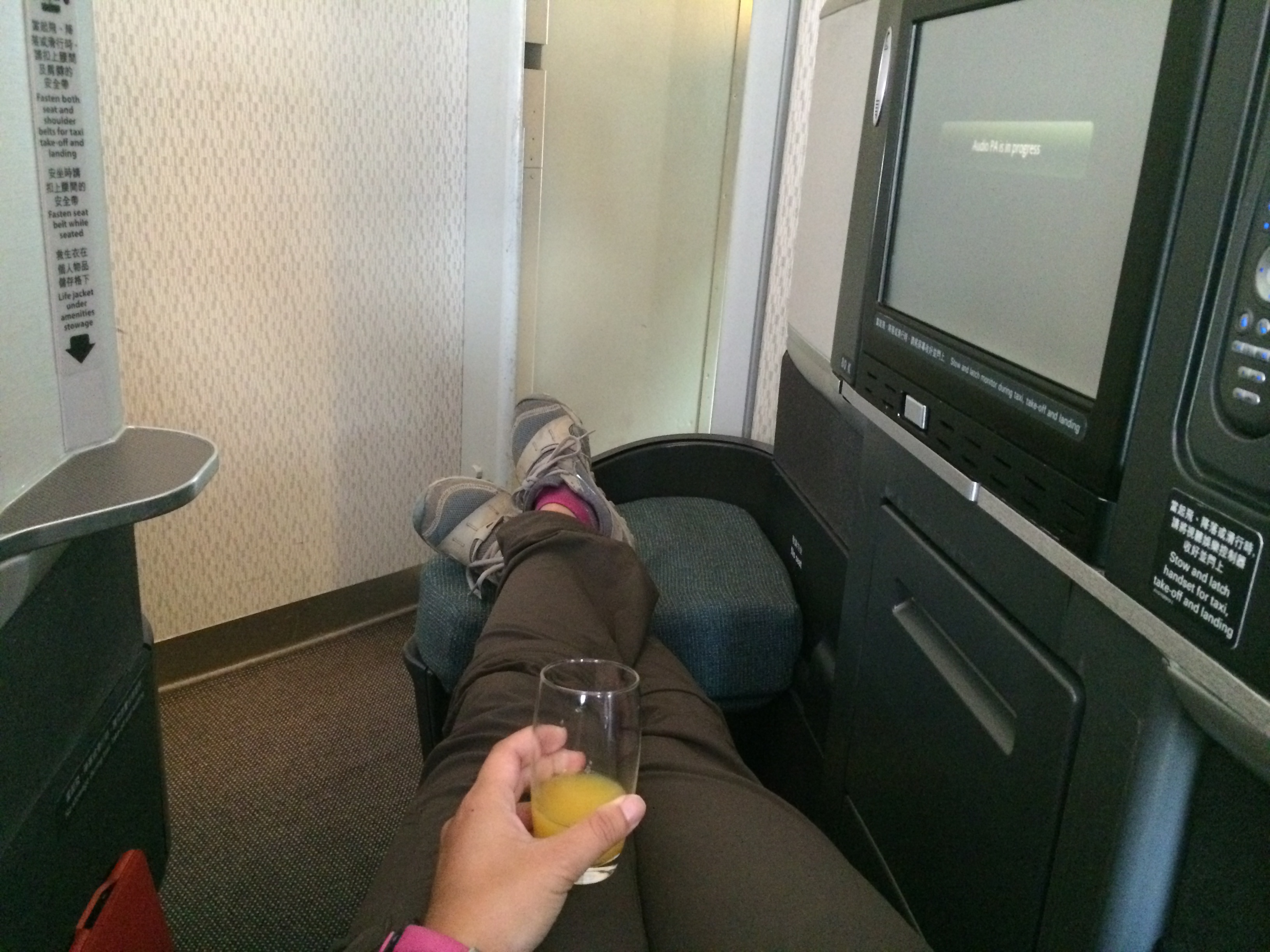
After taking off, a delightful breakfast was served. The options were a Western, a Cantonese, or a Japanese breakfast: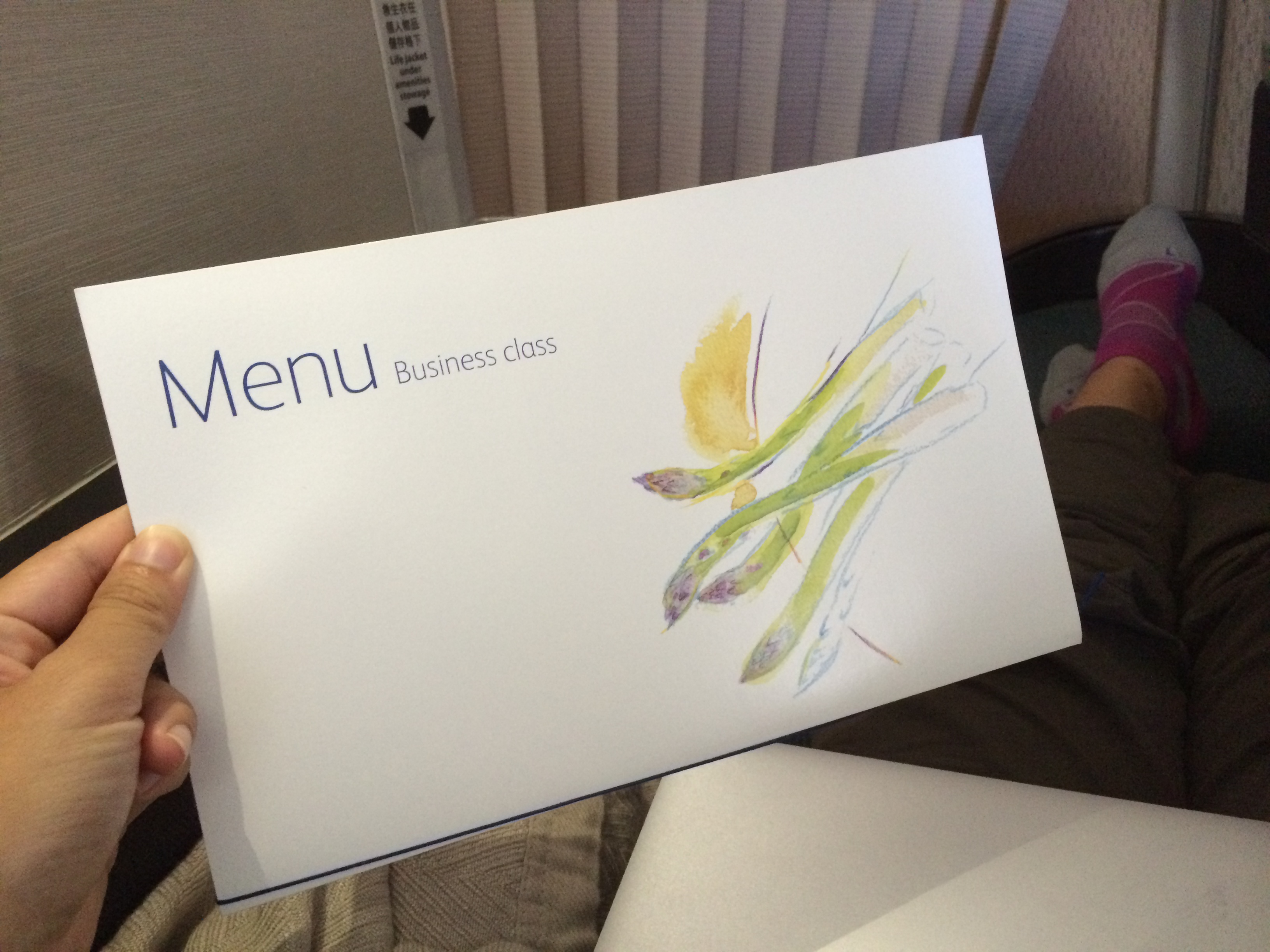
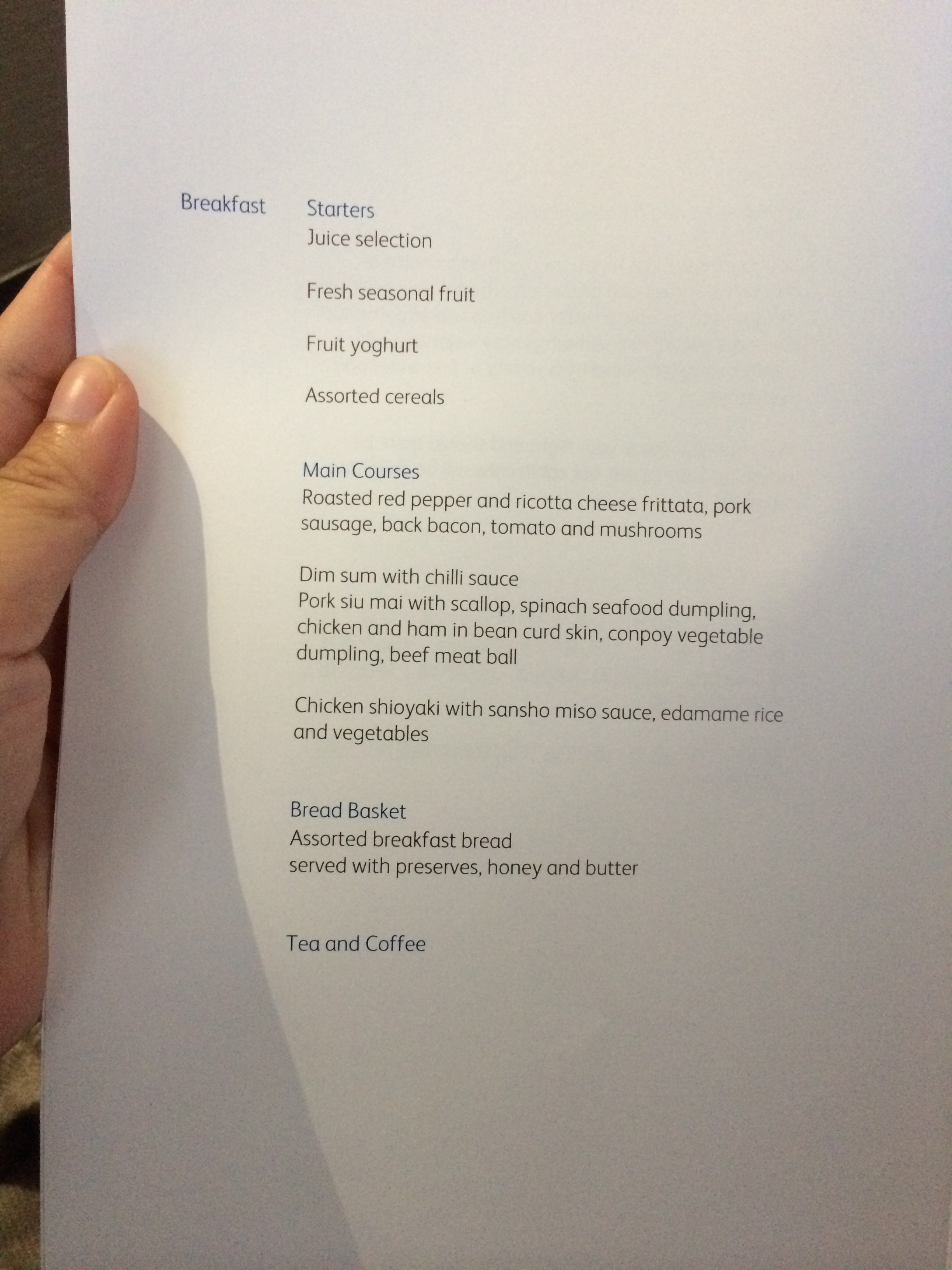
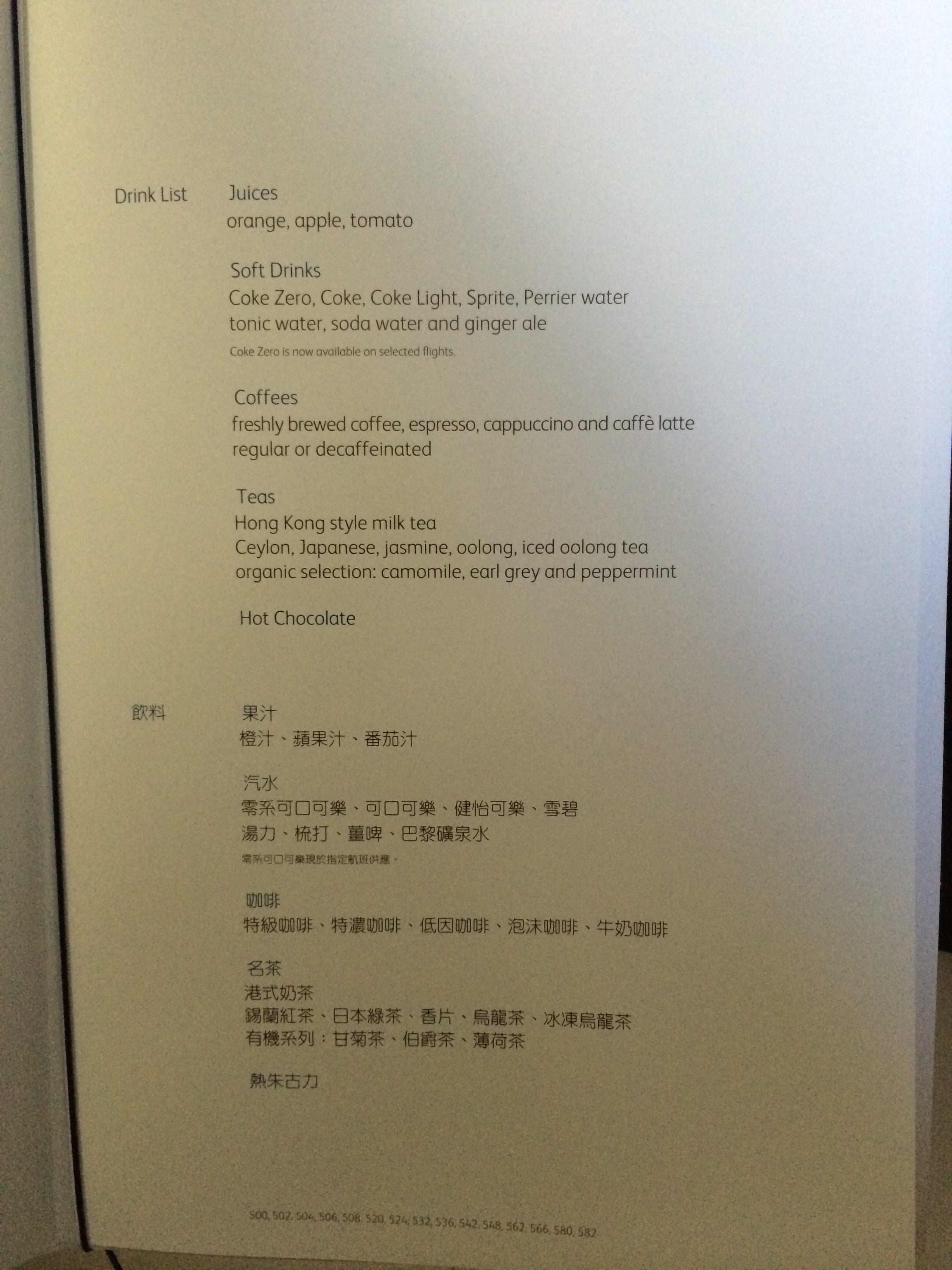
Despite being painfully full from the breakfast I already chowed down in the lounge, I opted for the yummy dim sum and Hong Kong style milk tea. 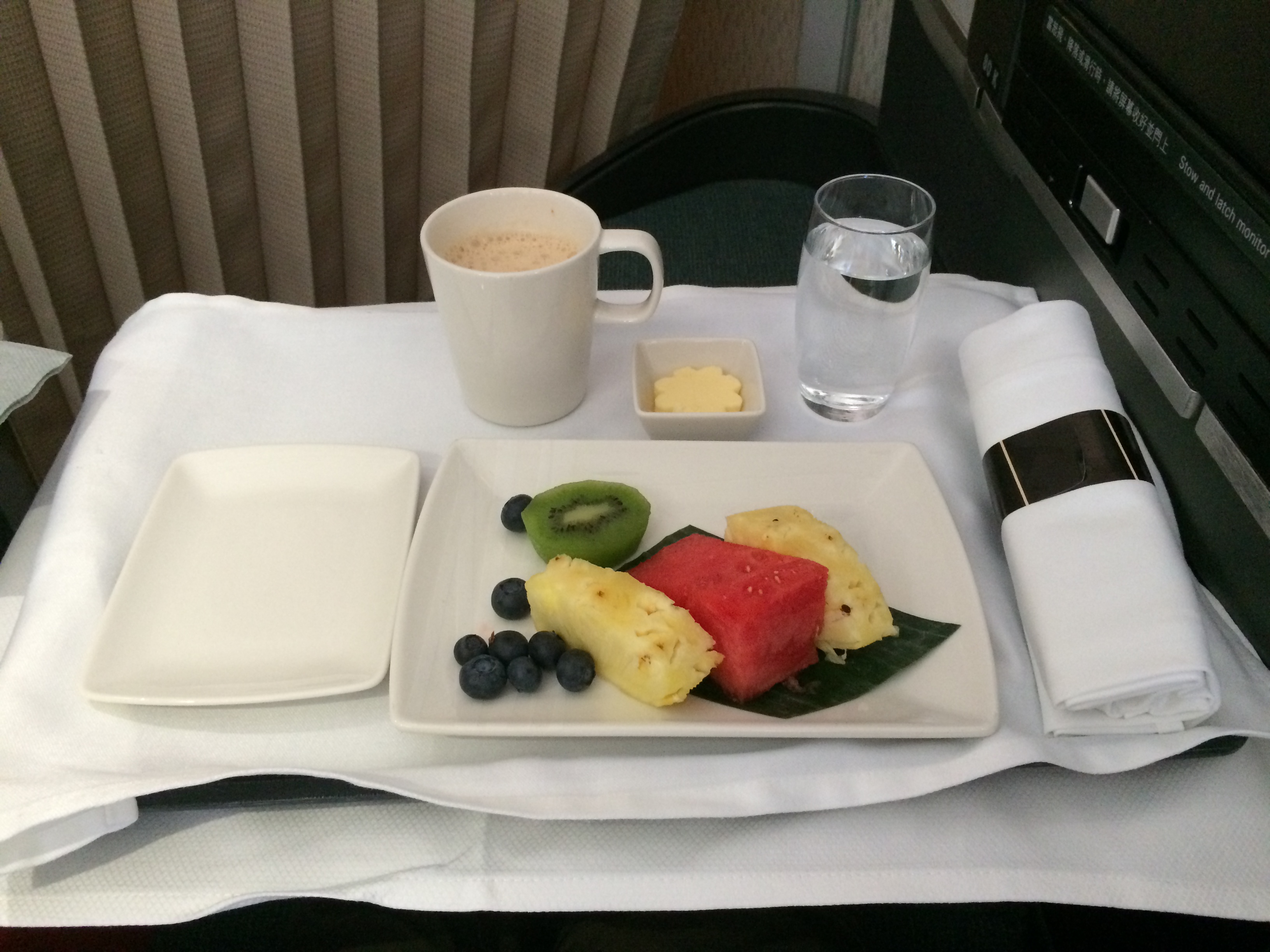
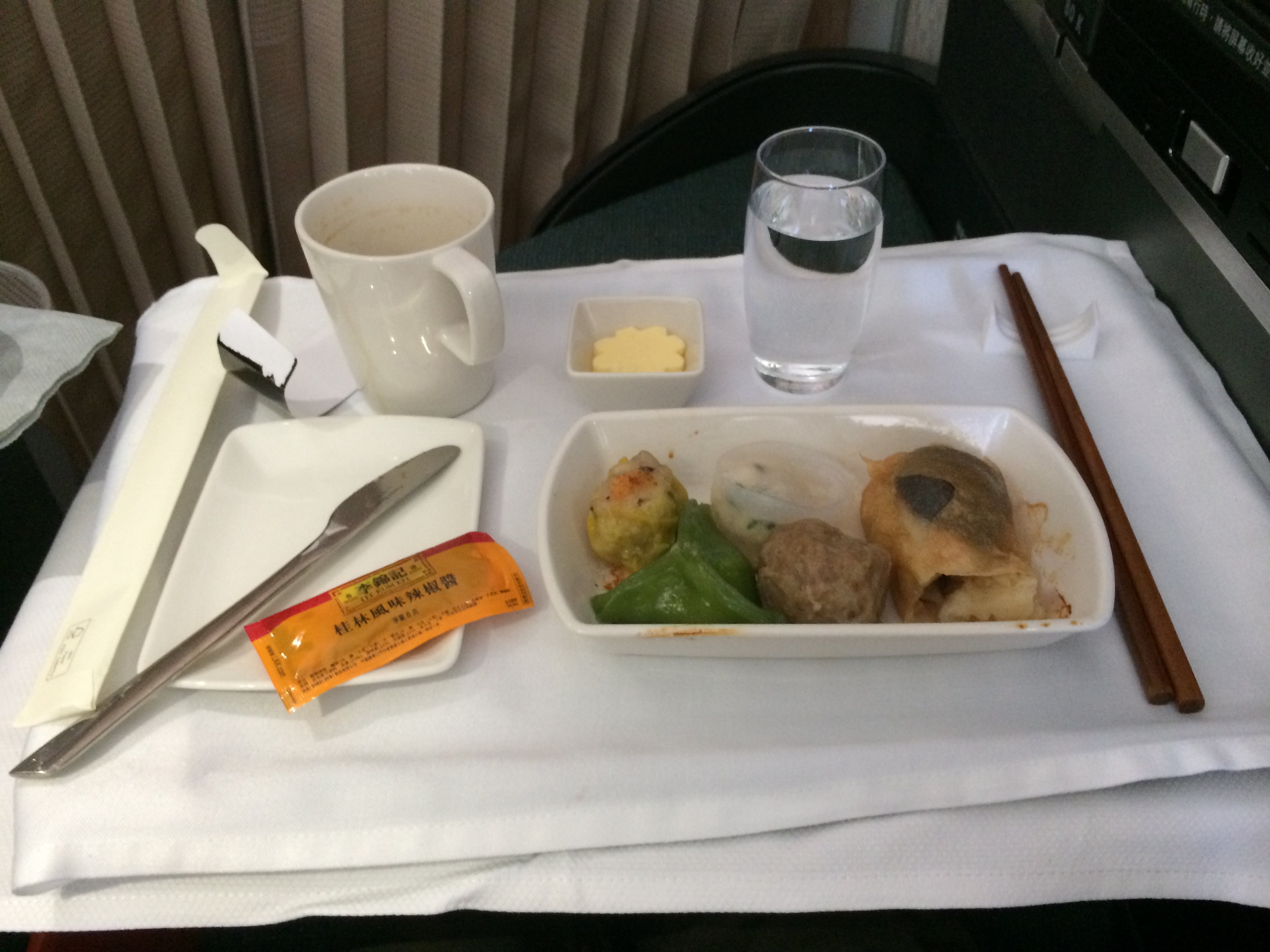
Before landing, the pilot announced Mt. Fuji could be seen from the window.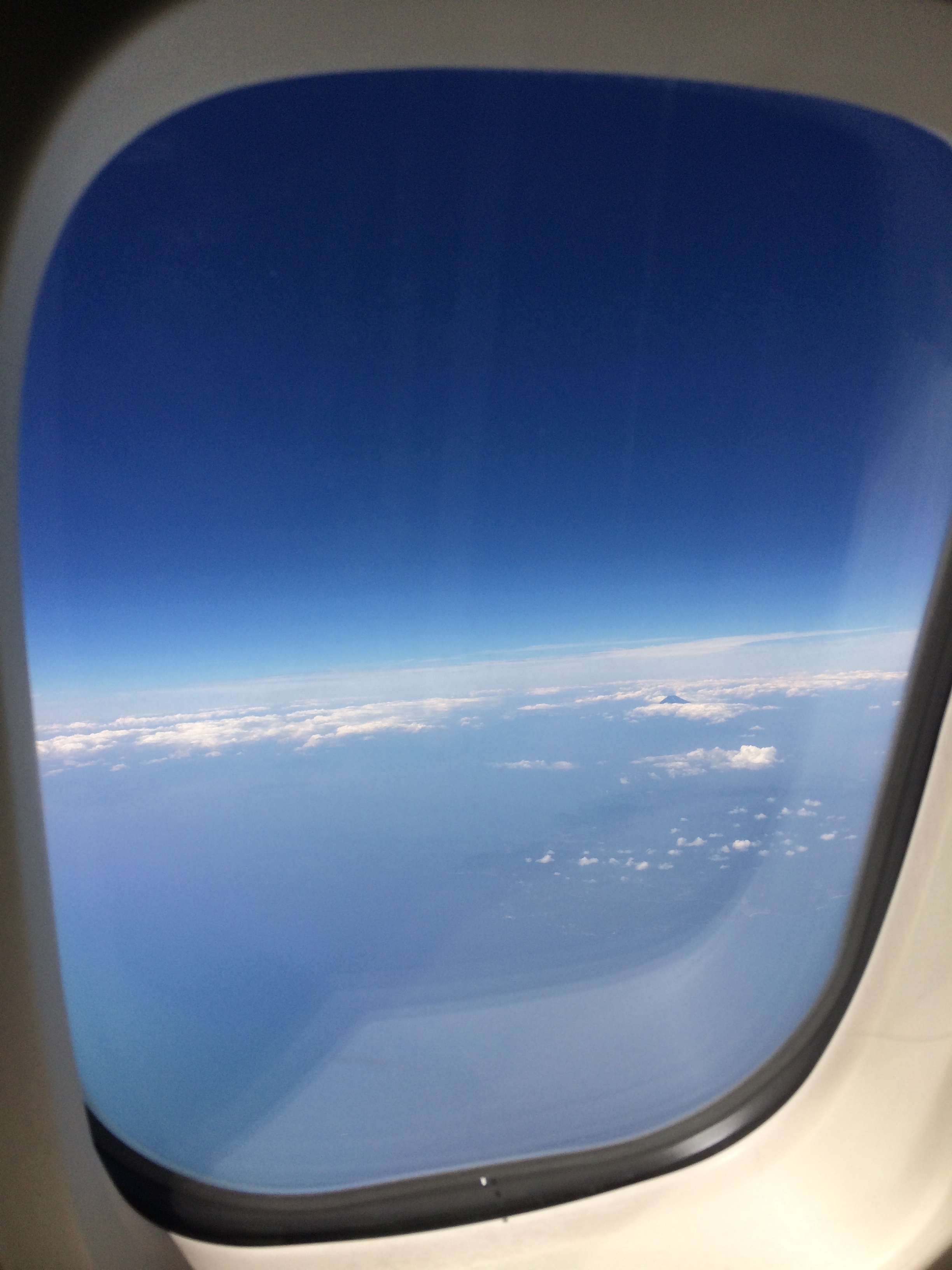
Getting into Tokyo was smooth and painless. We received the necessary stamps, picked up our ~$230 USD 7-day JR Rail Pass (which by the way can only be purchased OUTSIDE of Japan and is totally worth the cost if you are considering travel throughout the country), hopped on the train from Haneda Airport en route to Shinjuku, and even managed to get lost within our first 15 minutes outside of the airport (accidentally went toward Yokohama instead of Shinagawa on the JR line)! Immediately when we boarded the train, the unique smell of the air conditioner mixed with the plastic seats and humidity triggered memories from when I was in Yokohama-Tokyo for one summer exactly nine years ago. Tokyo, I thought to myself, 久しぶりですね! (It’s been a while!)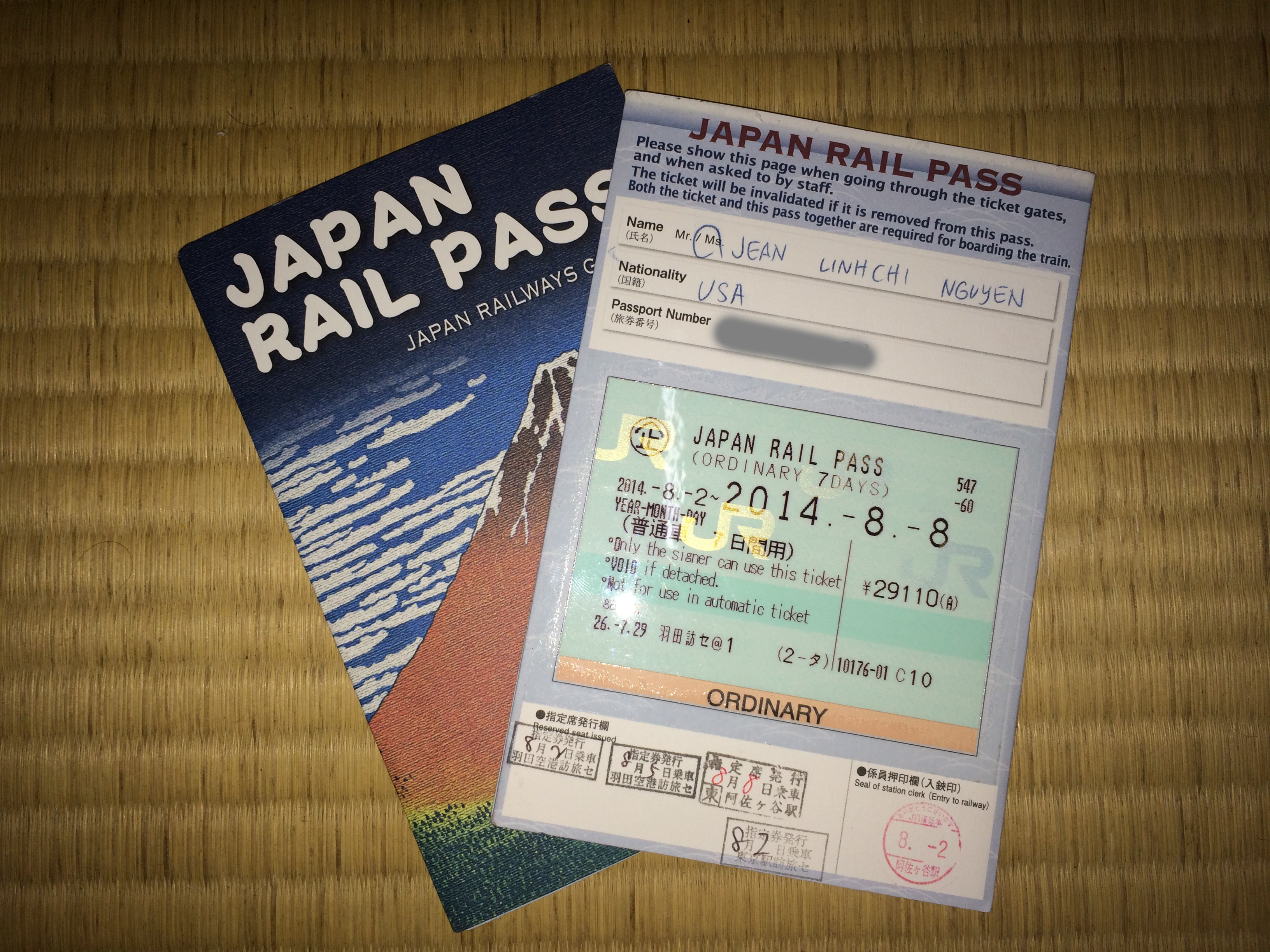
At this point, we were so accustomed to the public subway systems similar to BART in NorCal, the MTR in Hong Kong, the MTS in Bangkok, and the LRT in Kuala Lumpur that the Tokyo rail system abruptly stumped us. Normally there are only TWO trains that travel in opposite directions—quite the no-brainer, right? In Tokyo, with the combination of up to 16 platforms at one station, along with lines that have local, express, and rapid express services and random changes only announced in Japanese, it isn’t difficult to get lost and frustrated. The JR lines (which run above ground) run in parallel with the Tokyo subway (which run underground). Although public transportation in Tokyo is considered the best in the world, it can be quite the clusterfuck.
In addition to the slight subway learning curve, I was also saddened with the reality of my wasted degree in Japanese. Despite studying it for three years in high school and two years at Berkeley, most of my grammar and vocabulary have been forgotten…it’s been seven years since I’ve graduated and I haven’t used it once. Not one bit. My reading and writing is comparable to a child’s, and my speaking and listening has gotten worse. At least I can still order food, ask for directions and prices, and make reservations. ざんねんですね!
Shinjuku was our first stop, where we stored our bags in two of the dozens of lockers and ventured not too far from the station to purchase SIM cards. Apparently Japan likes to make it difficult for foreigners to use mobile phones within its country; they mostly rent out SIM cards or mobile phones or sell data-only SIM cards at unreasonable prices starting at 1500¥ for 100mb. Chris got us both 1gig data cards at a price I am too ashamed to share, especially after being able to get unlimited TRUE data cards in Thailand for less than $10 USD.
After Chris purchased our SIM cards, we continued our short 10-minute ride to Asagaya, a local stop off the Chuo line. Thanks to my sharp eye for bargain-hunting, I was able to score an incredibly sweet deal in Asagaya for our first 4 nights in Tokyo: ¥4000 per night for two people in a 3×3 tatami room in a shared apartment. Included in the apartment was a tiny (hardly functional) kitchen and small bathroom. Being only 10-15 minutes away from the popular stations of Shinjuku, Shibuya, and Harajuku, this was a winner. Thanks, Craigslist!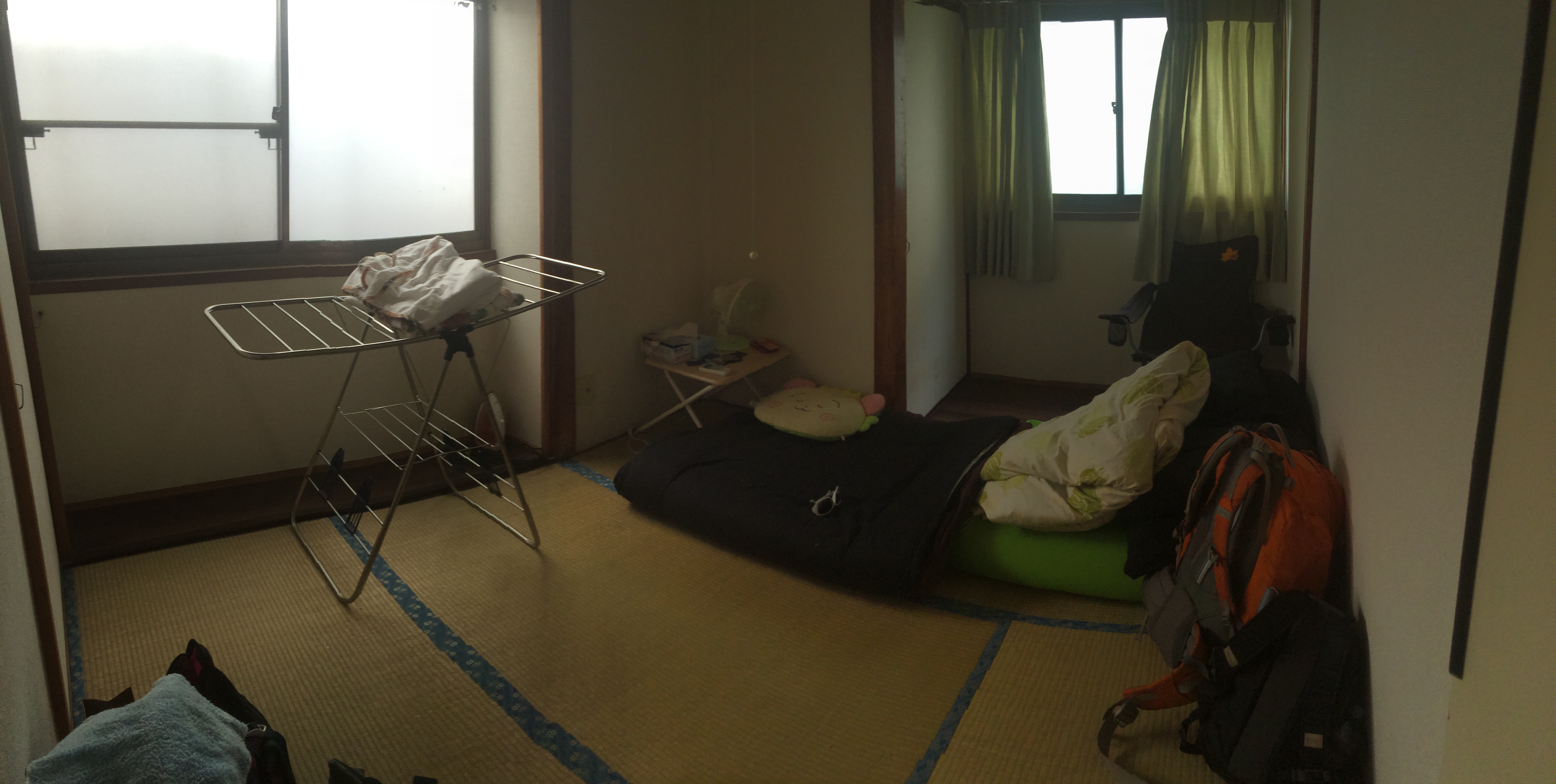
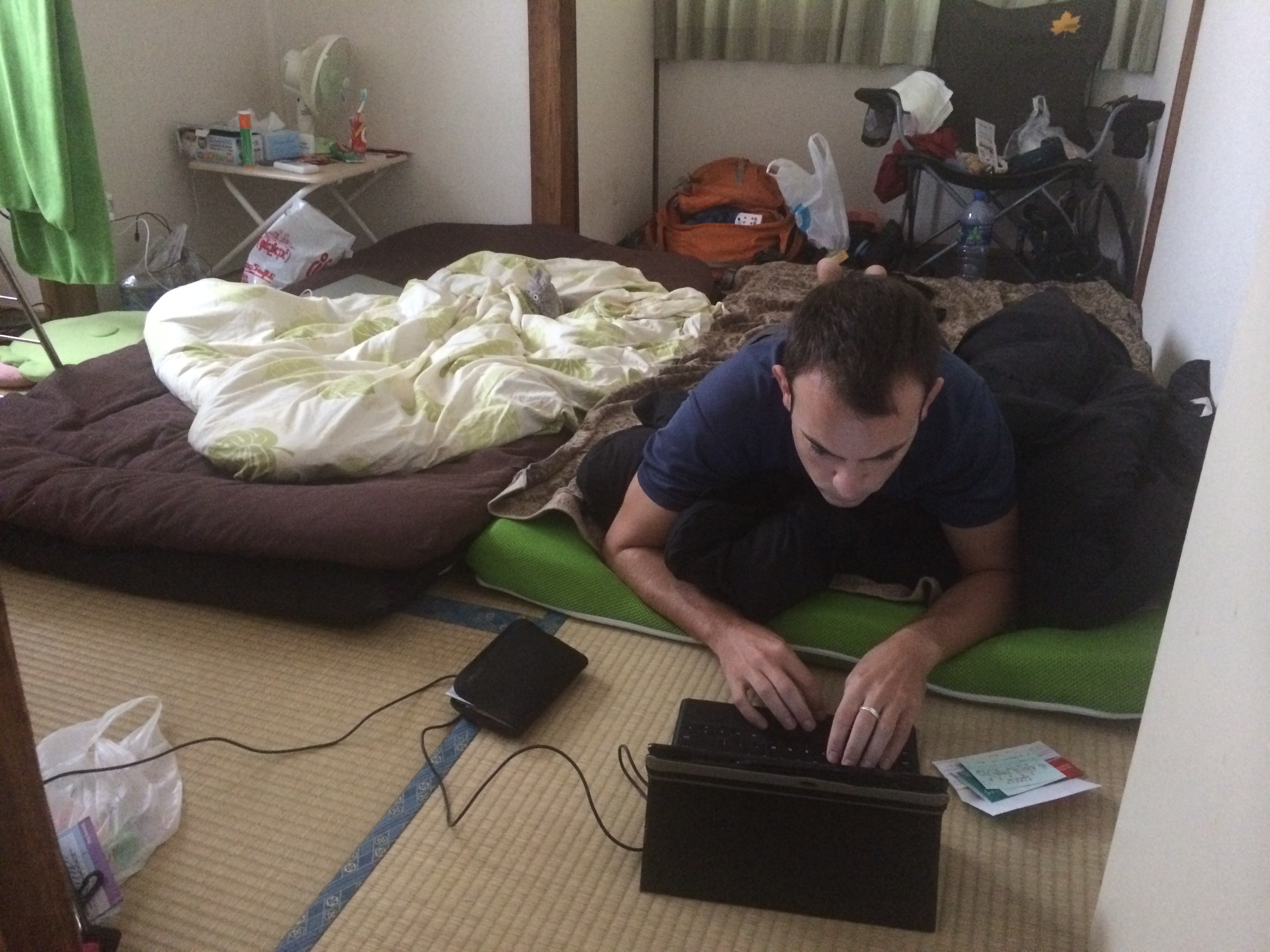
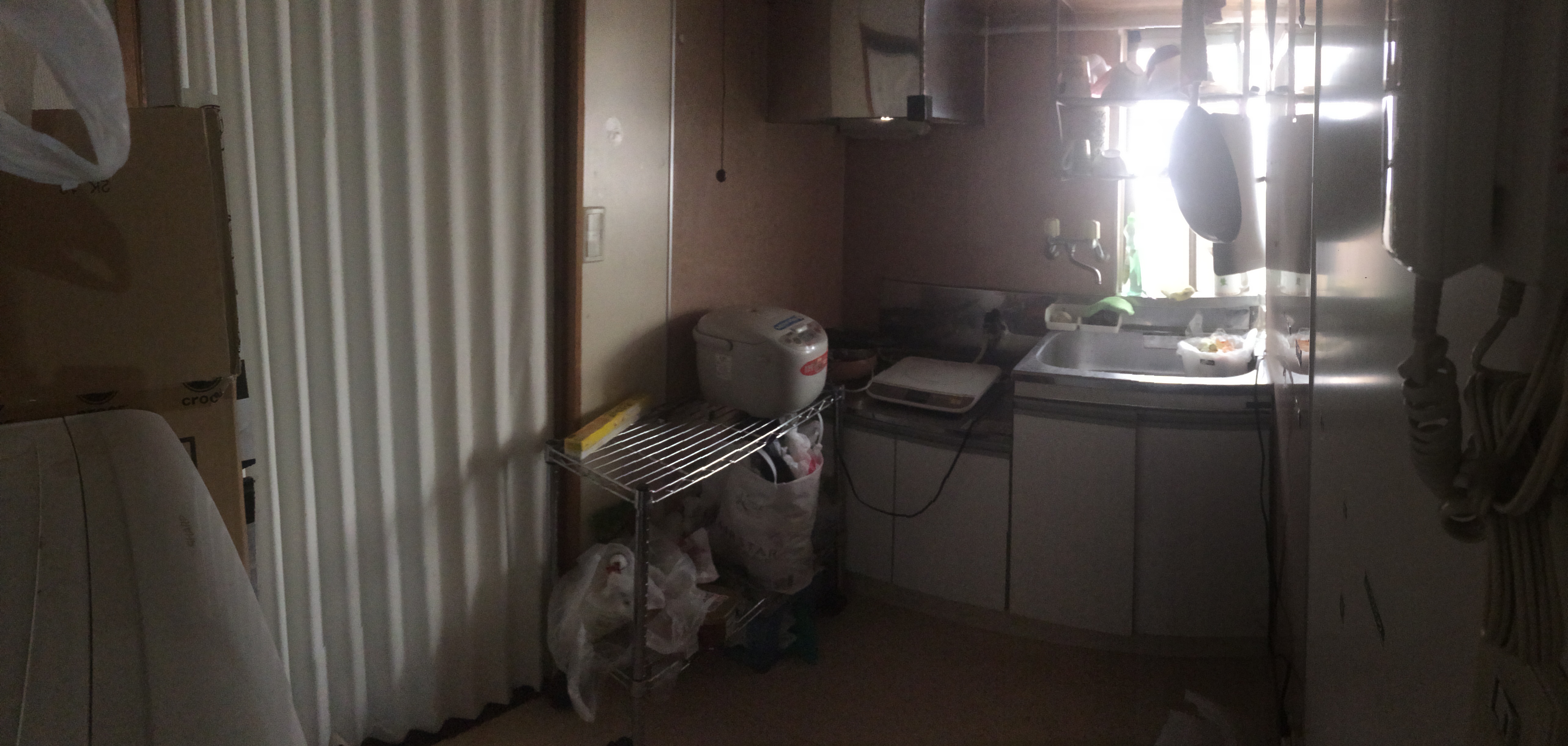
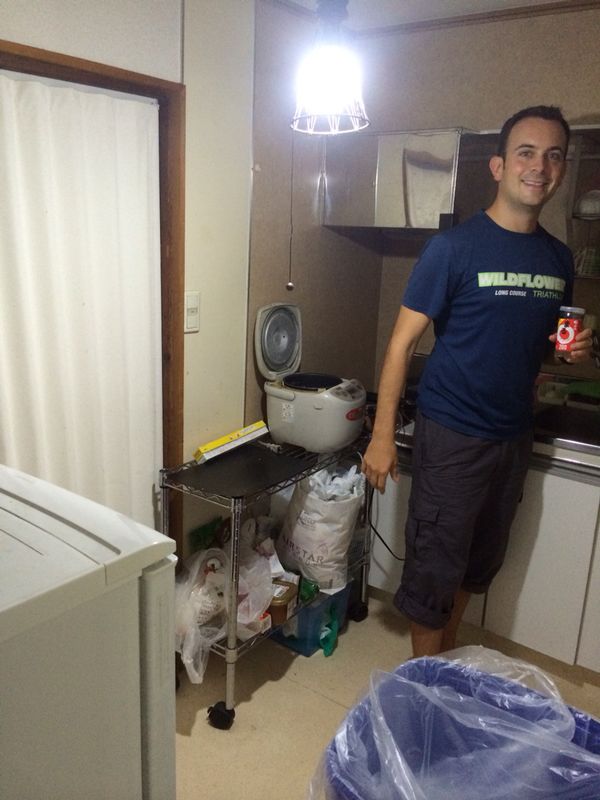
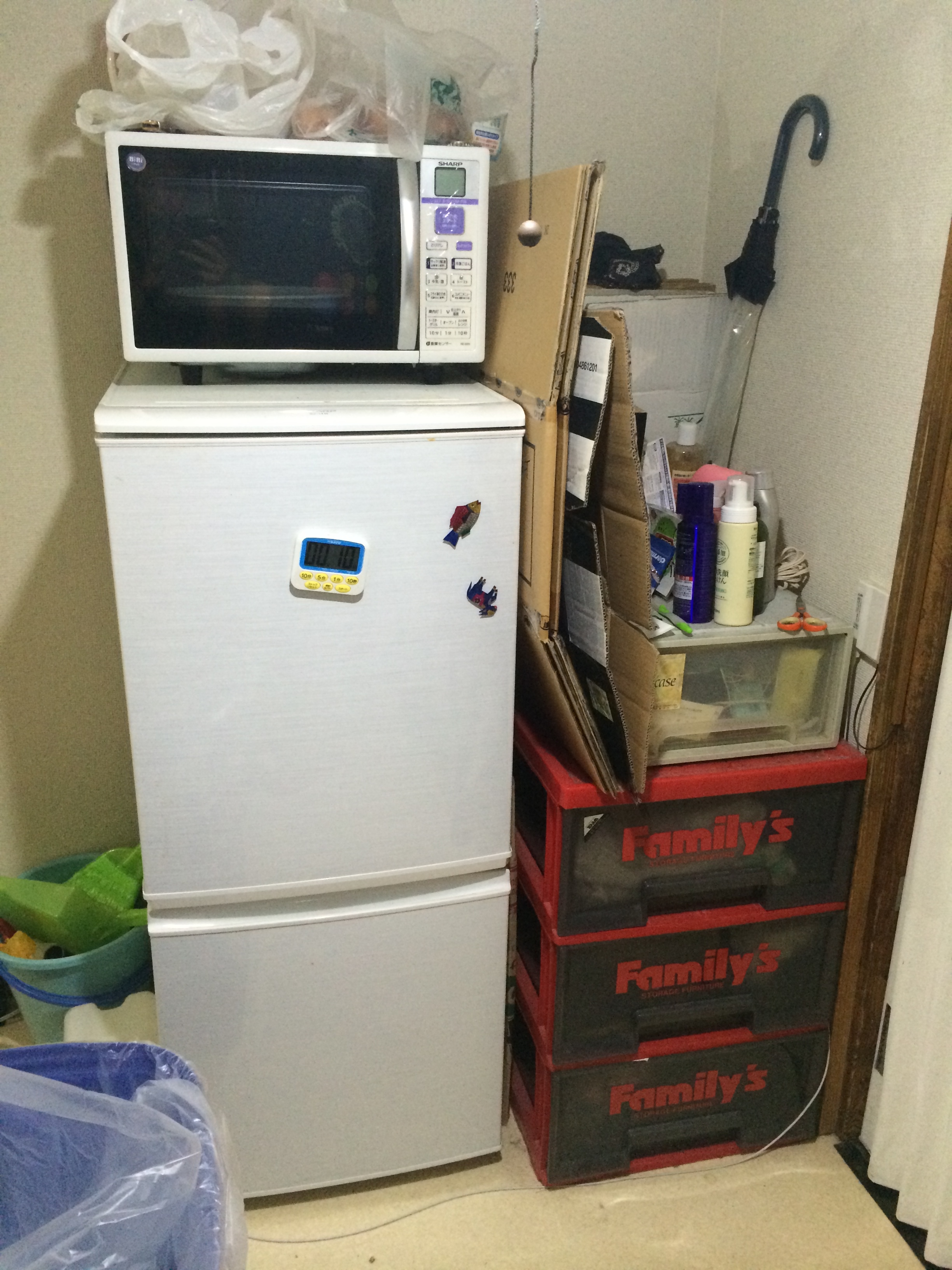
The apartment we stayed in was a 3-minute walk from Asagaya station. It sat on a narrow, adorably charming, unusually quiet street adorned with bars and restaurants. This was literally the facade of the apartment: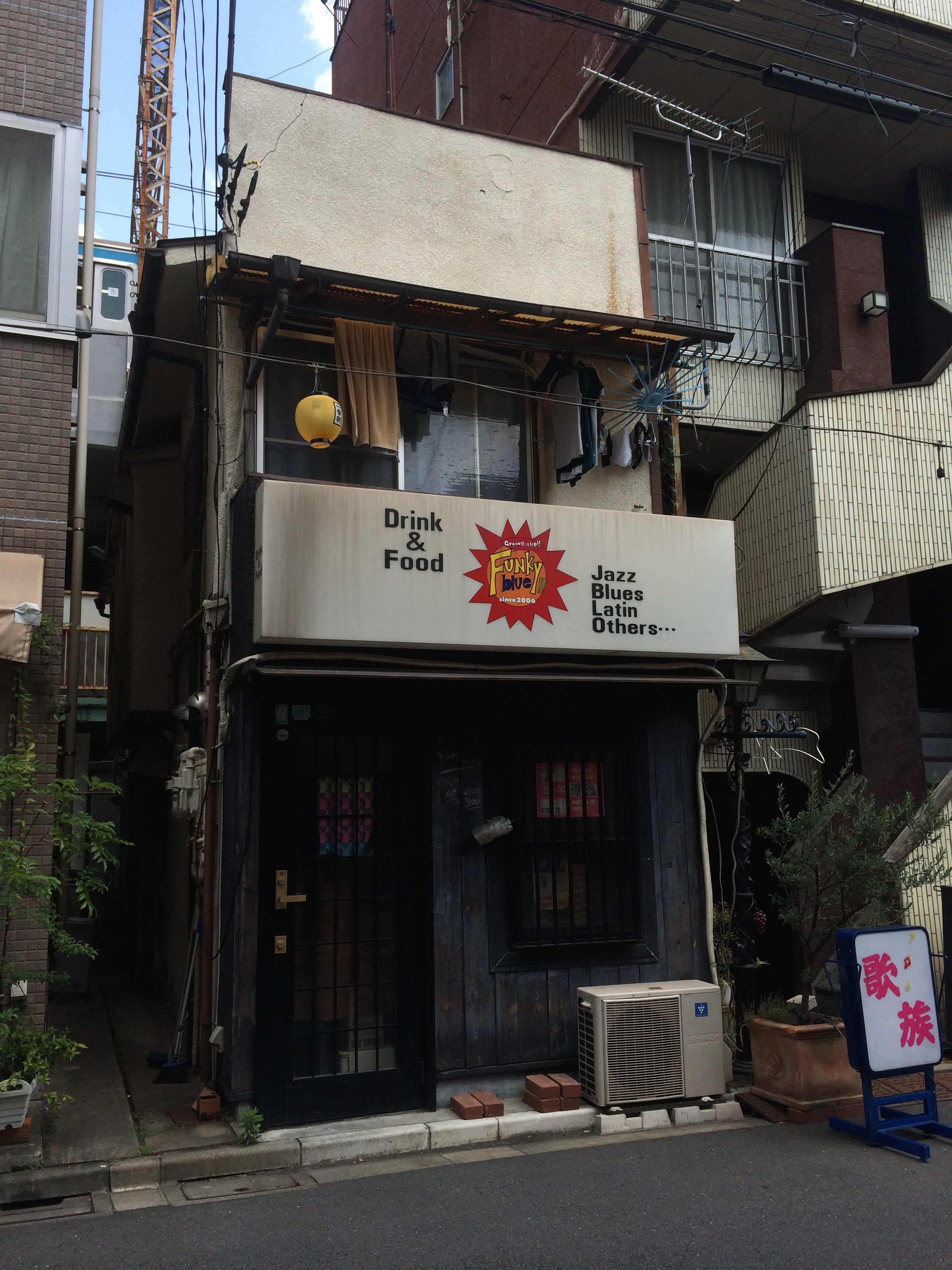
The entrance was along this wall on the right: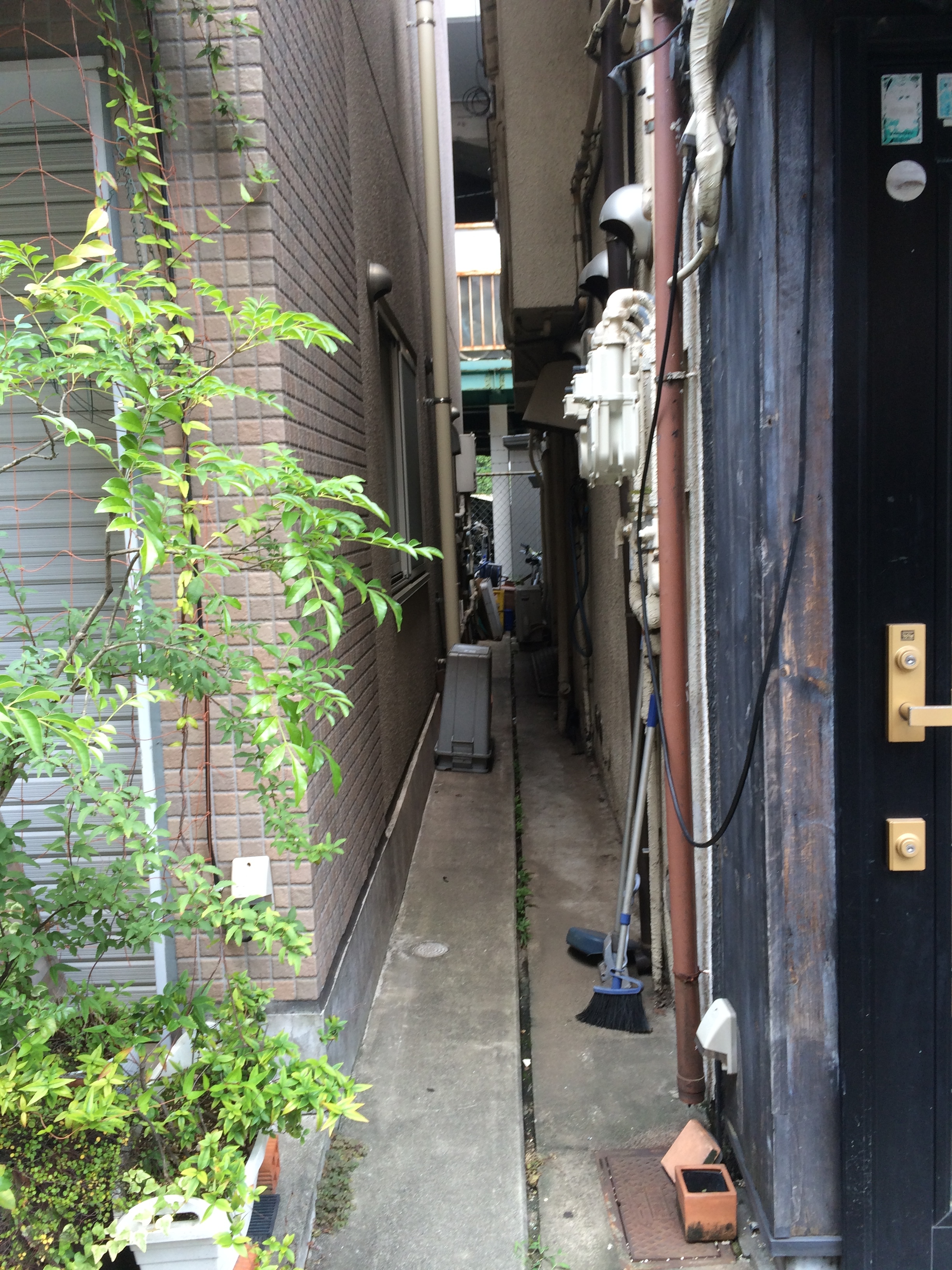
In addition to the McDonalds, Pachinko parlors, and strip club at the end of the street, there were massage parlors and my favorite Yakitori shop.
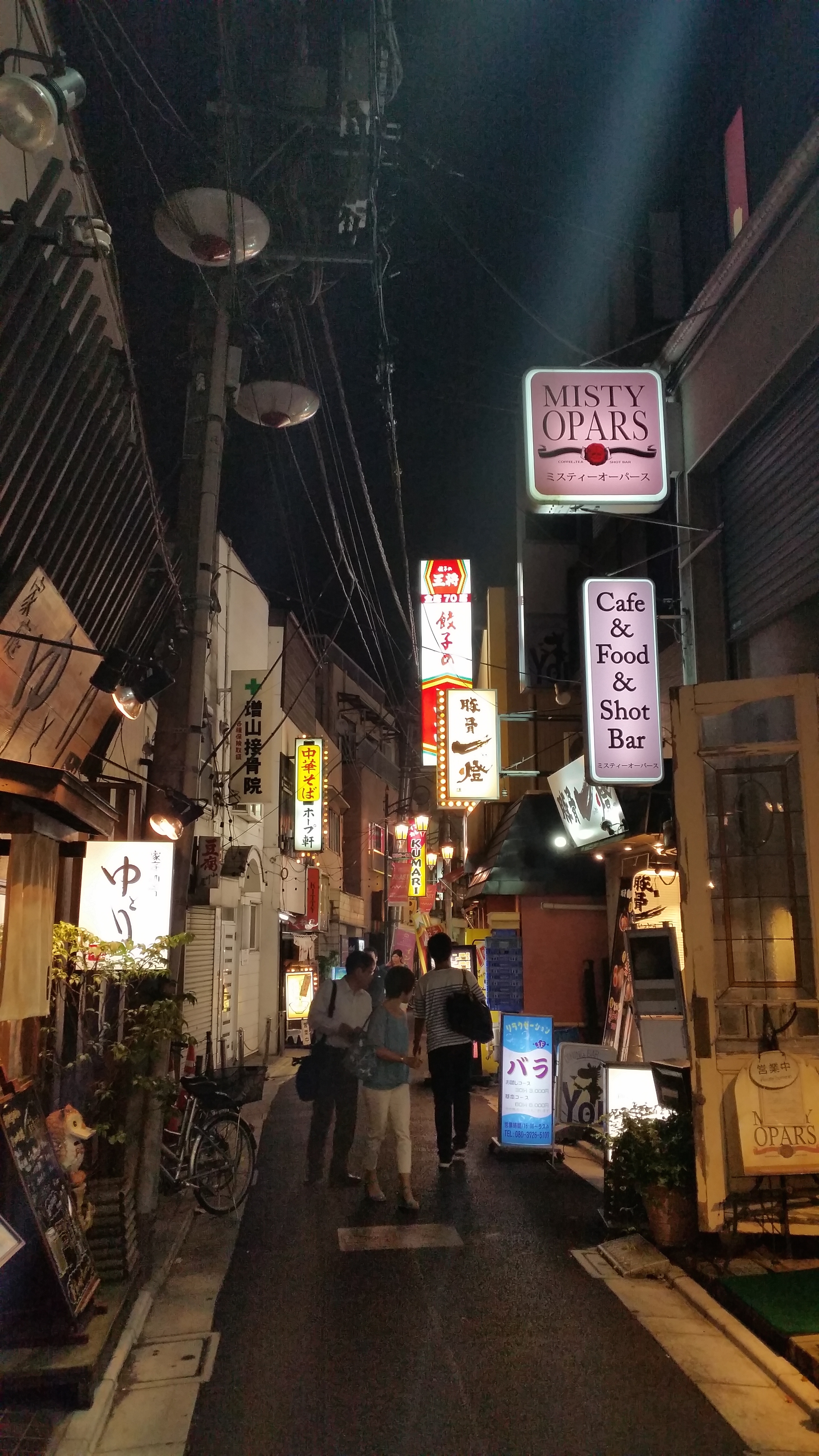
Within hours of arriving, both of us agreed that this was the fastest we have ever fallen in love with a country. The cleanliness, the politeness, the courteousness, the quality of life, the cuteness, the quirkiness, the efficiency of the people and transportation and services…it all comes down to the finest combination of modernity and culture. We slightly regretted we couldn’t stay in Japan longer, but decided it was better that we didn’t; otherwise we’d see money leaving our savings accounts faster than the shinkansen!
During our three full days in Tokyo, we explored some of the famous landmarks and visited a couple of the quirkier places. Photos and descriptions can be found below!
For ¥1000/hour, one can hang out at one of many cat cafés all throughout Tokyo. Some cafés have 15 cats. Some have as many as 50! Cat Café in Ebisu: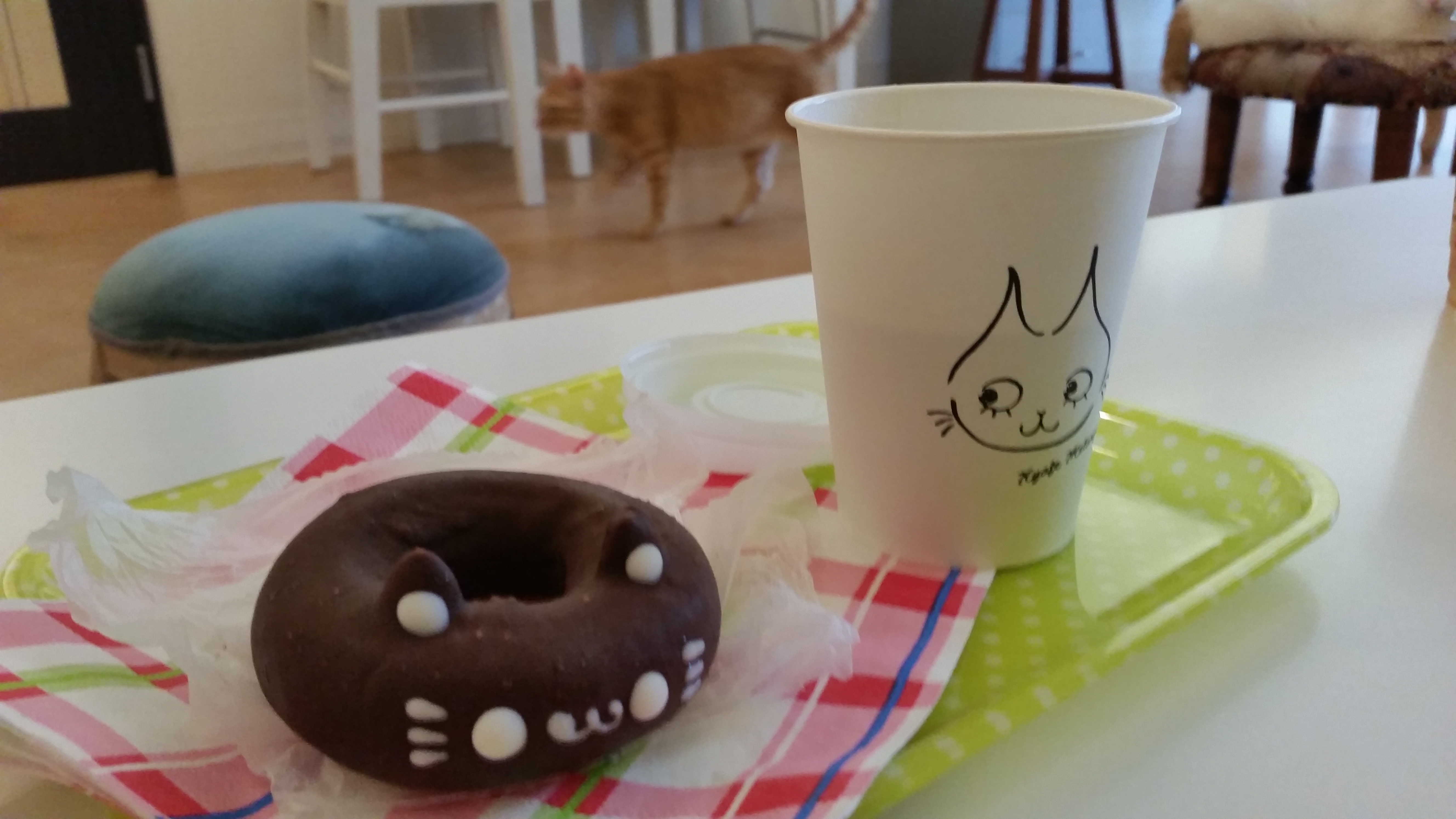
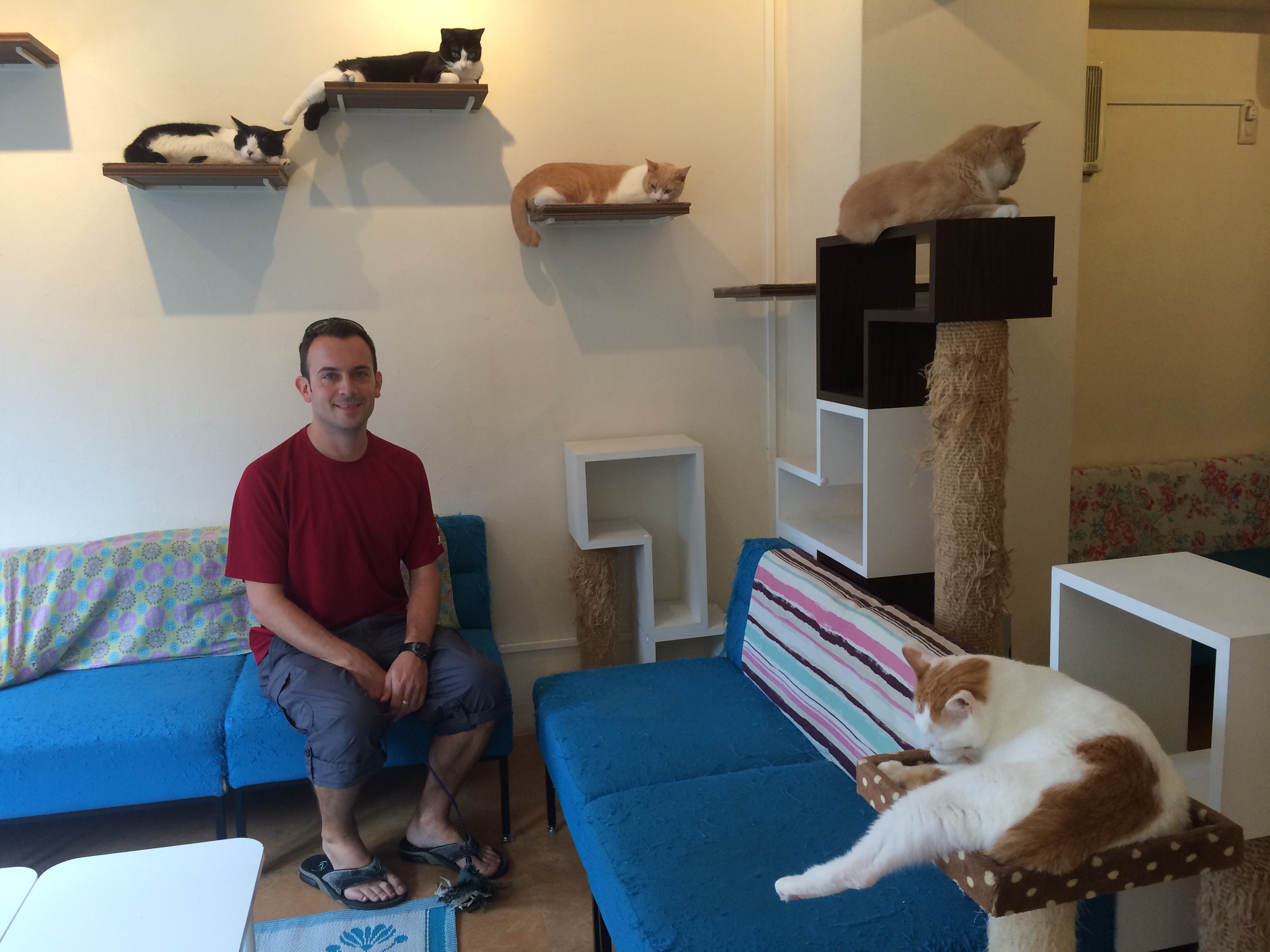
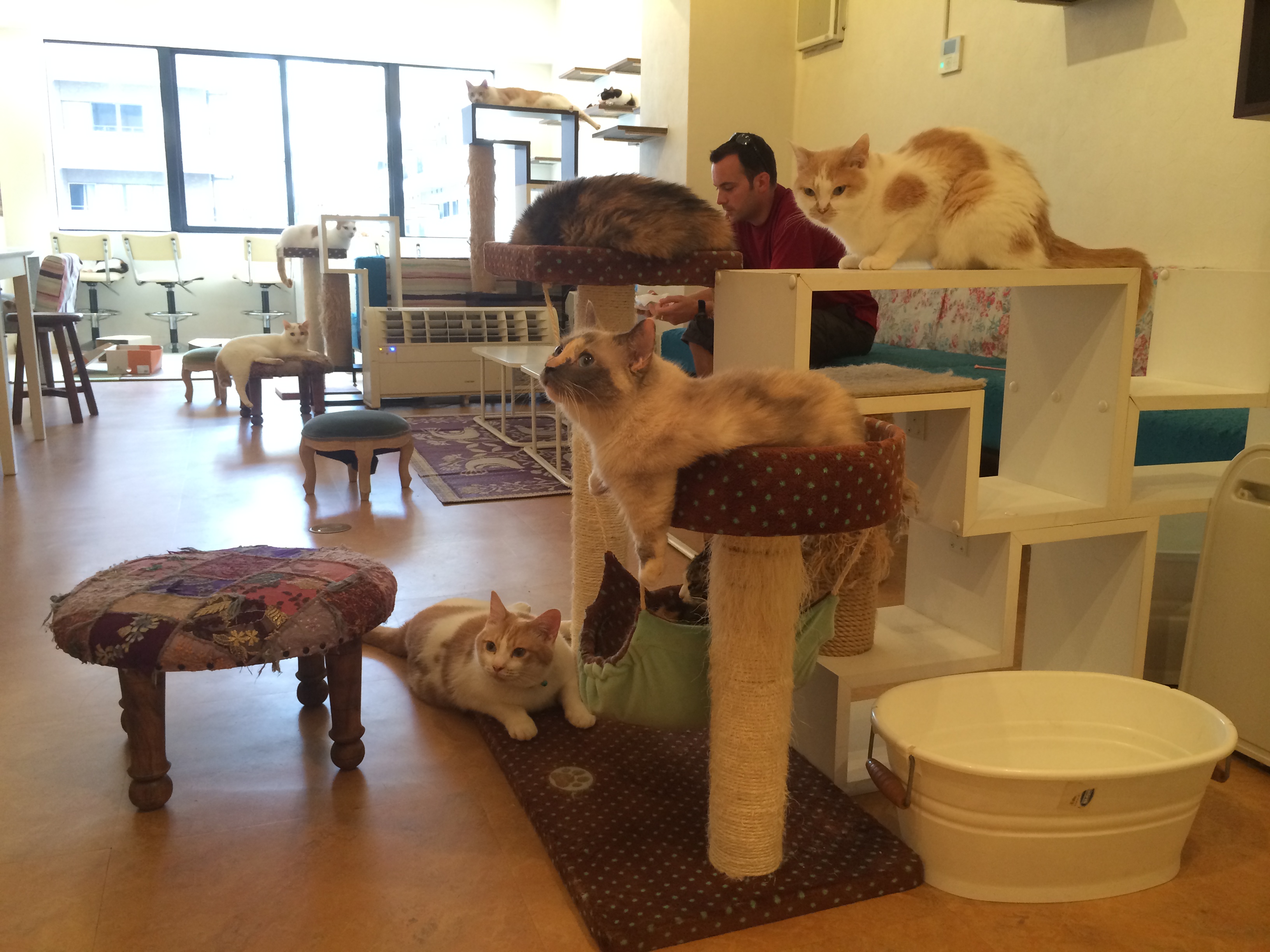

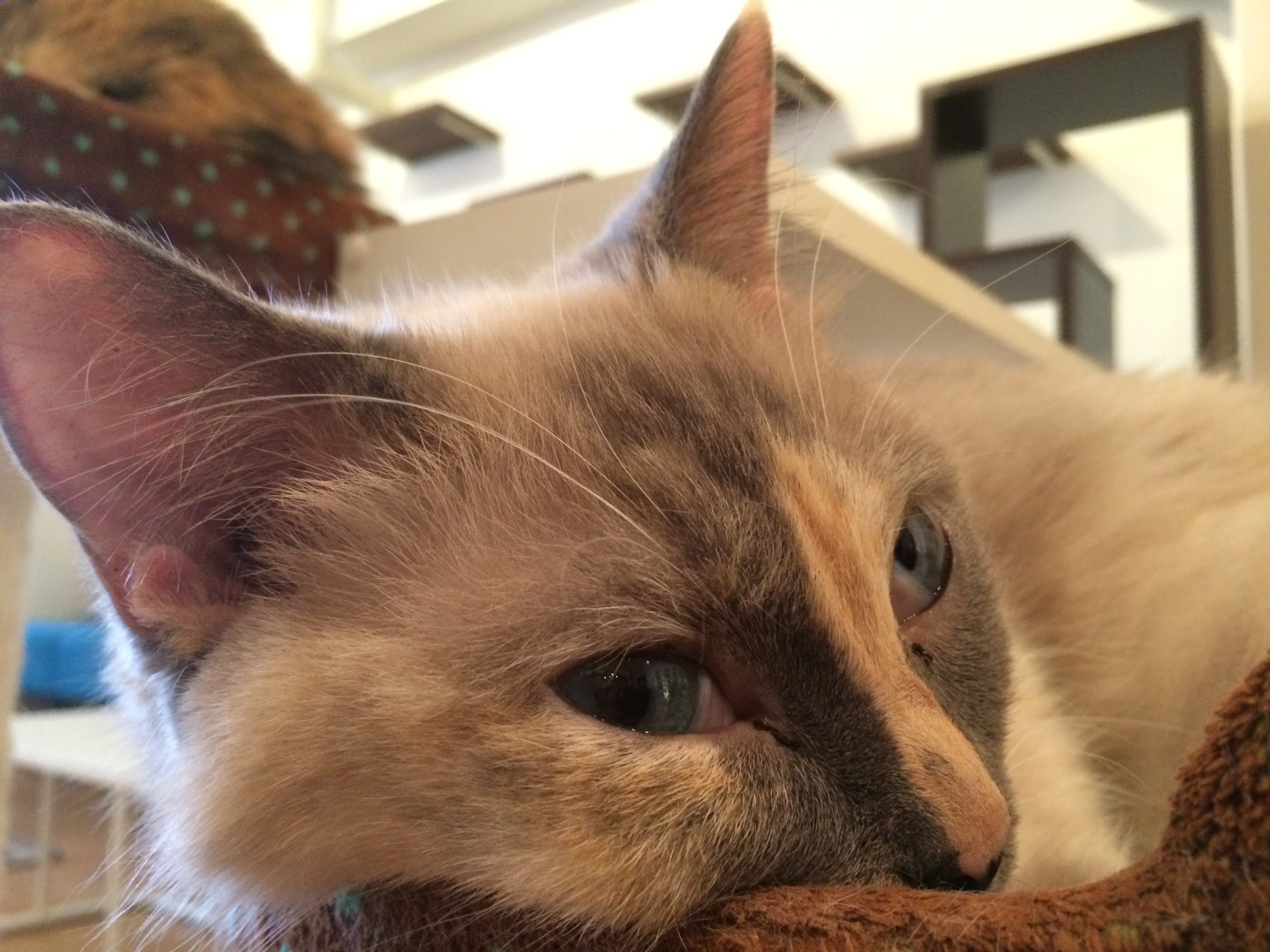
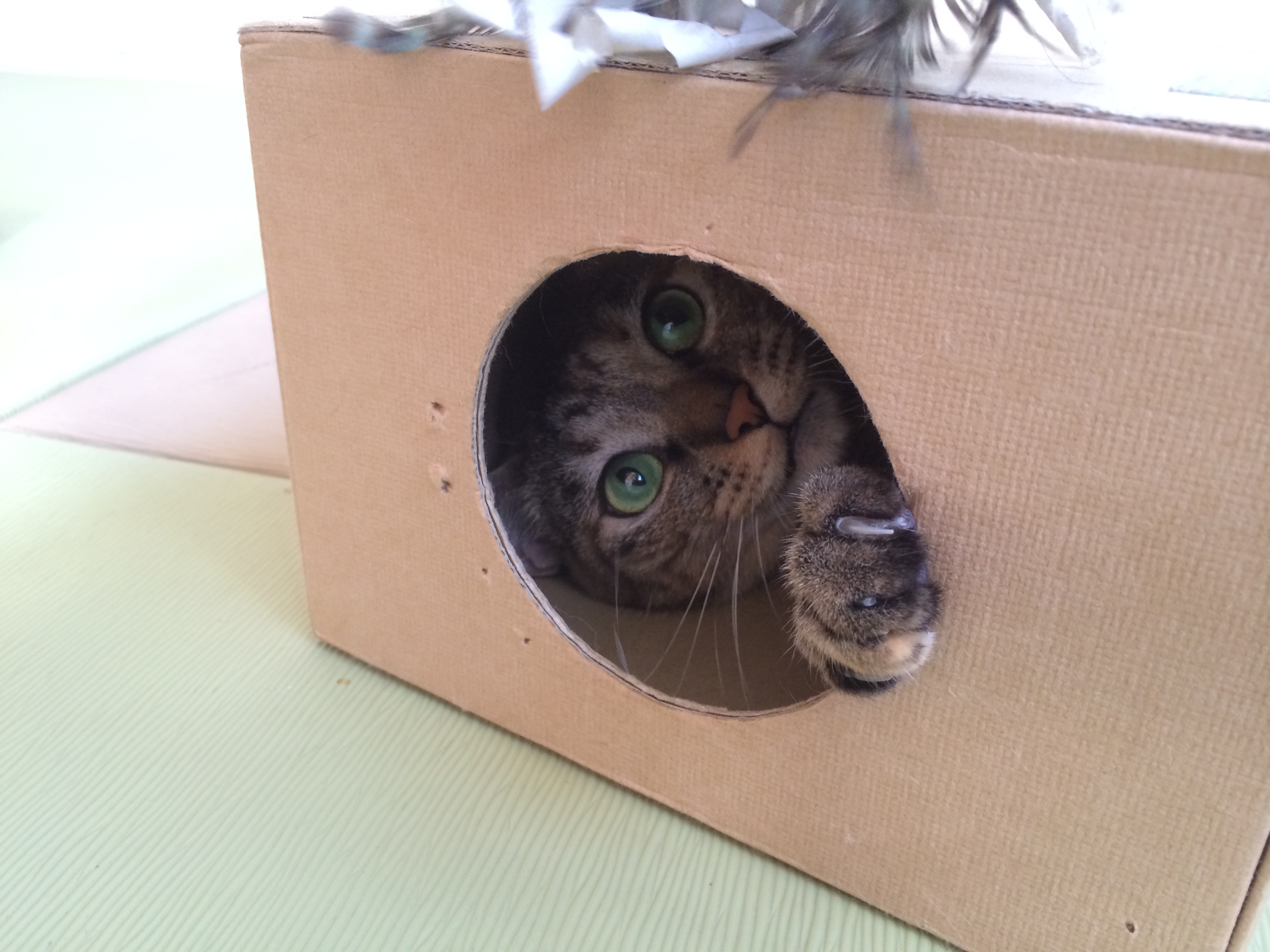
The notorious Shibuya Scramble has been, and will always be, a rush. In the mornings, it is much more pleasant. 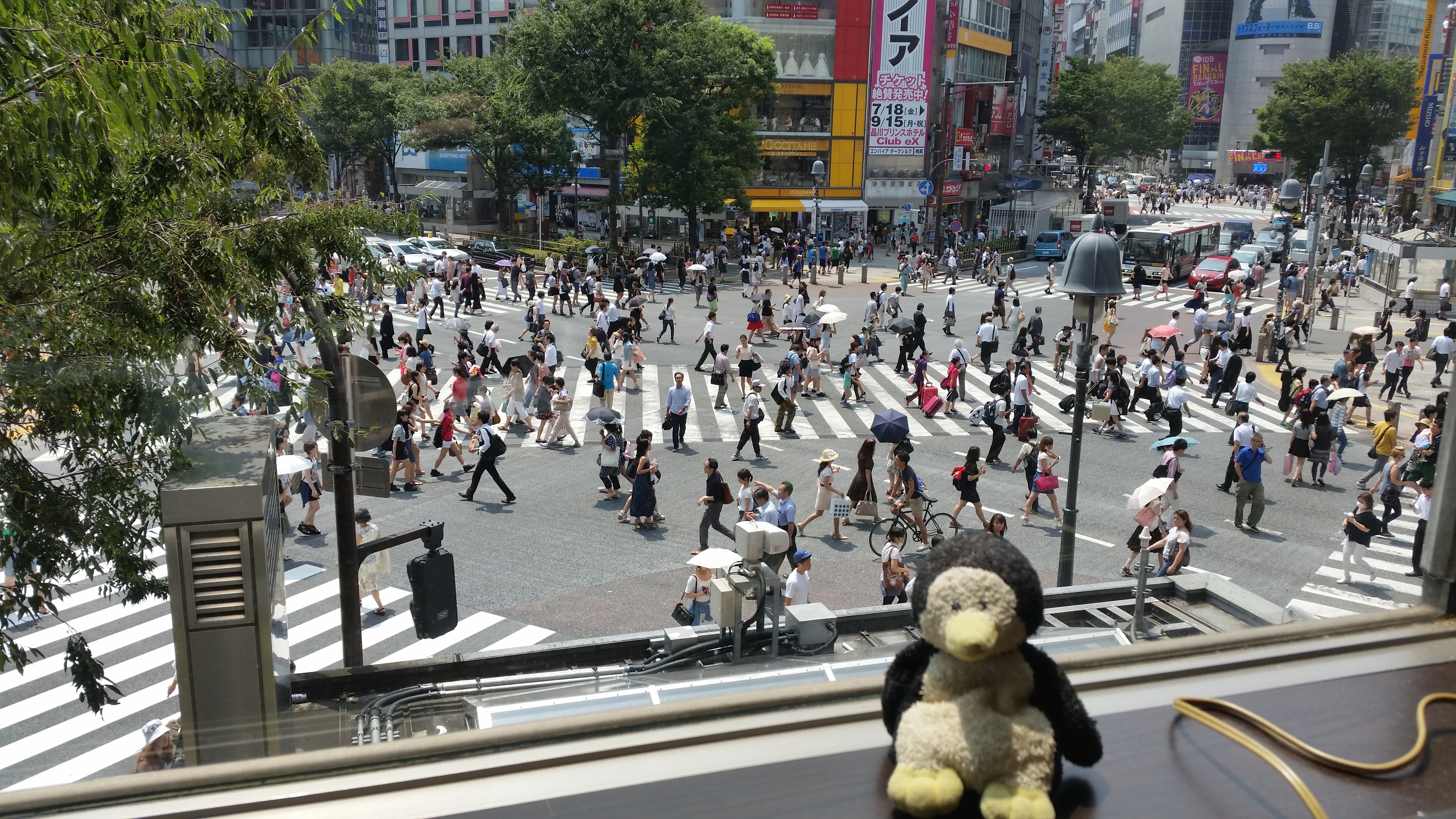
In the evenings, it is much more lively. 
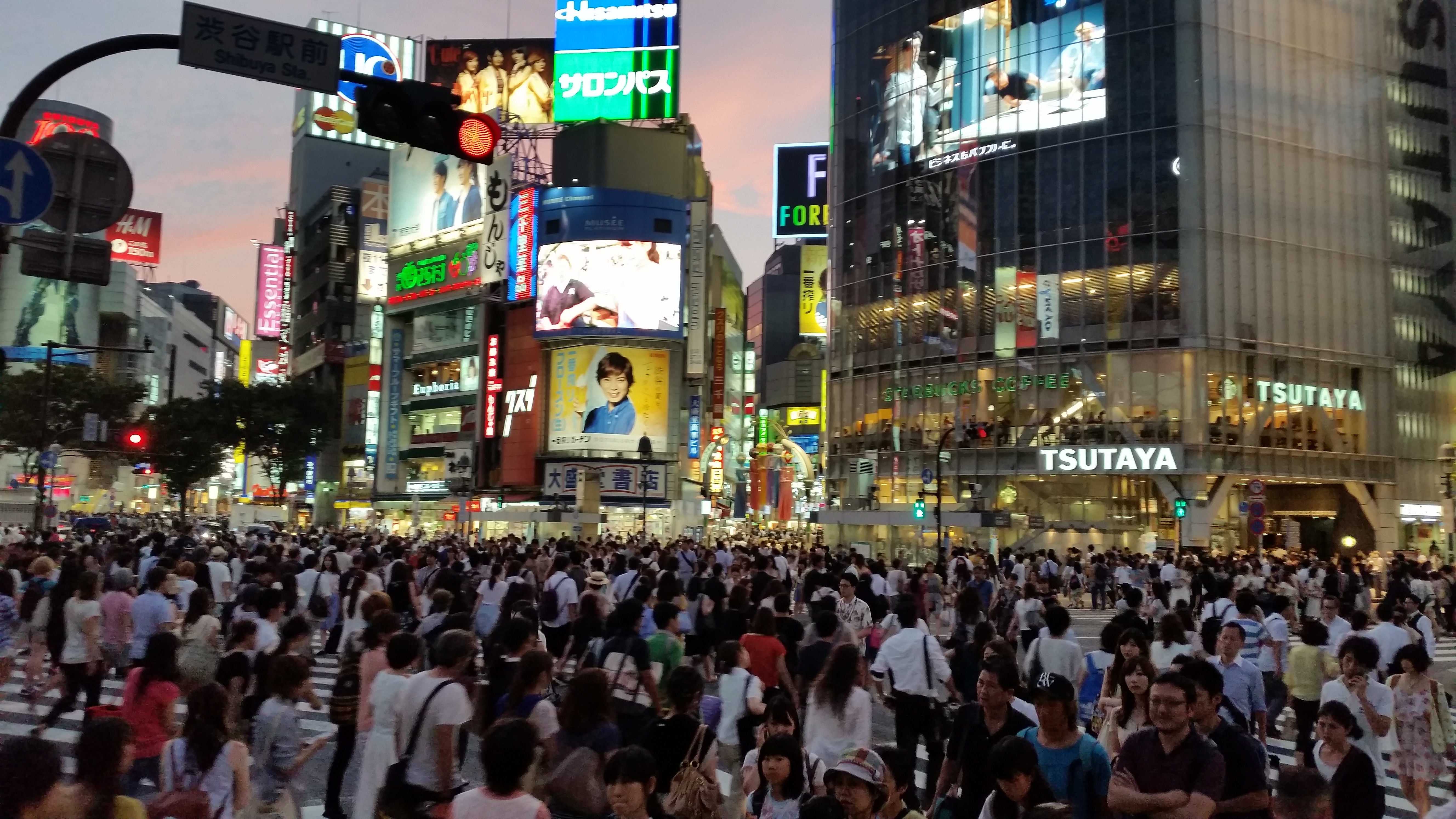
The view from the Tokyo Metropolitan Government Building would be better if…well..the view was interesting. Tokyo truly is a mass of concrete. At least there was no admission!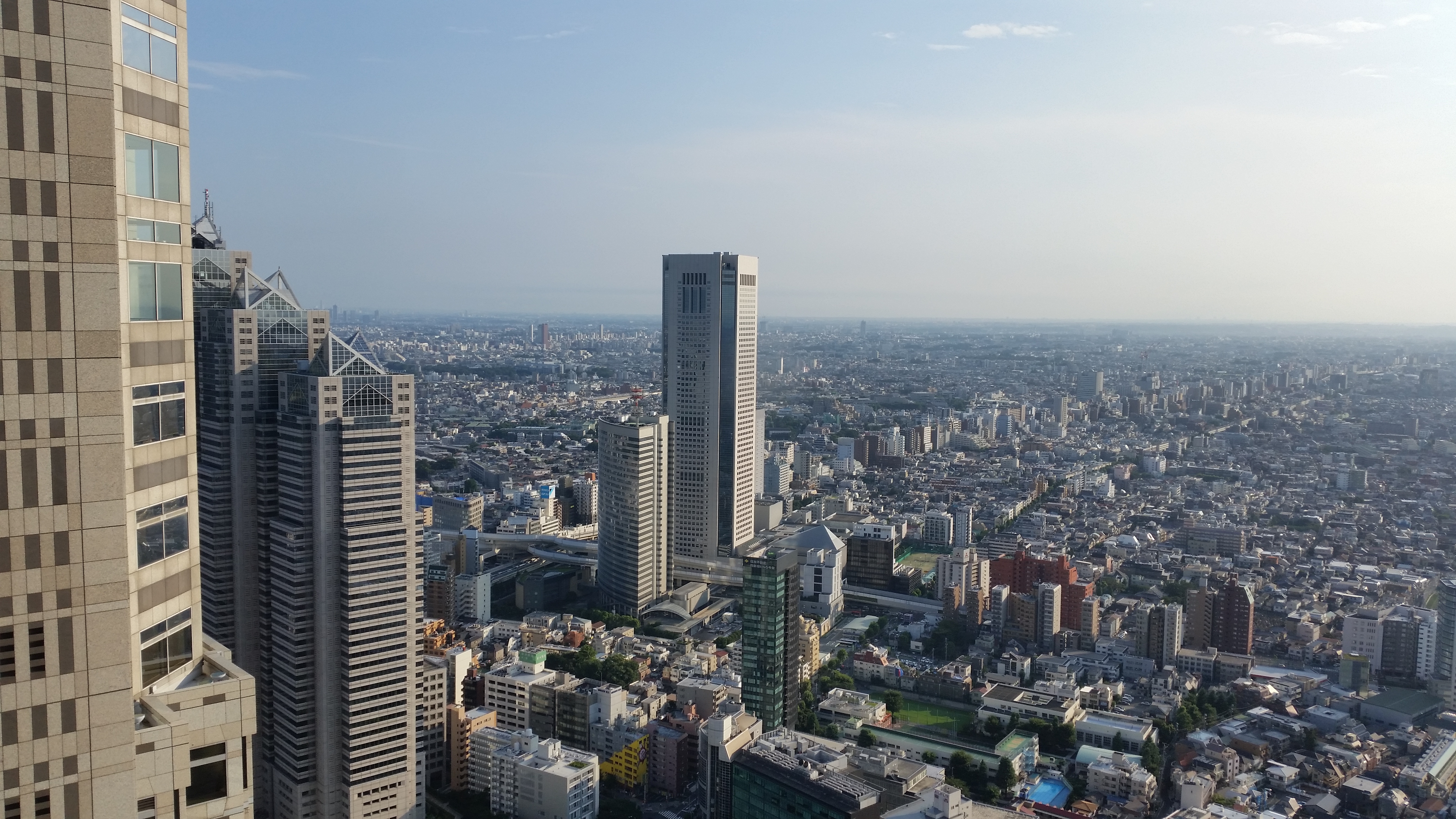
We took a quick stroll through Yoyogi Park for a break from the city. We found that Japanese temples were much more spacious, clean, and peaceful than any of the temples we saw in Southeast Asia.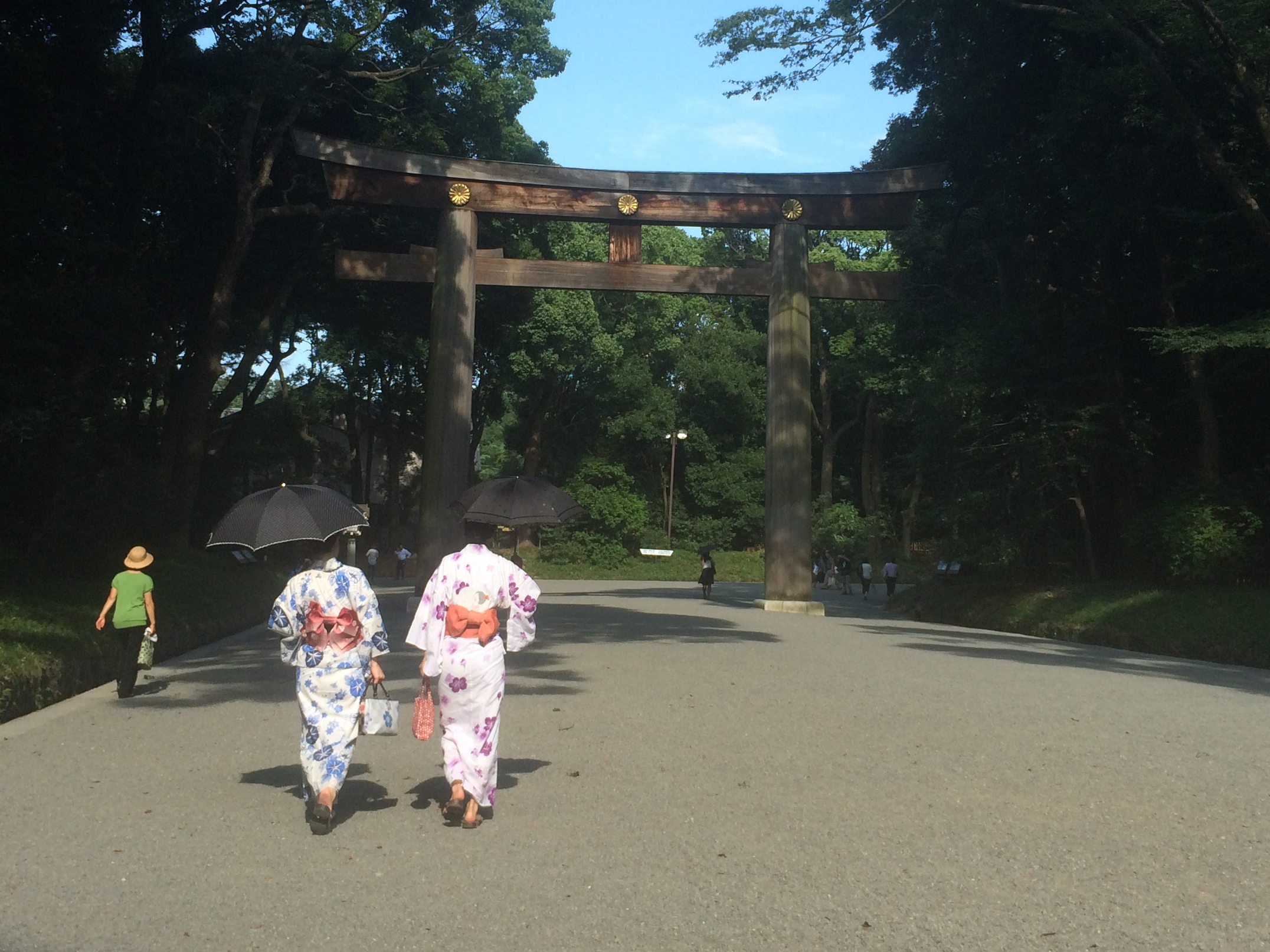
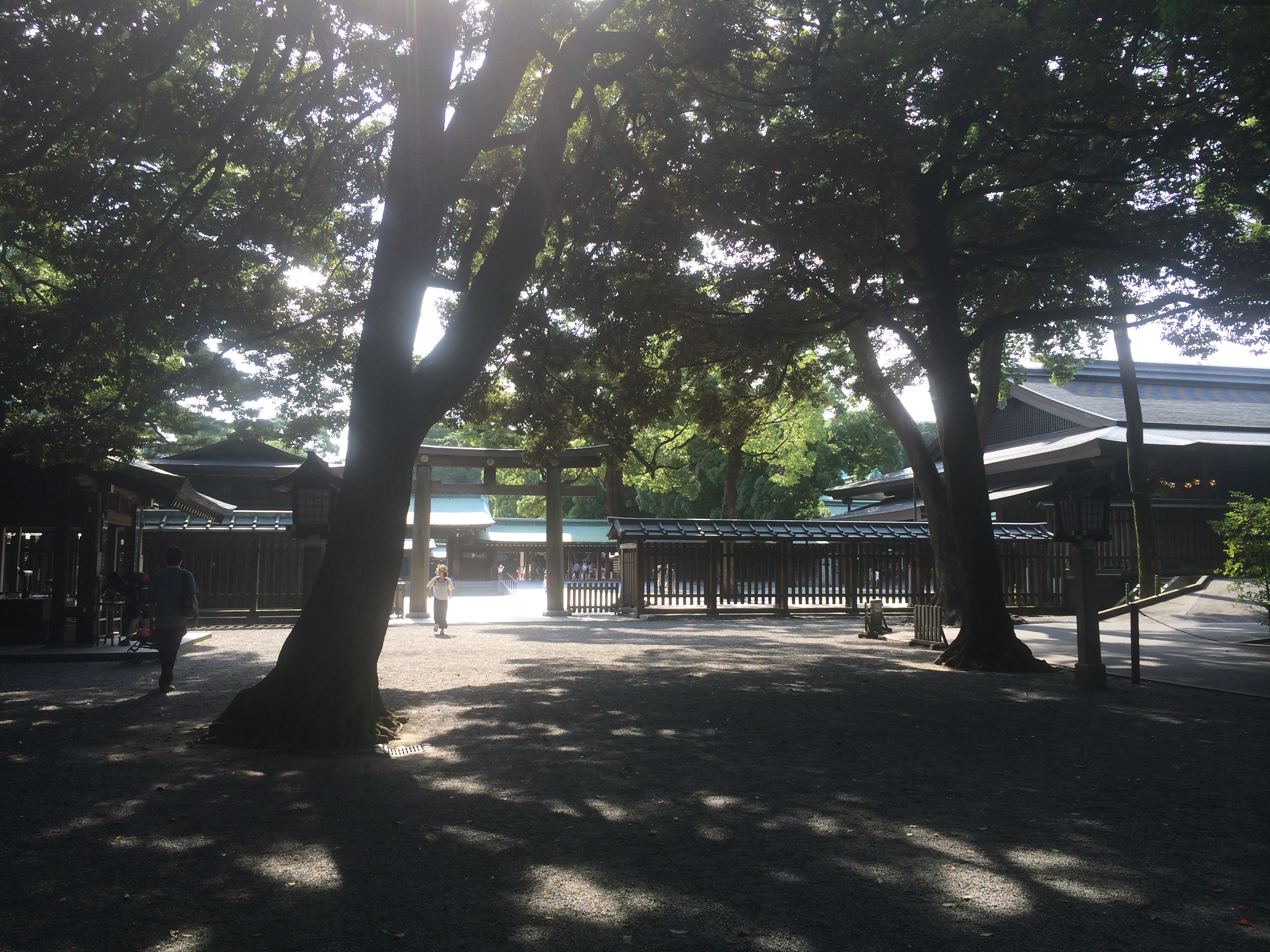
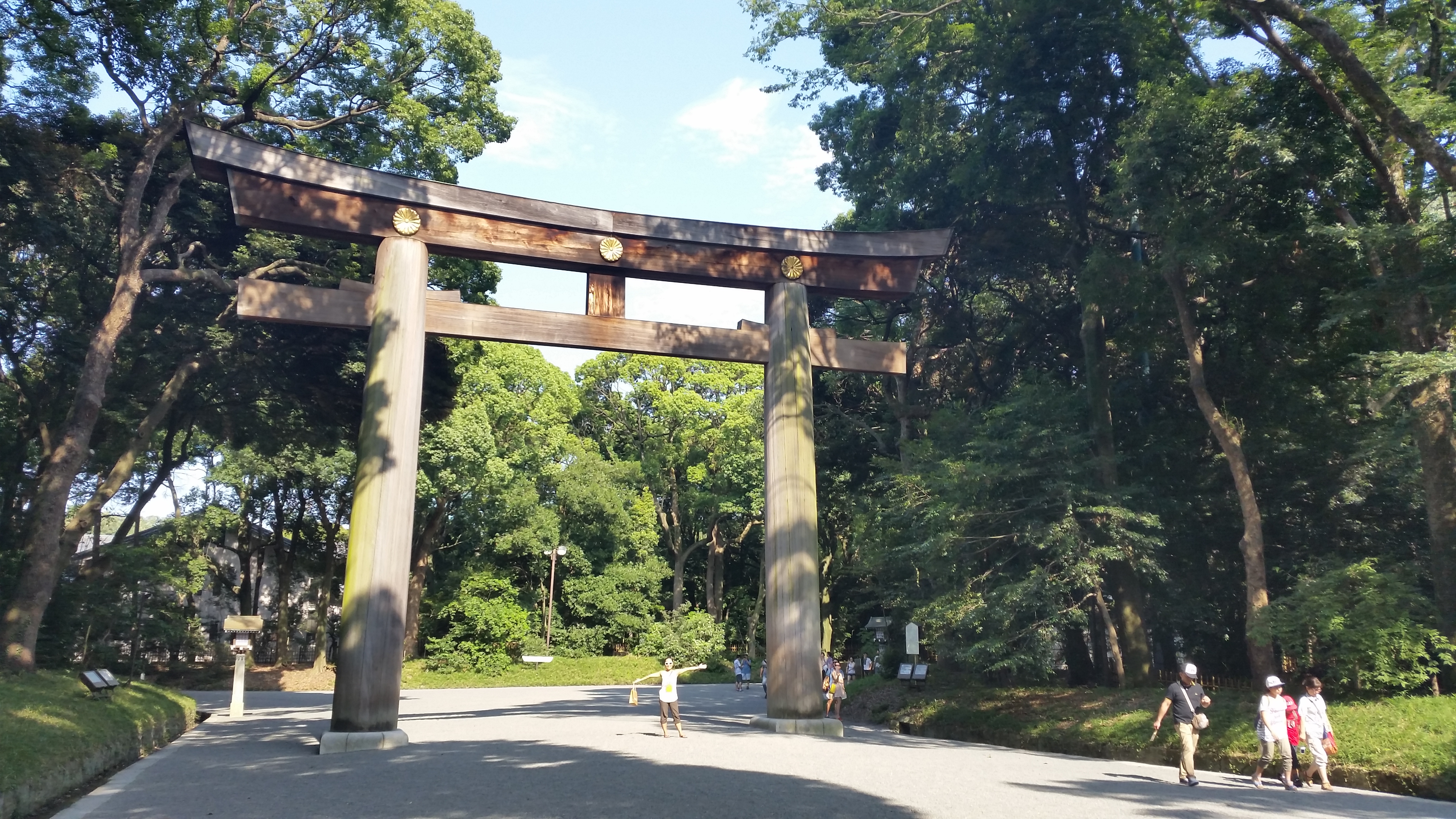
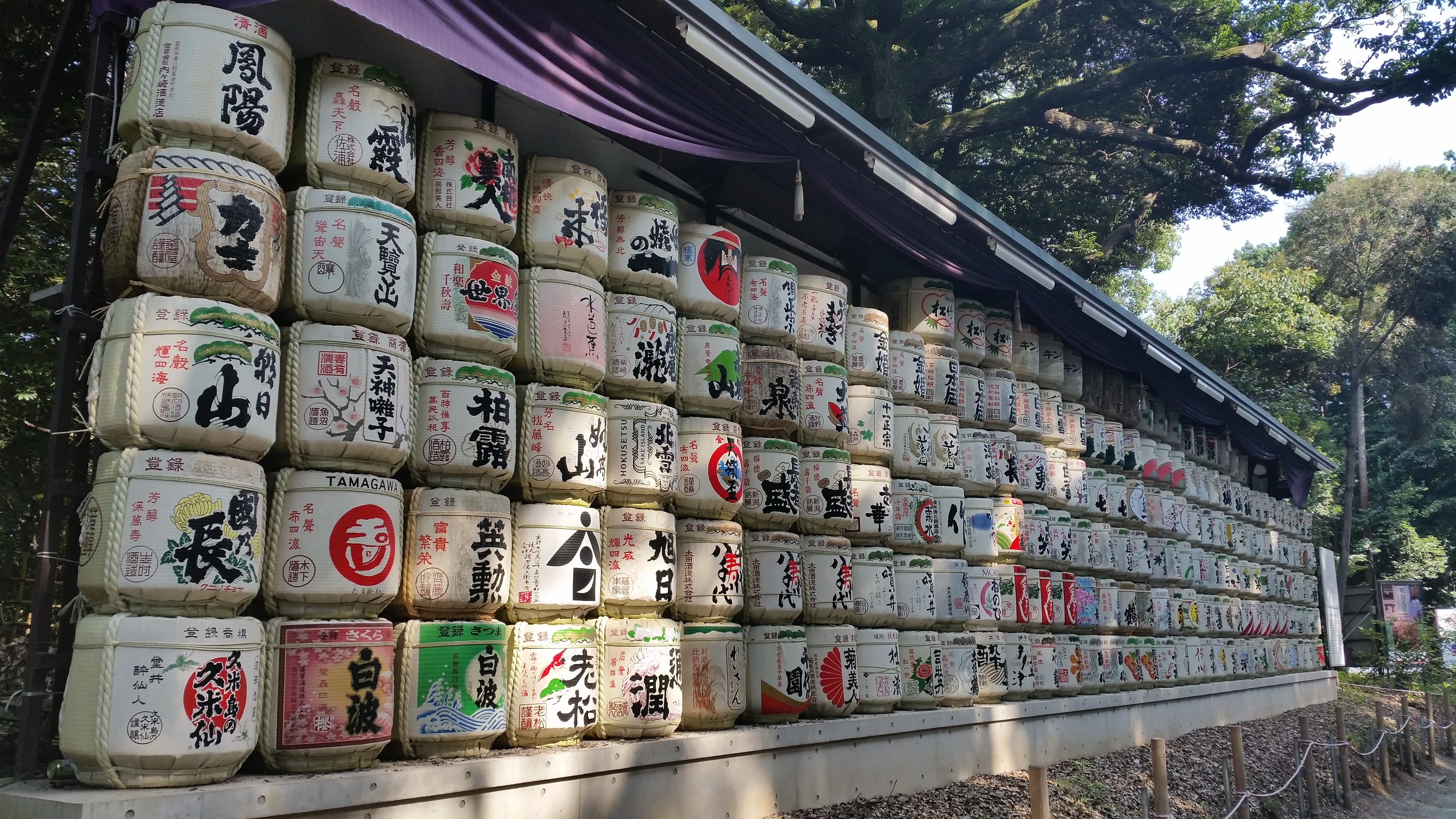
Other random Japanese quirkiness include…
The famous square-shaped watermelons!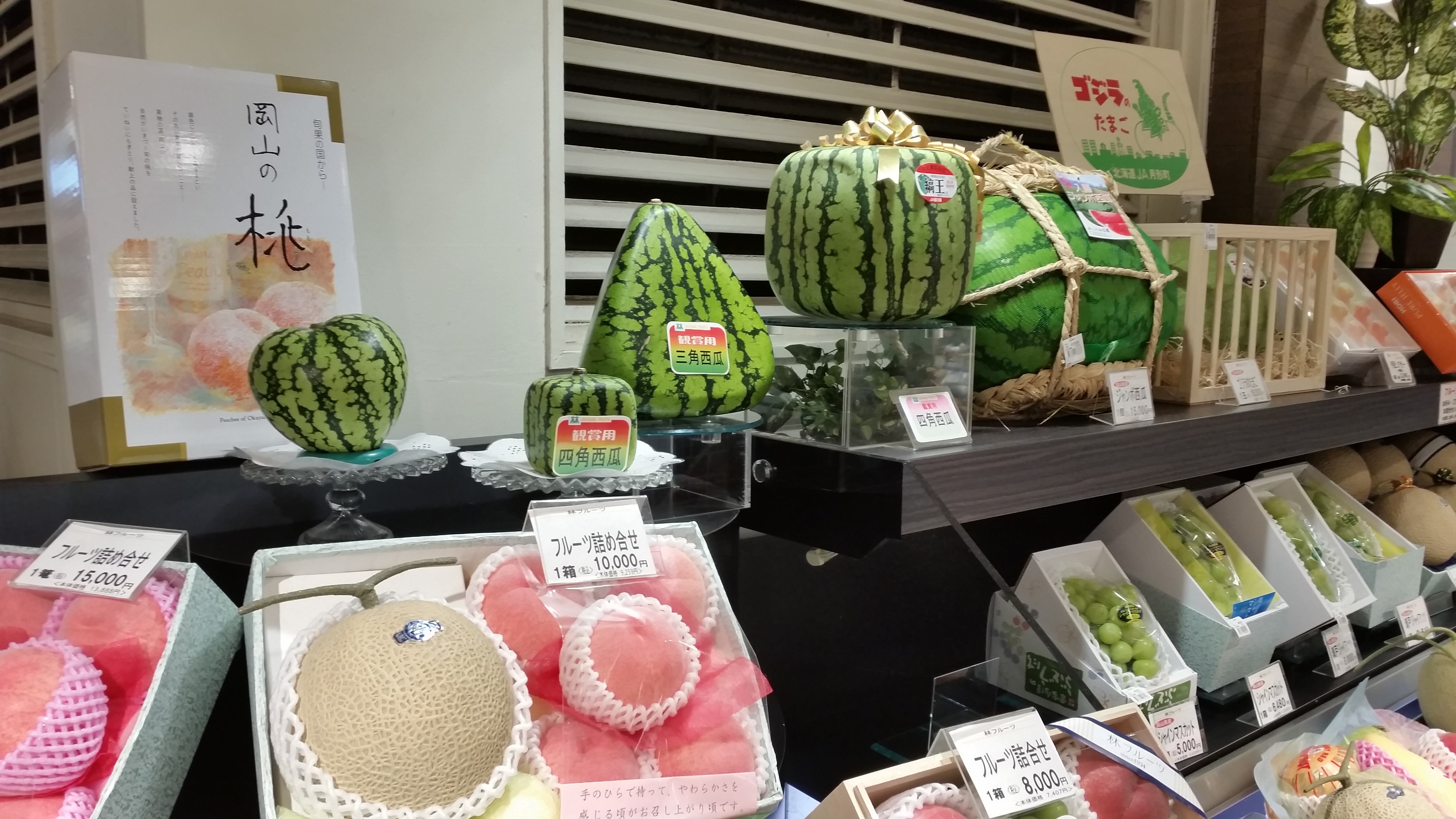
Unfortunately our stay in Tokyo did not last through the weekend. Although we couldn’t see Harajuku on a Sunday, I was still able to take some worthy photos on Takeshita Street. 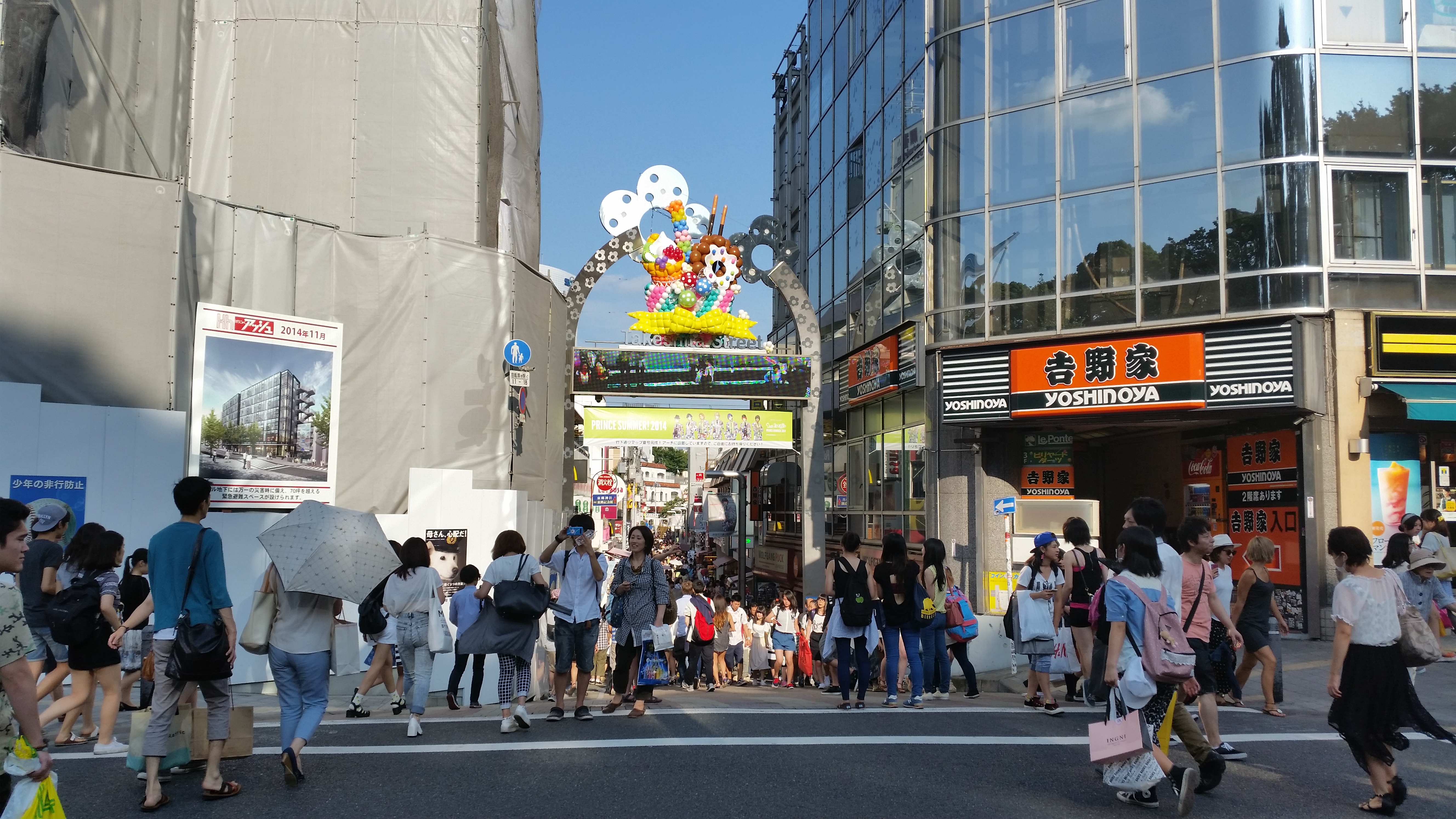
Harajuku is the birthplace of Tokyo’s latest fashion trends. Both Japanese men and women come here to see and be seen. It’s not just the Lolita girls or cosplay locals who make appearances—all the people who stroll through Takeshita street wear flashy outfits that are more on par with costumes in my opinion, but I dizzied myself by looking left and right every few seconds to enjoy the variety of hairstyles, socks, shoes, piercings, tattoos, etc. It’s obvious that people carefully select their outfits before coming here to enjoy an afternoon. Harajuku has been and will always be one of my favorite places to people watch. 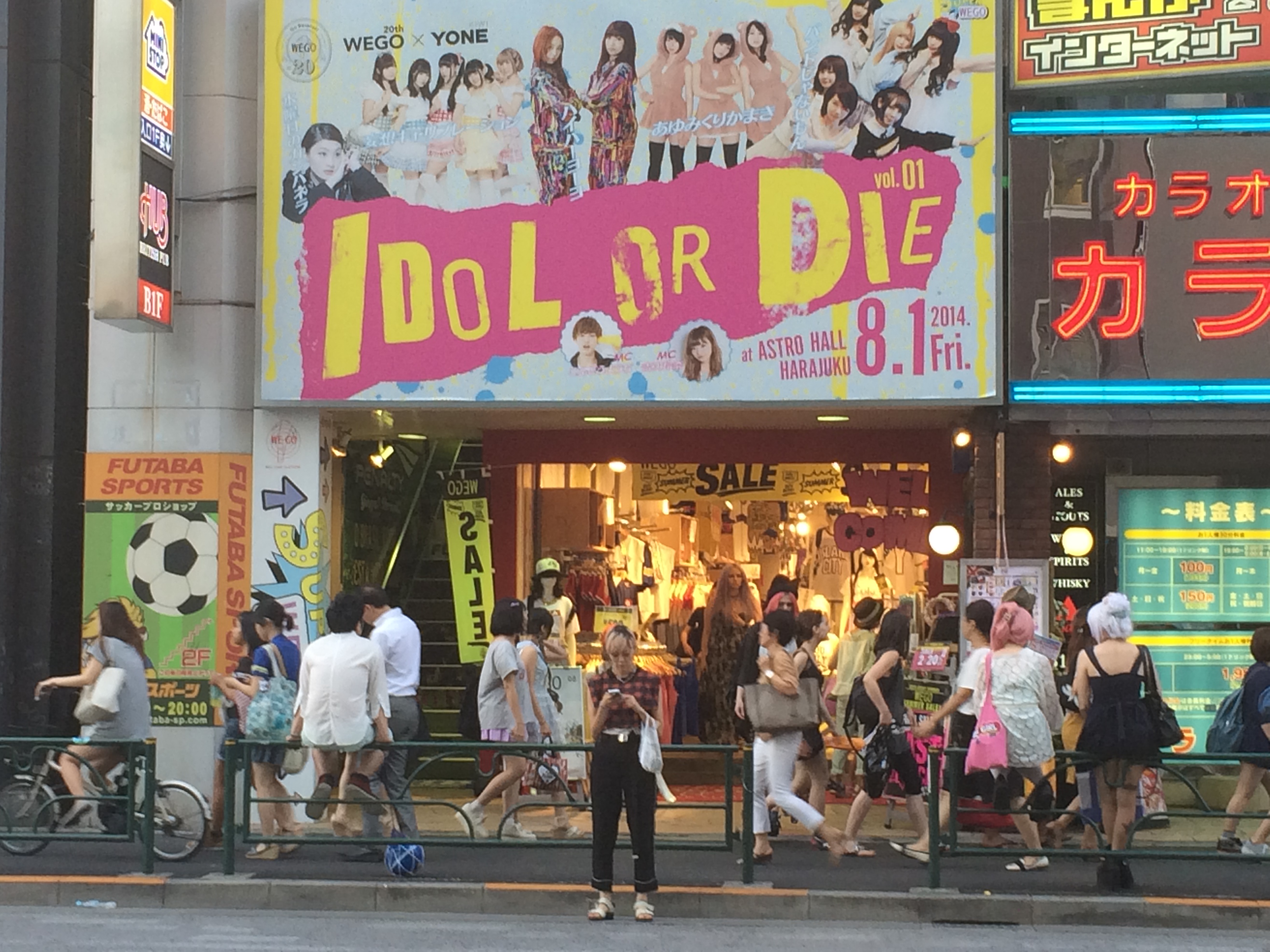
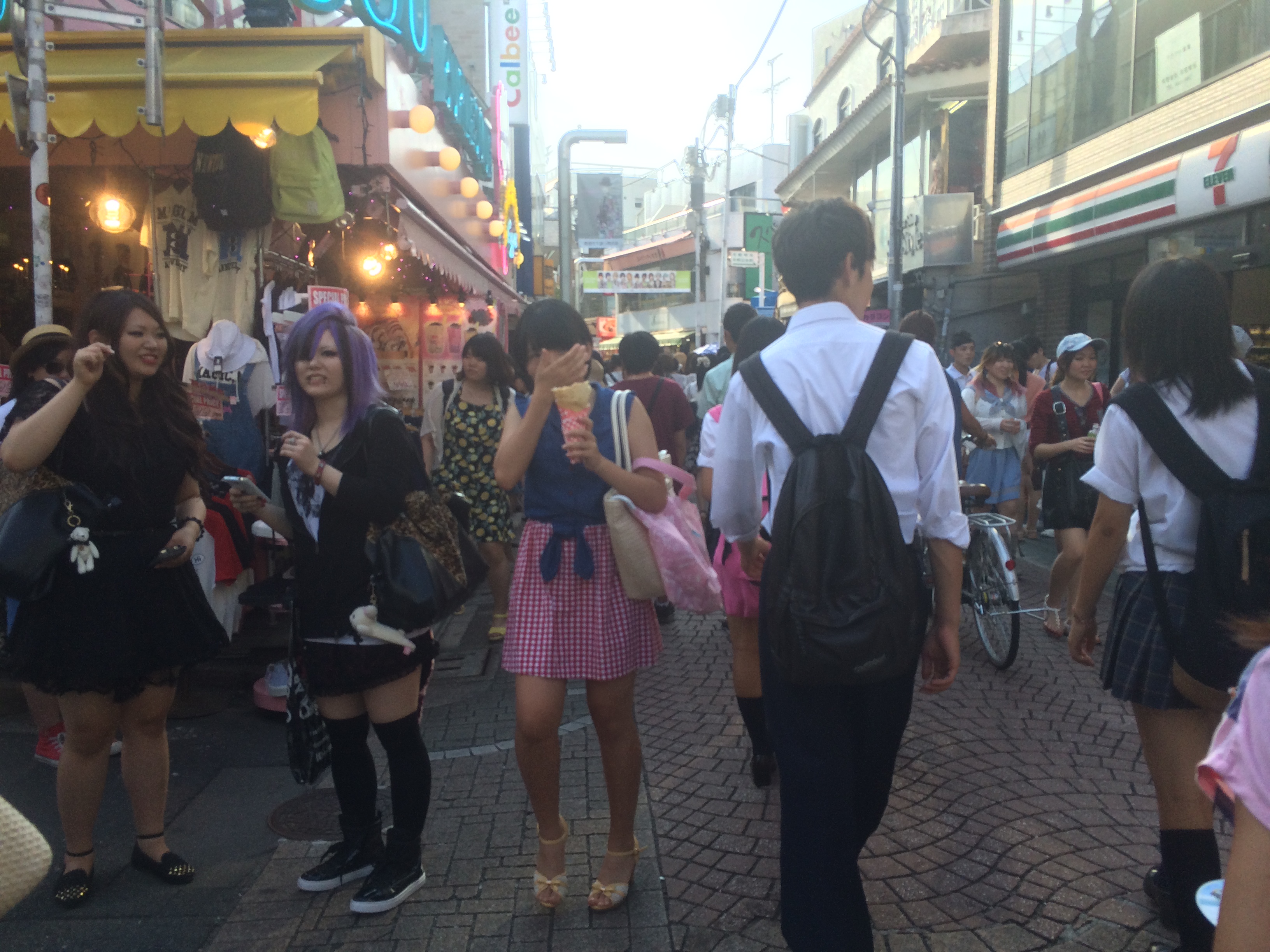
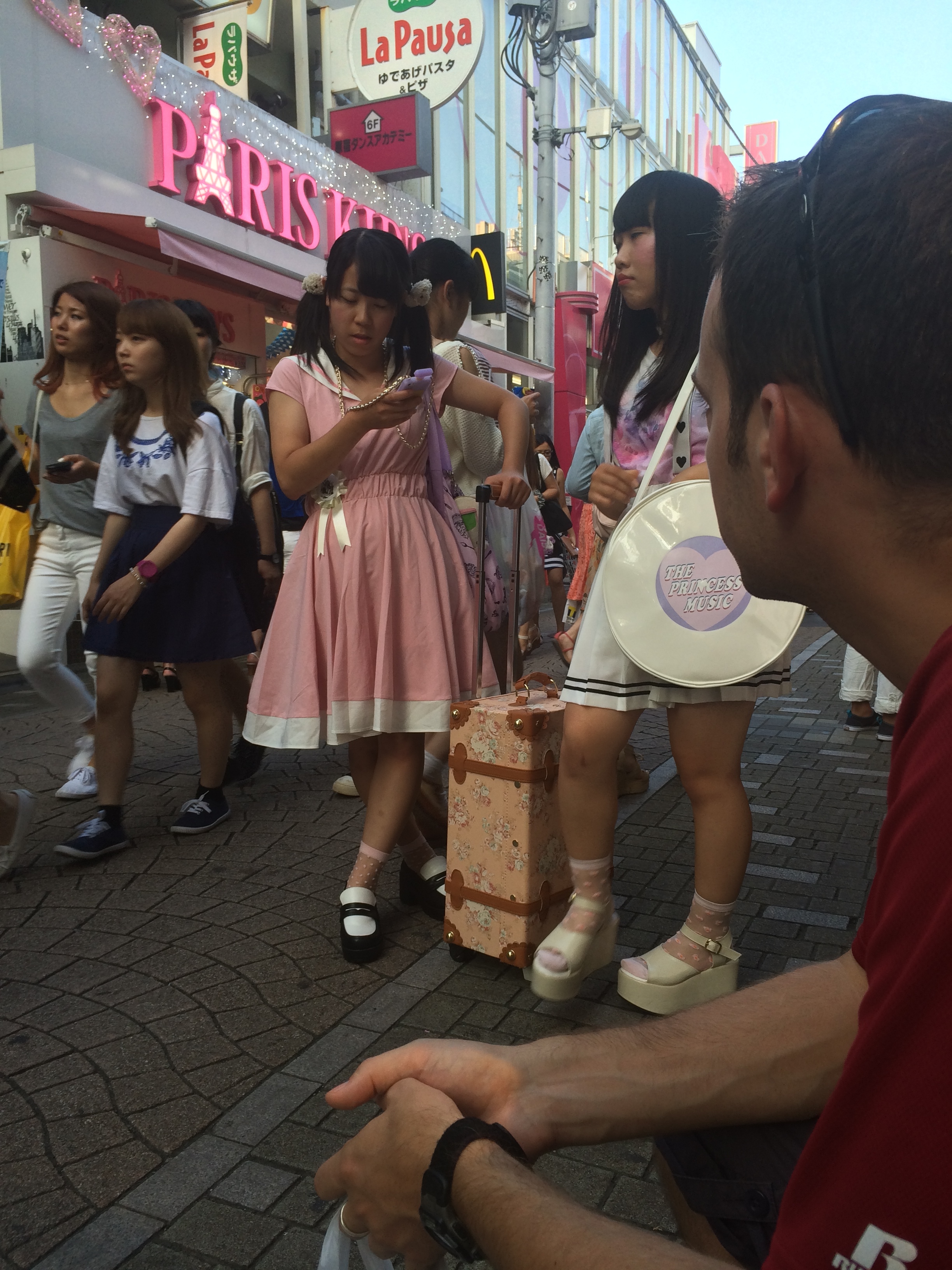
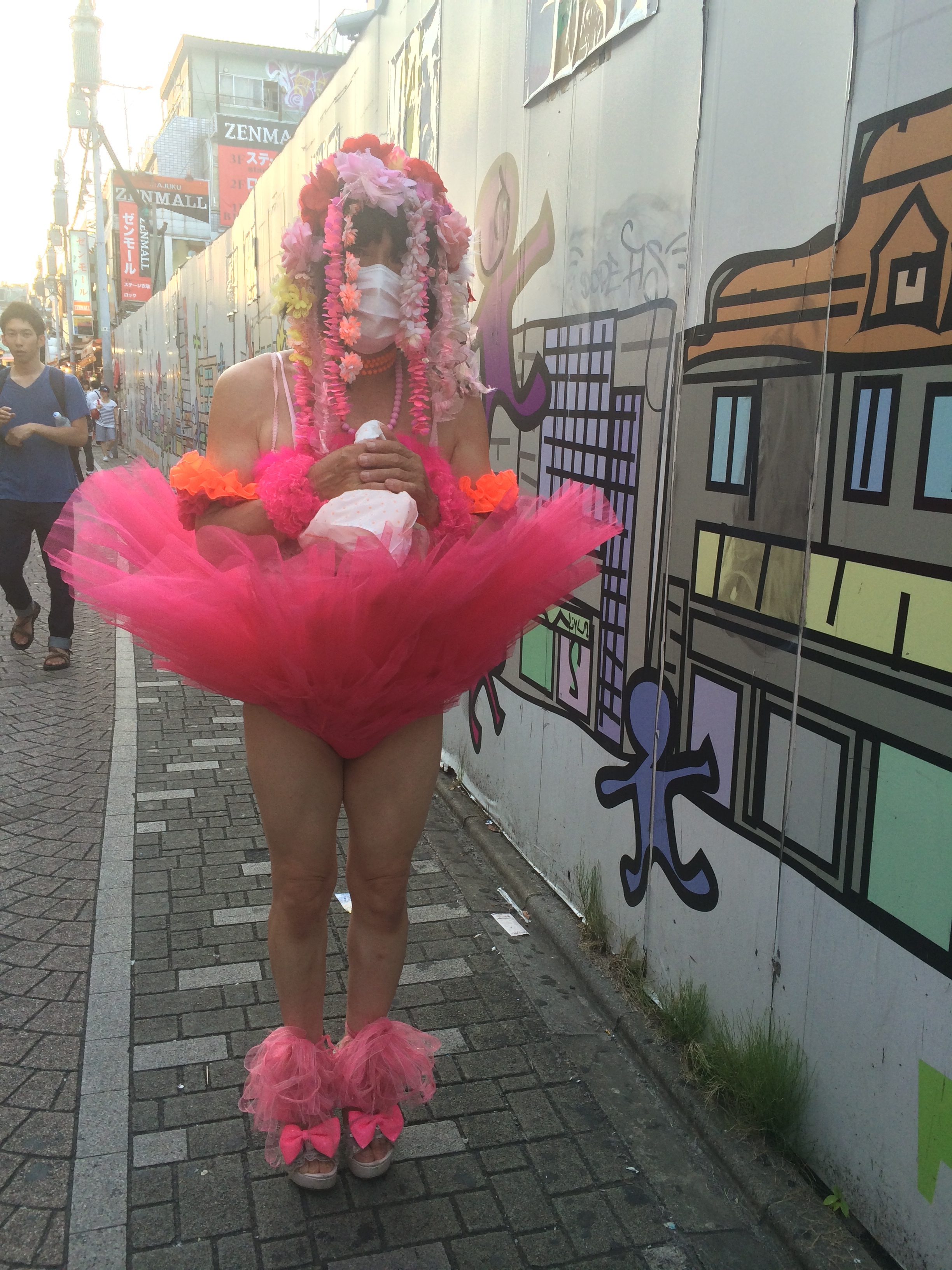
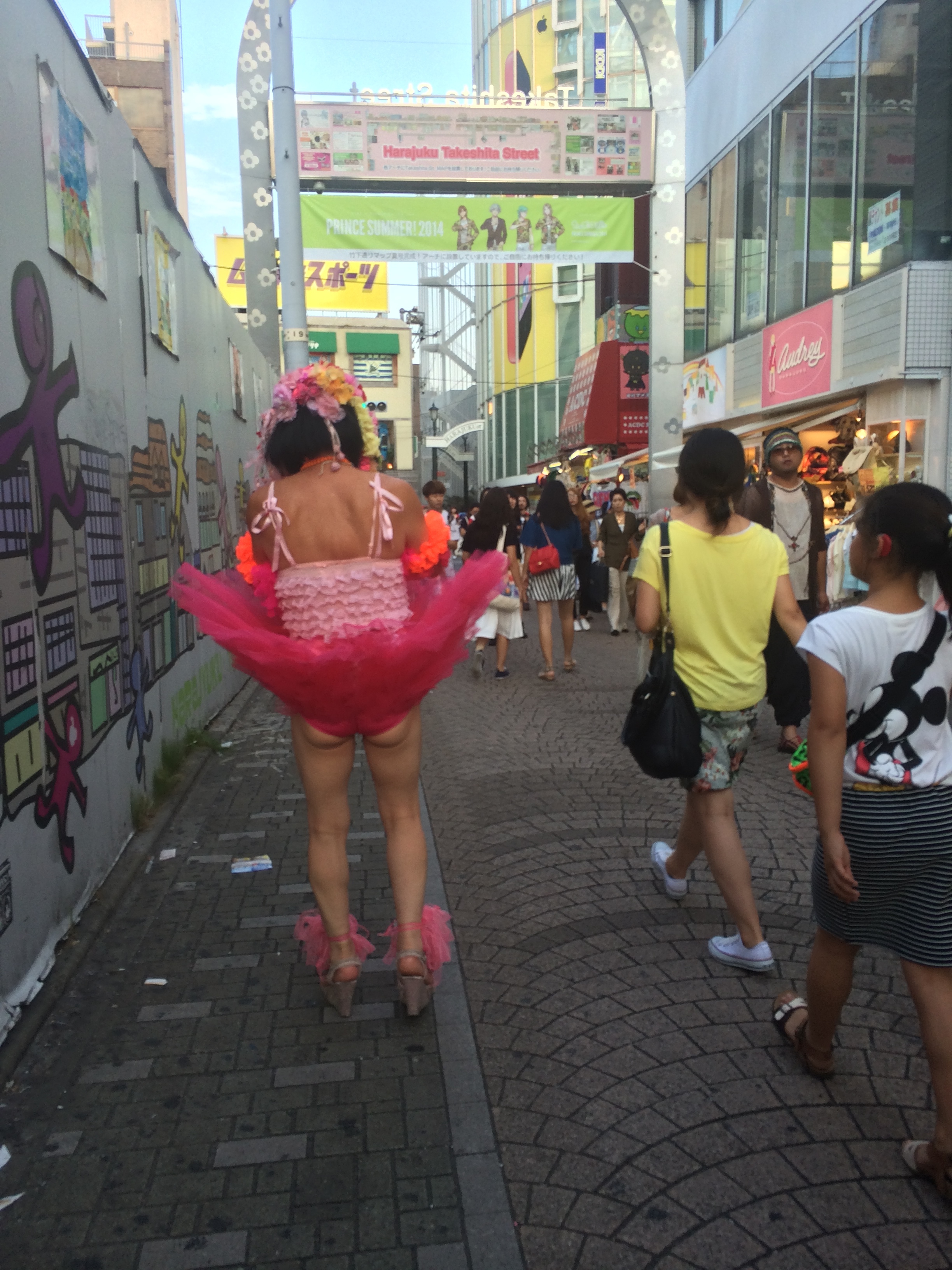
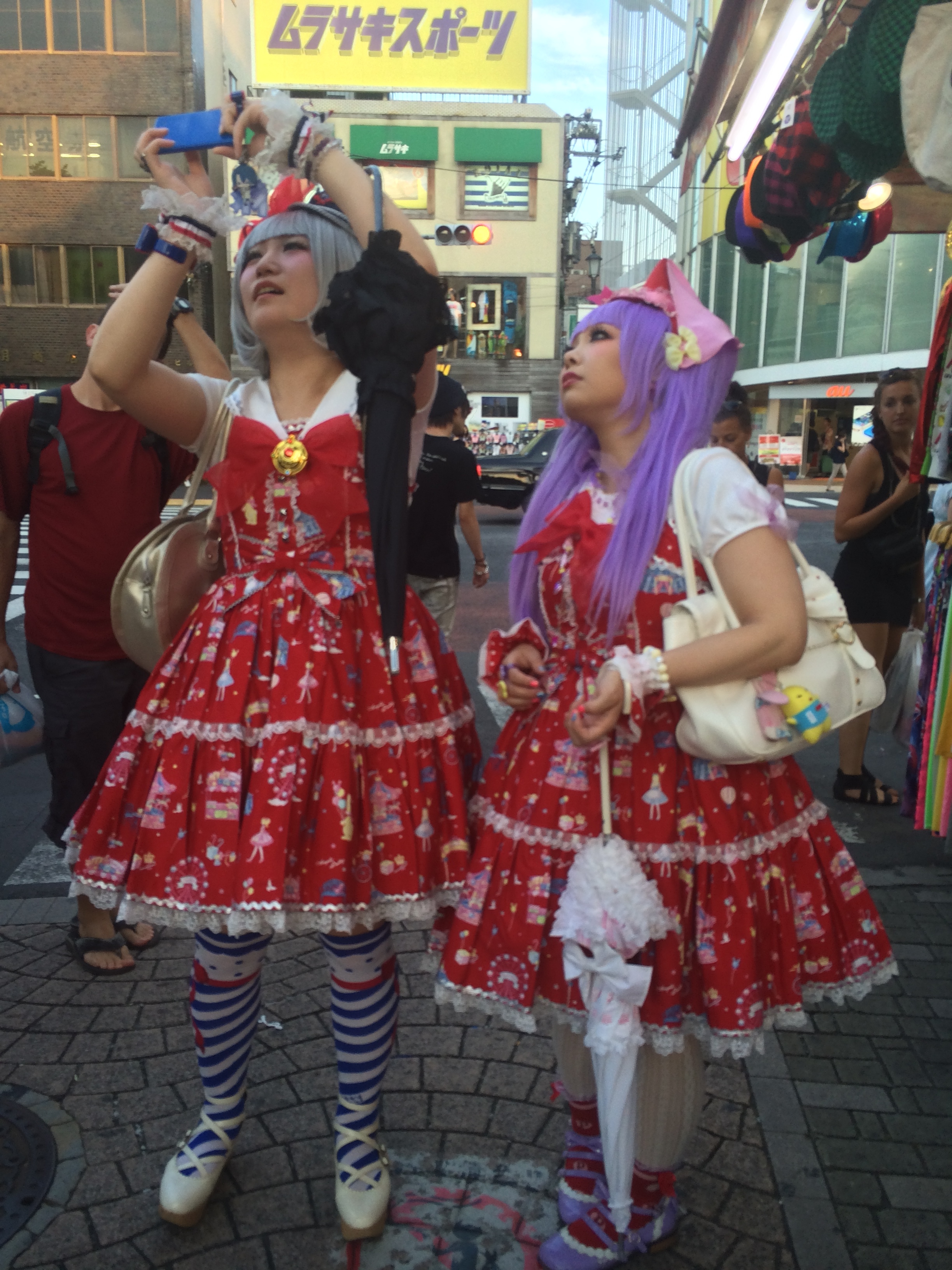
Hands down, our absolute favorite place was Akihabara. The tall department stores filled with every electronic knick-knack you can possibly dream of are plastered with anime-style advertisements.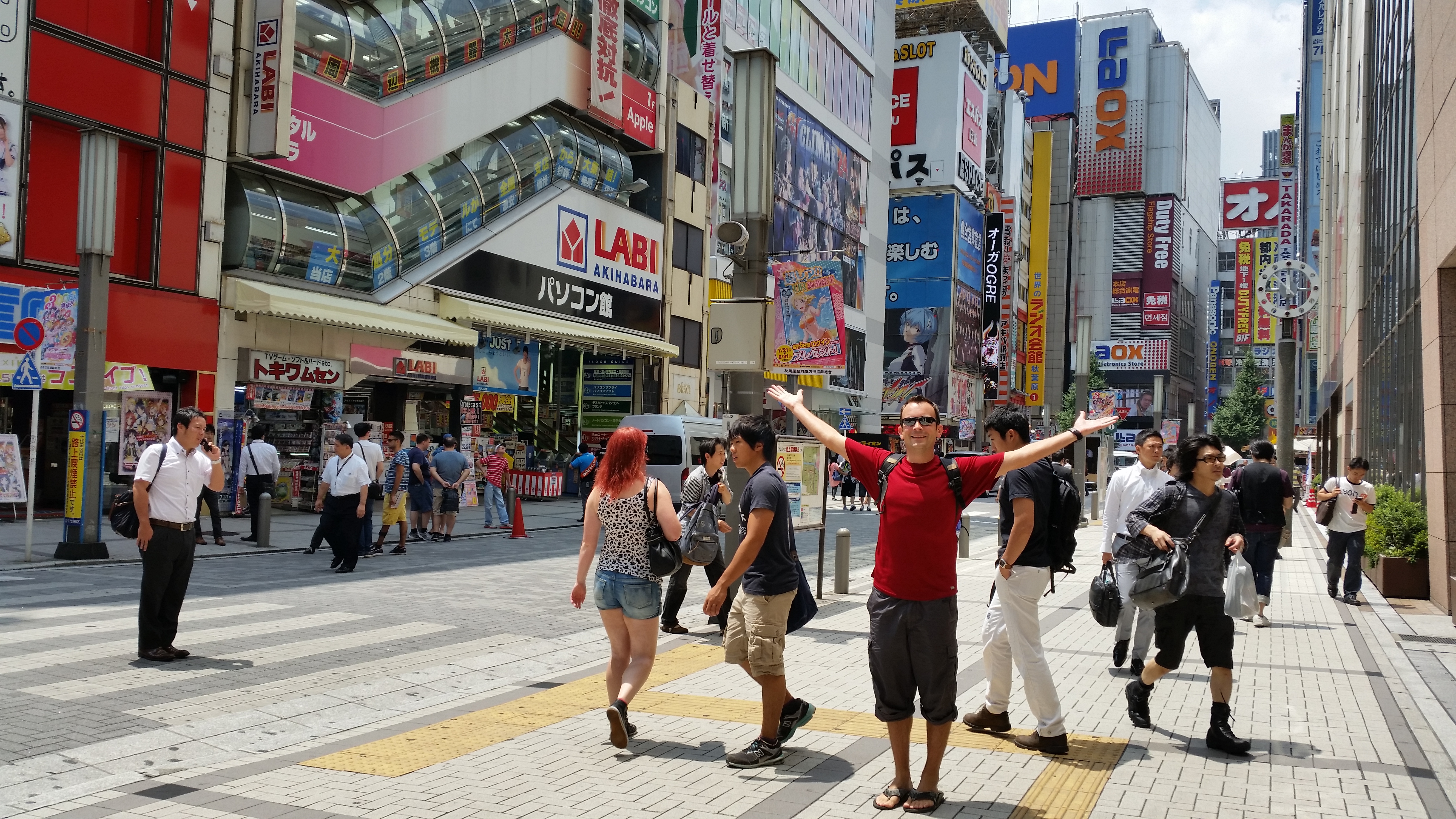
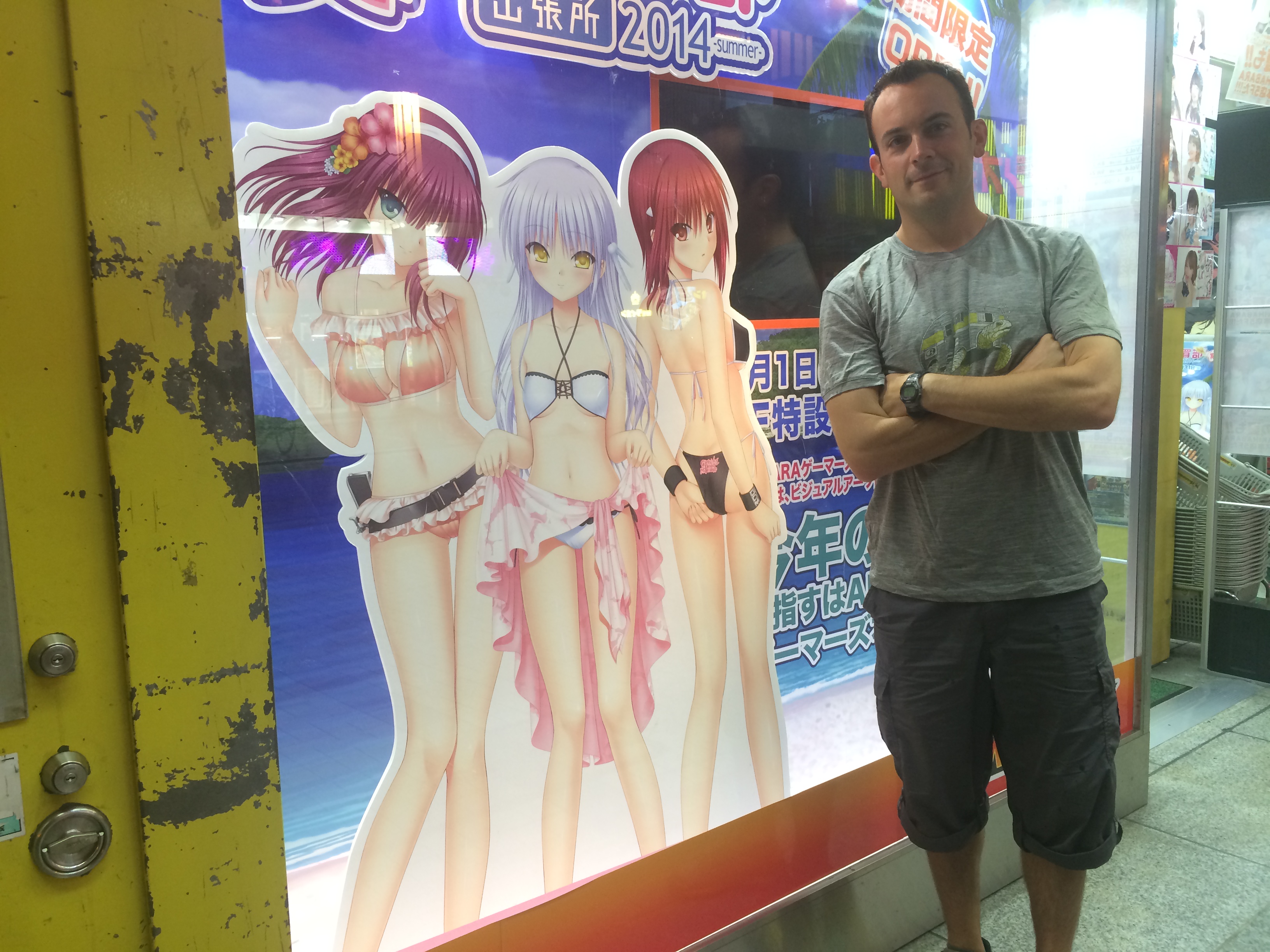
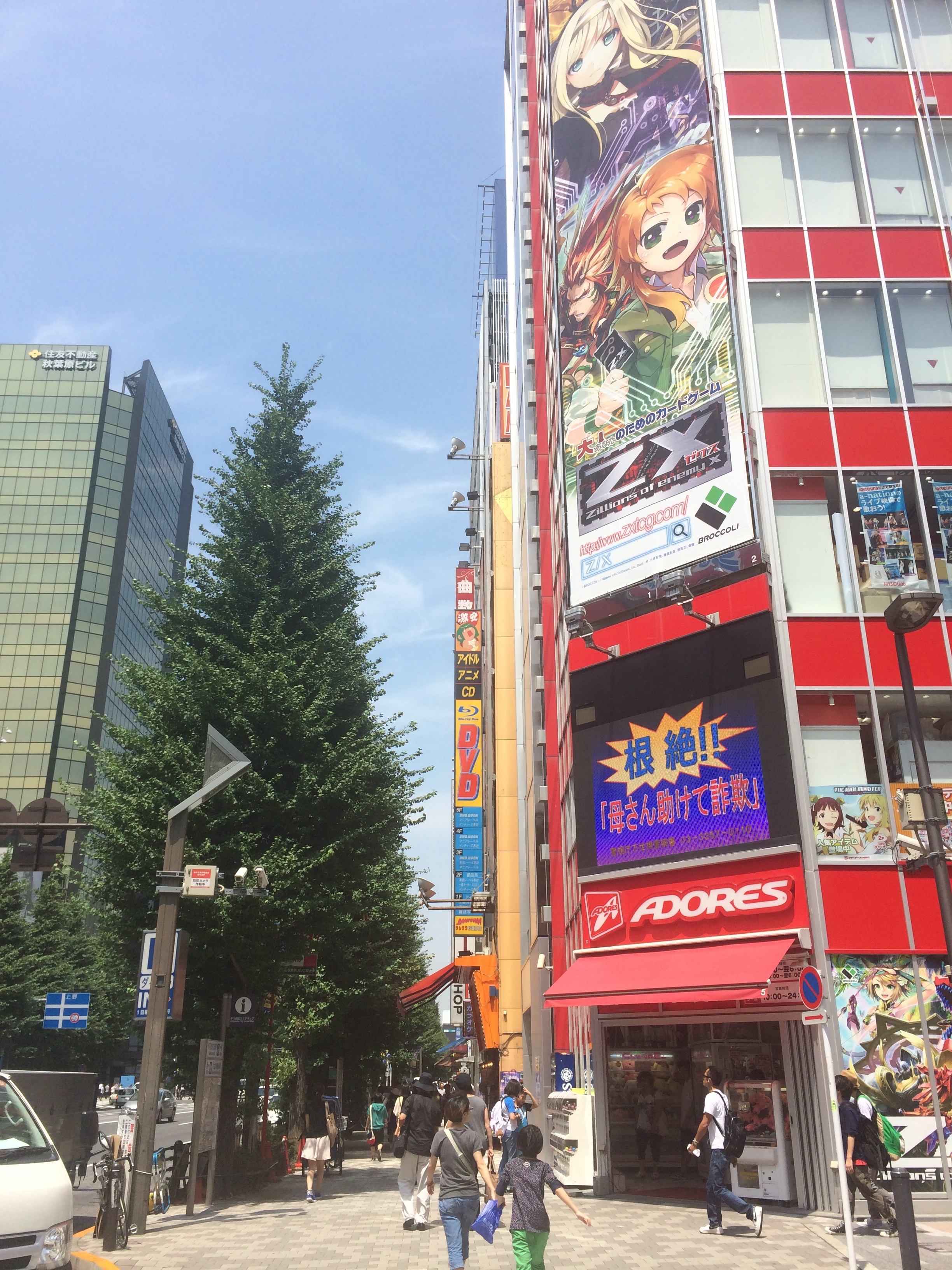
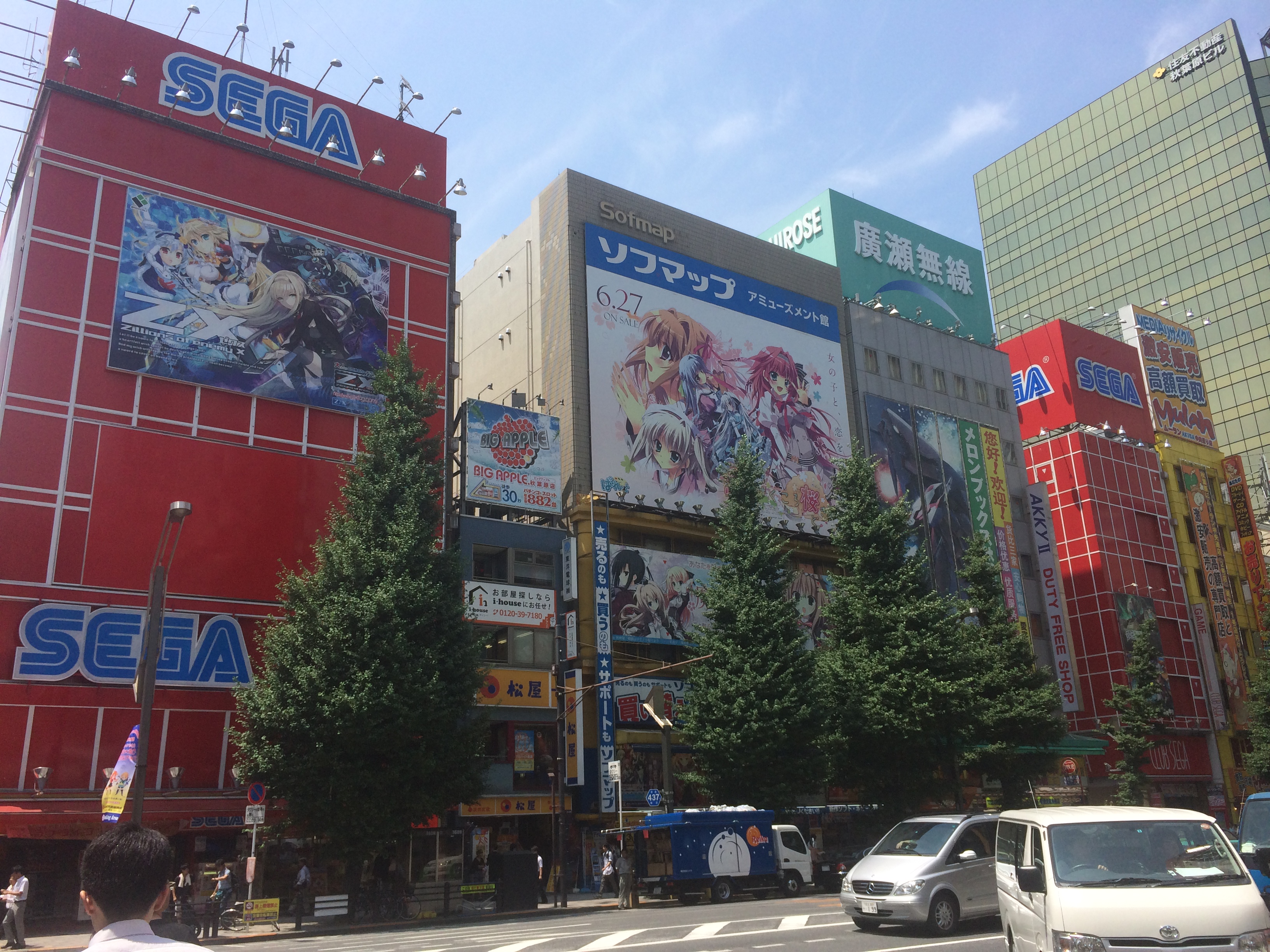
In addition to the electronic goodies, there are numerous duty-free shops and a number of silly, rigged space-machine games filled with the wackiest prizes.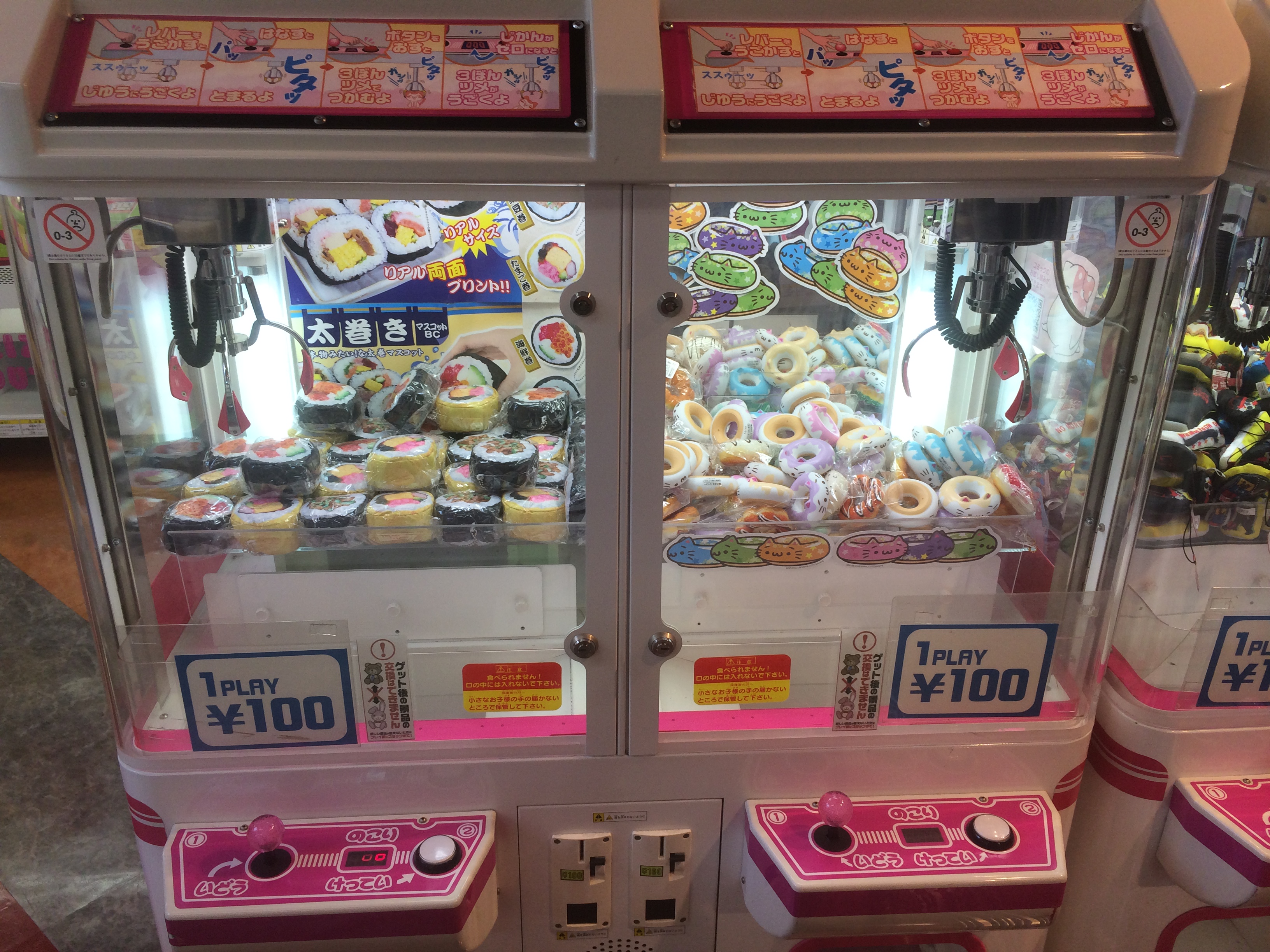
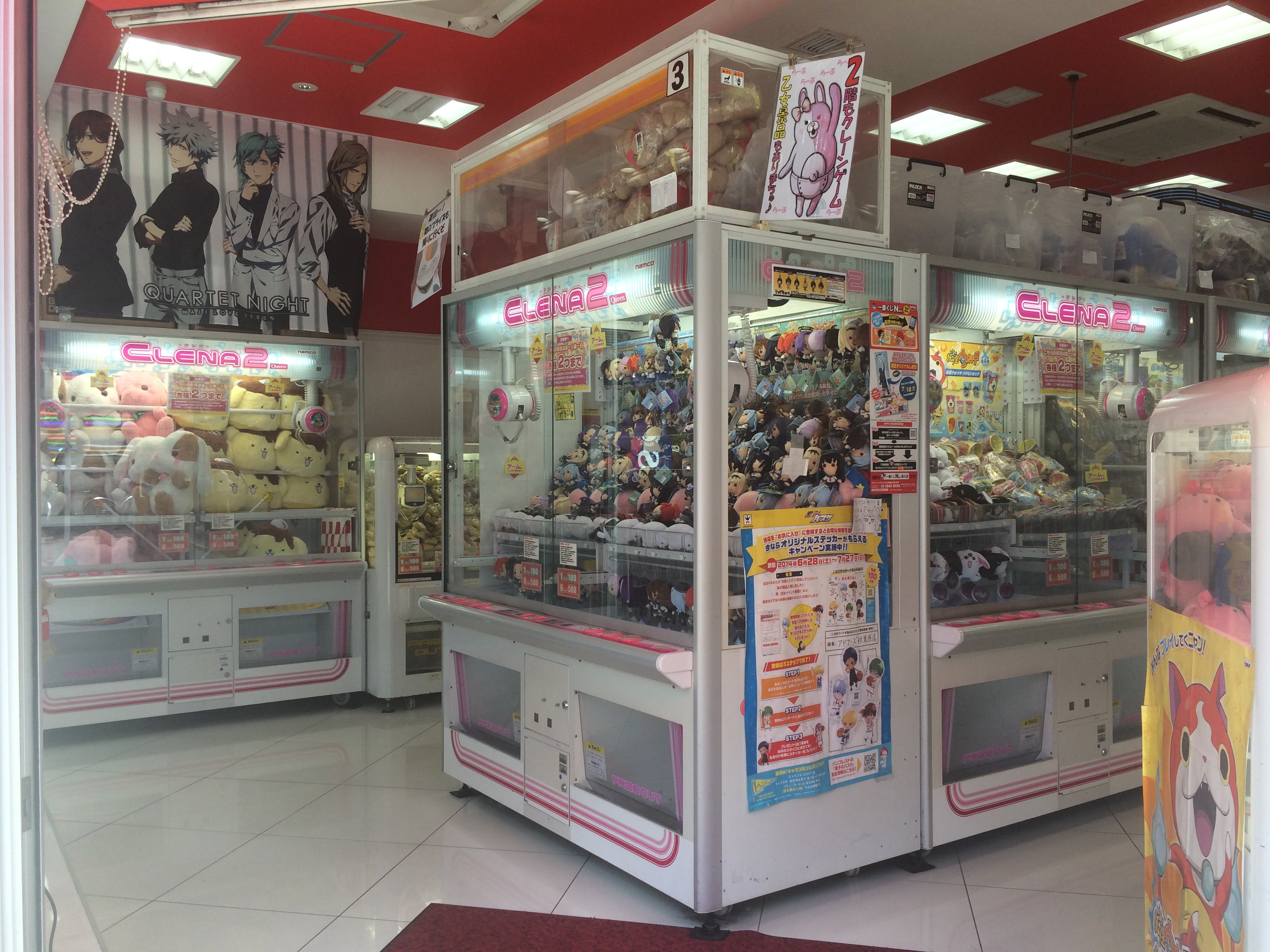
There are a number of themed cafes. We didn’t go to AKB48, but we checked out Gundam Café. 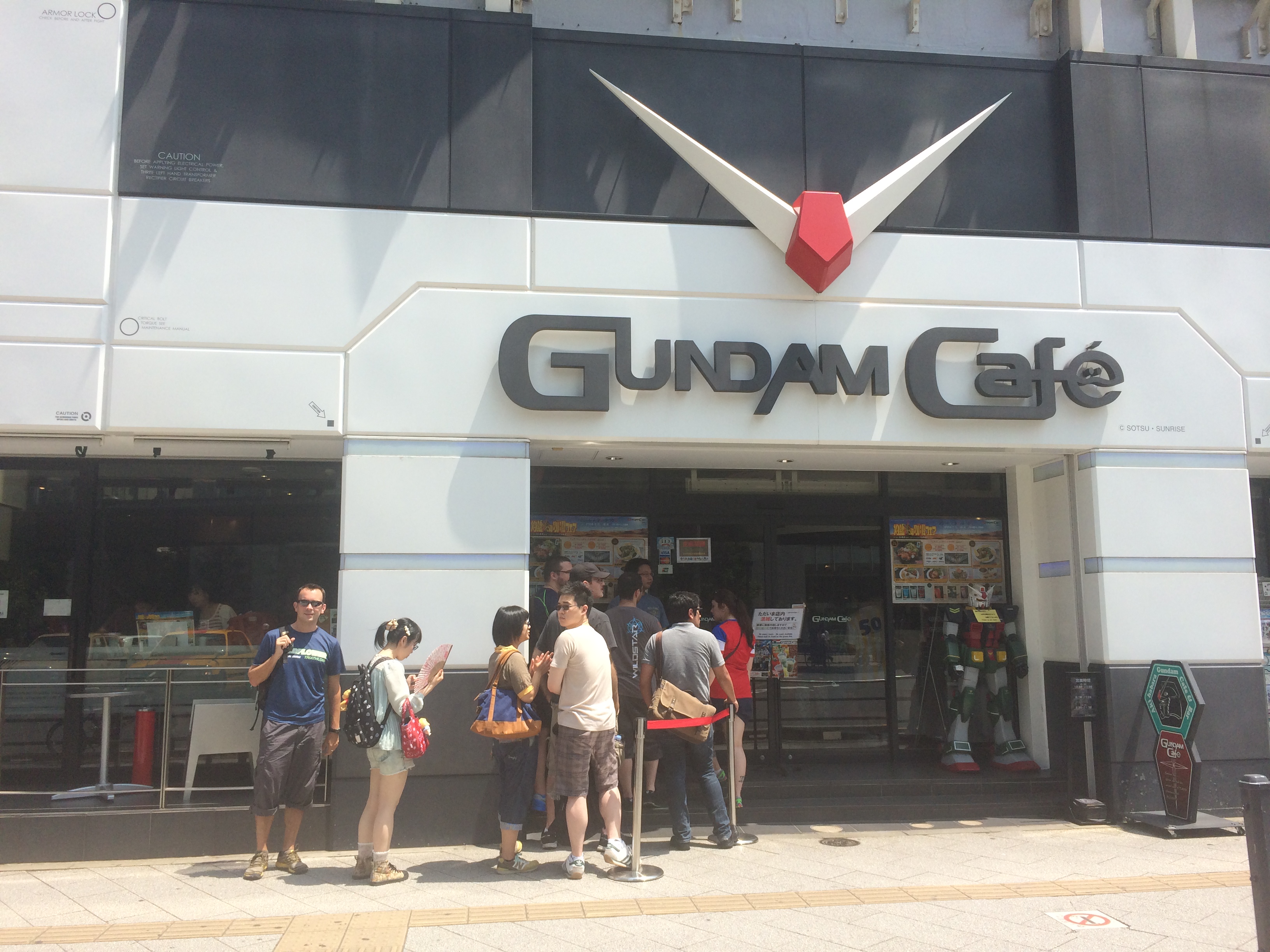
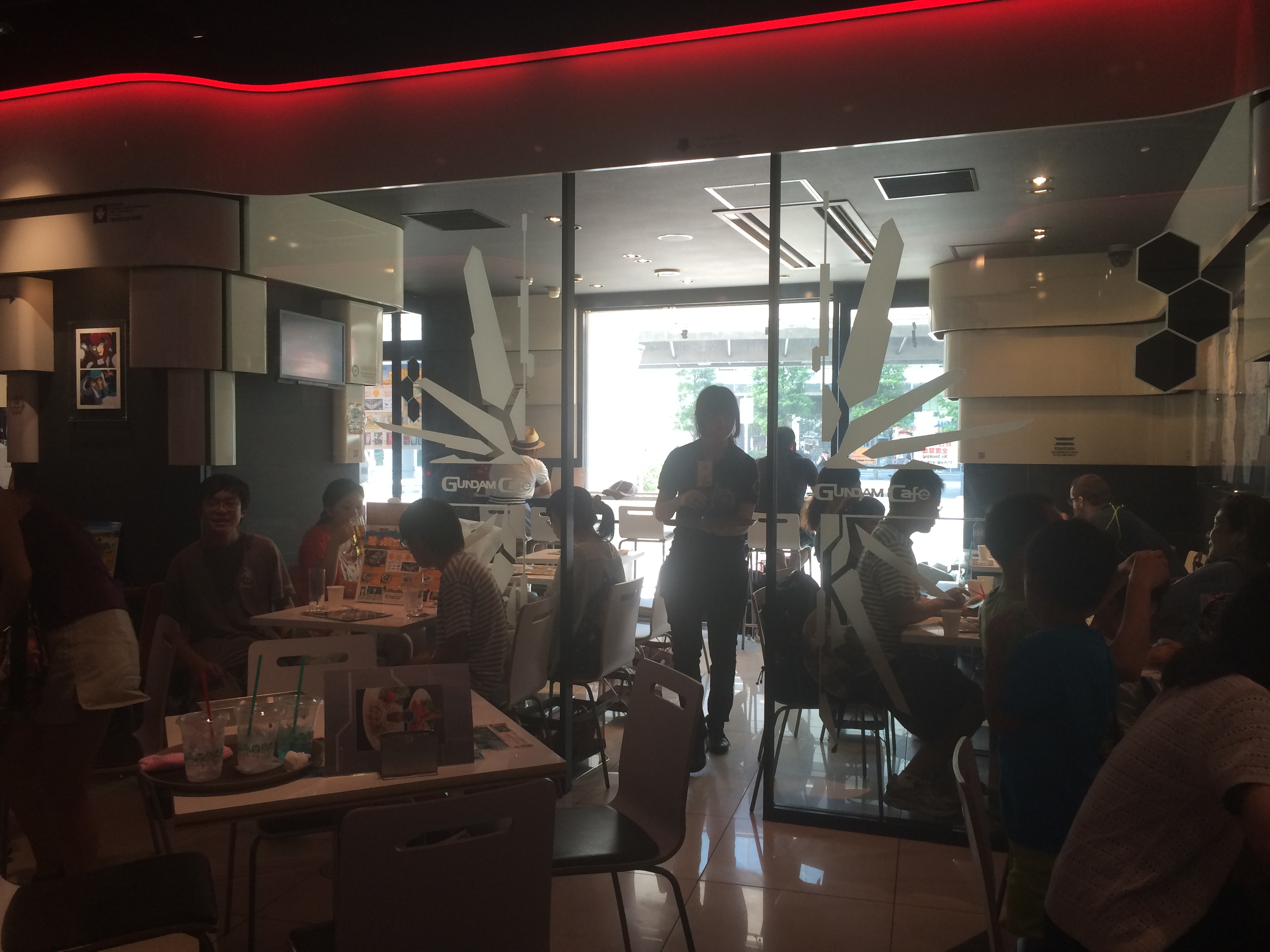
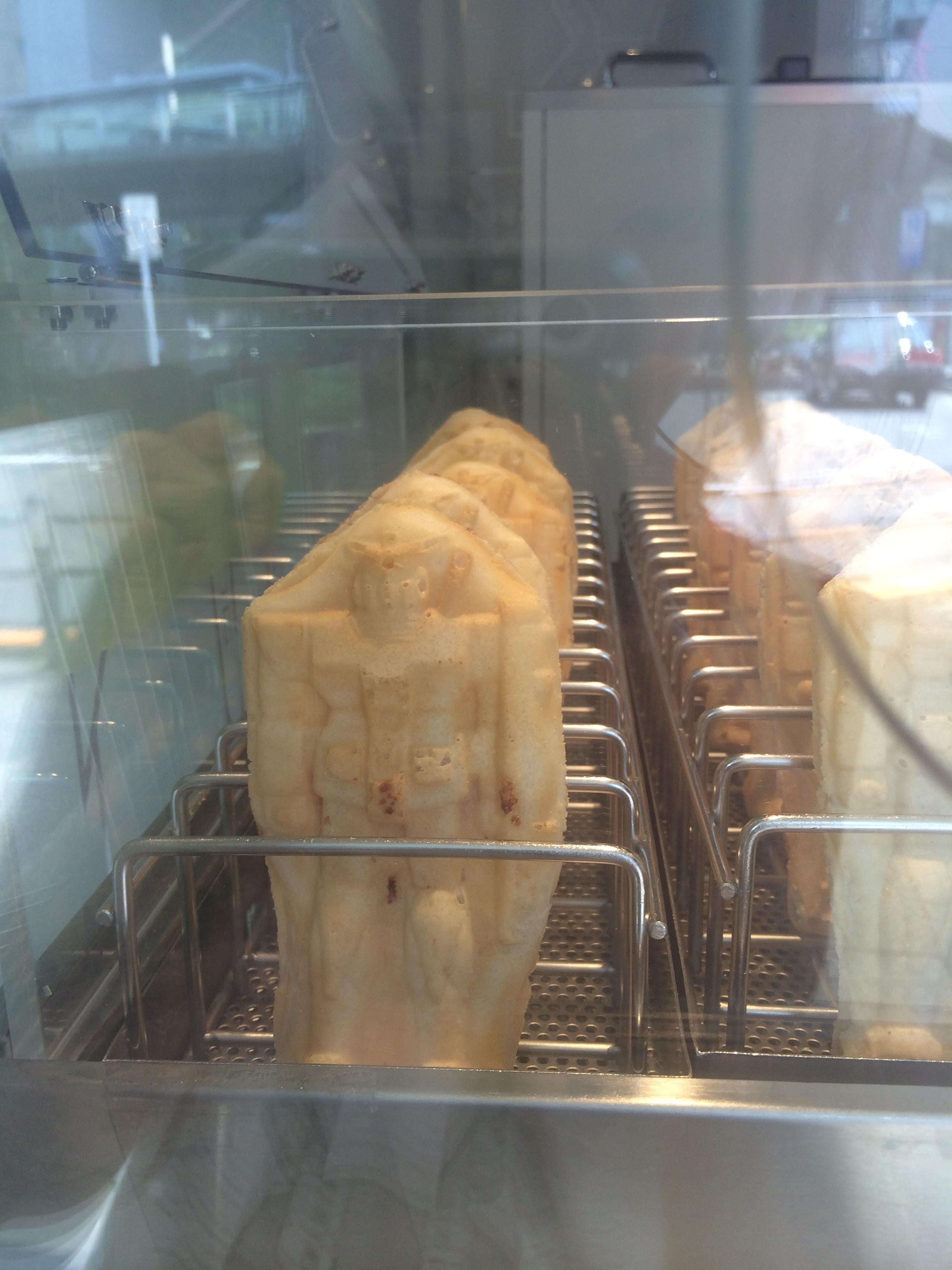
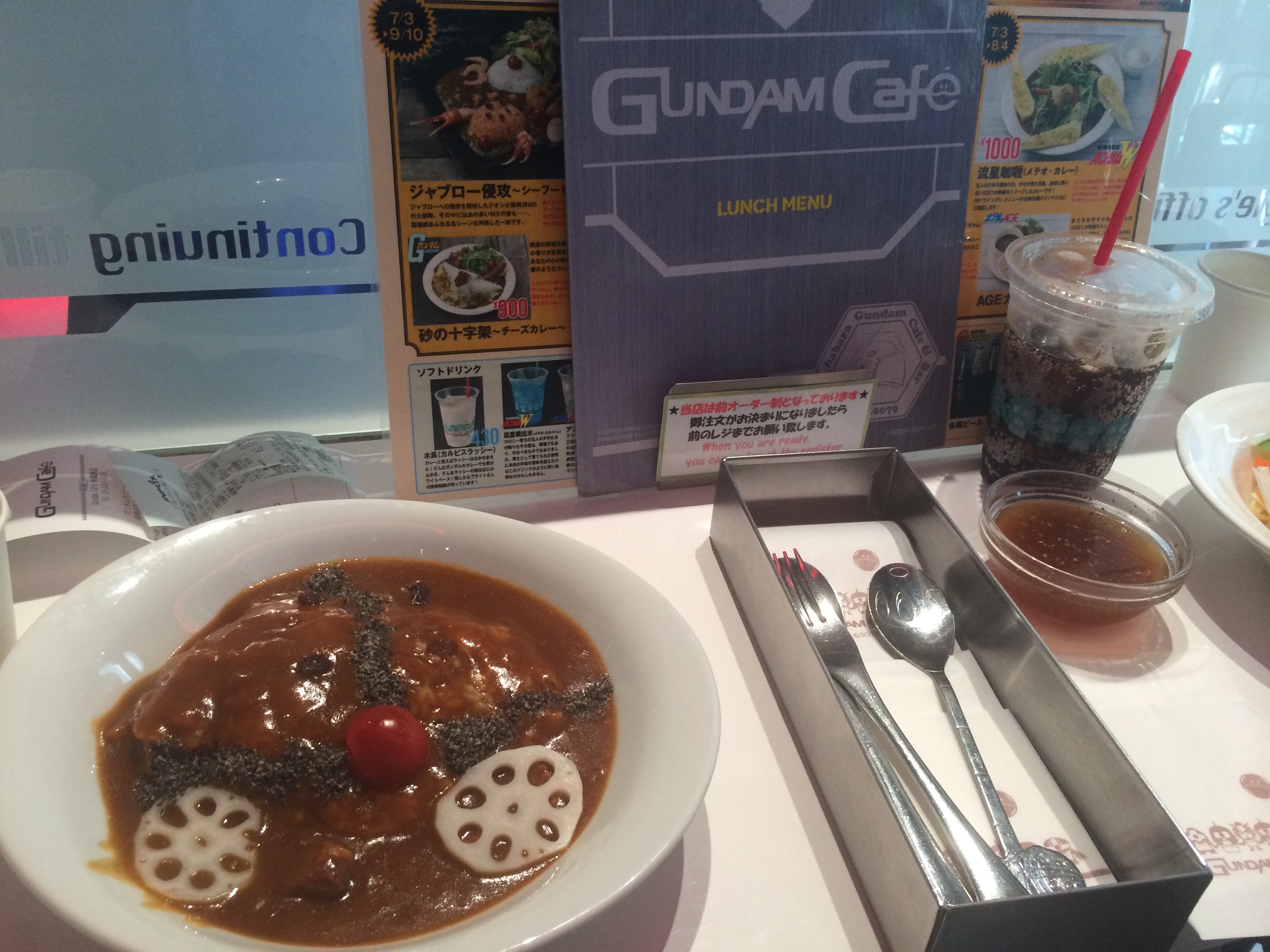
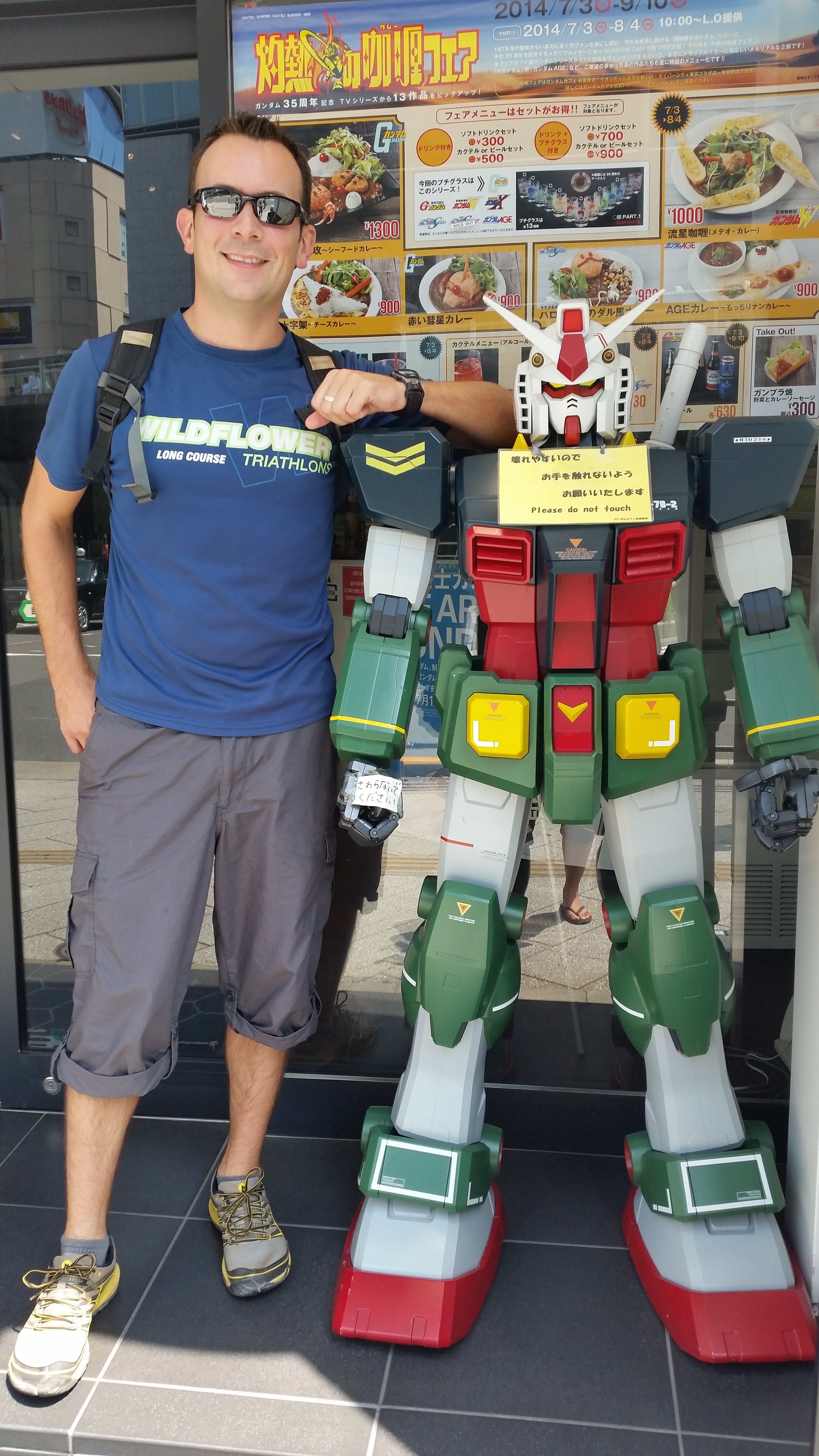
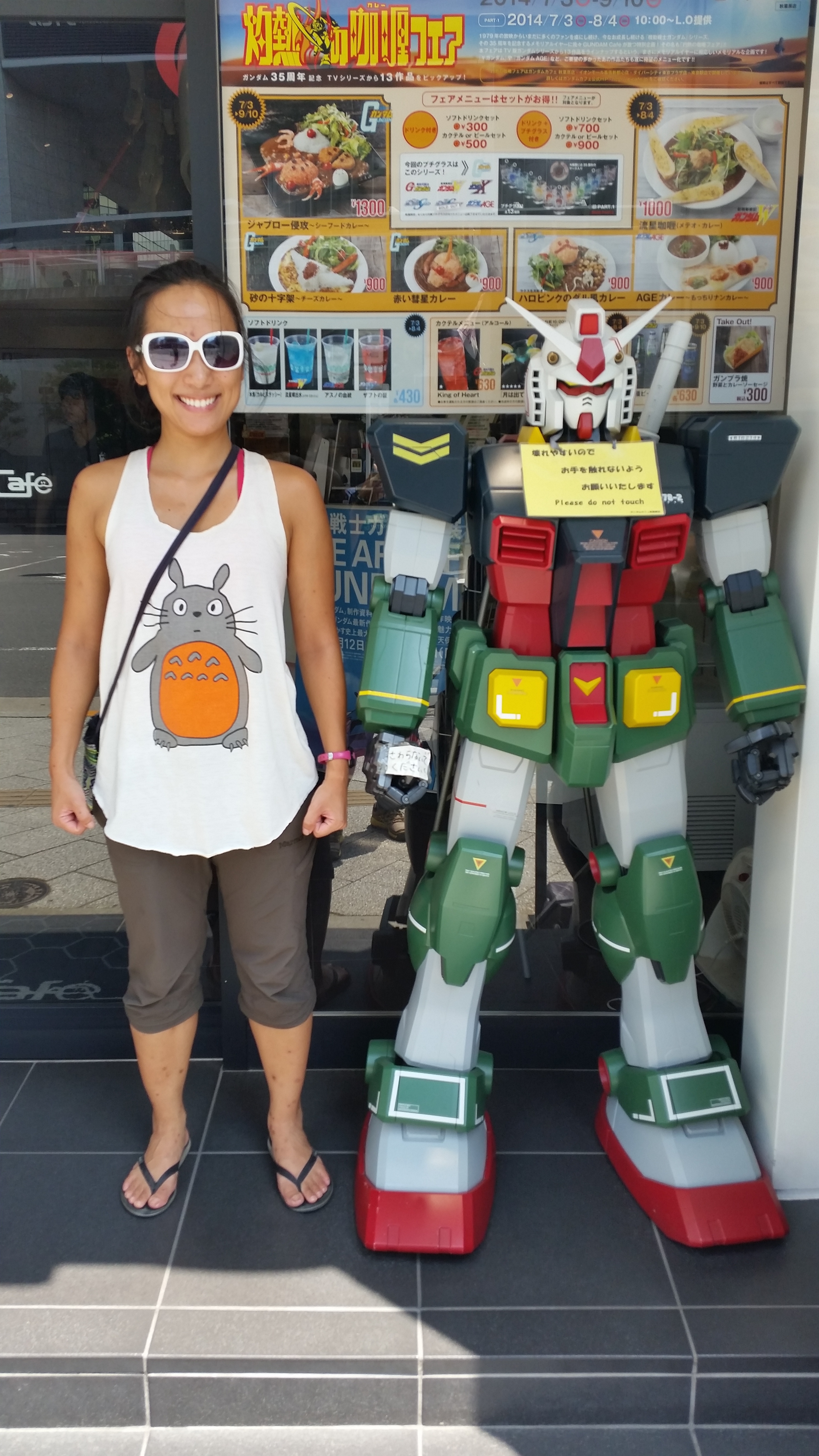
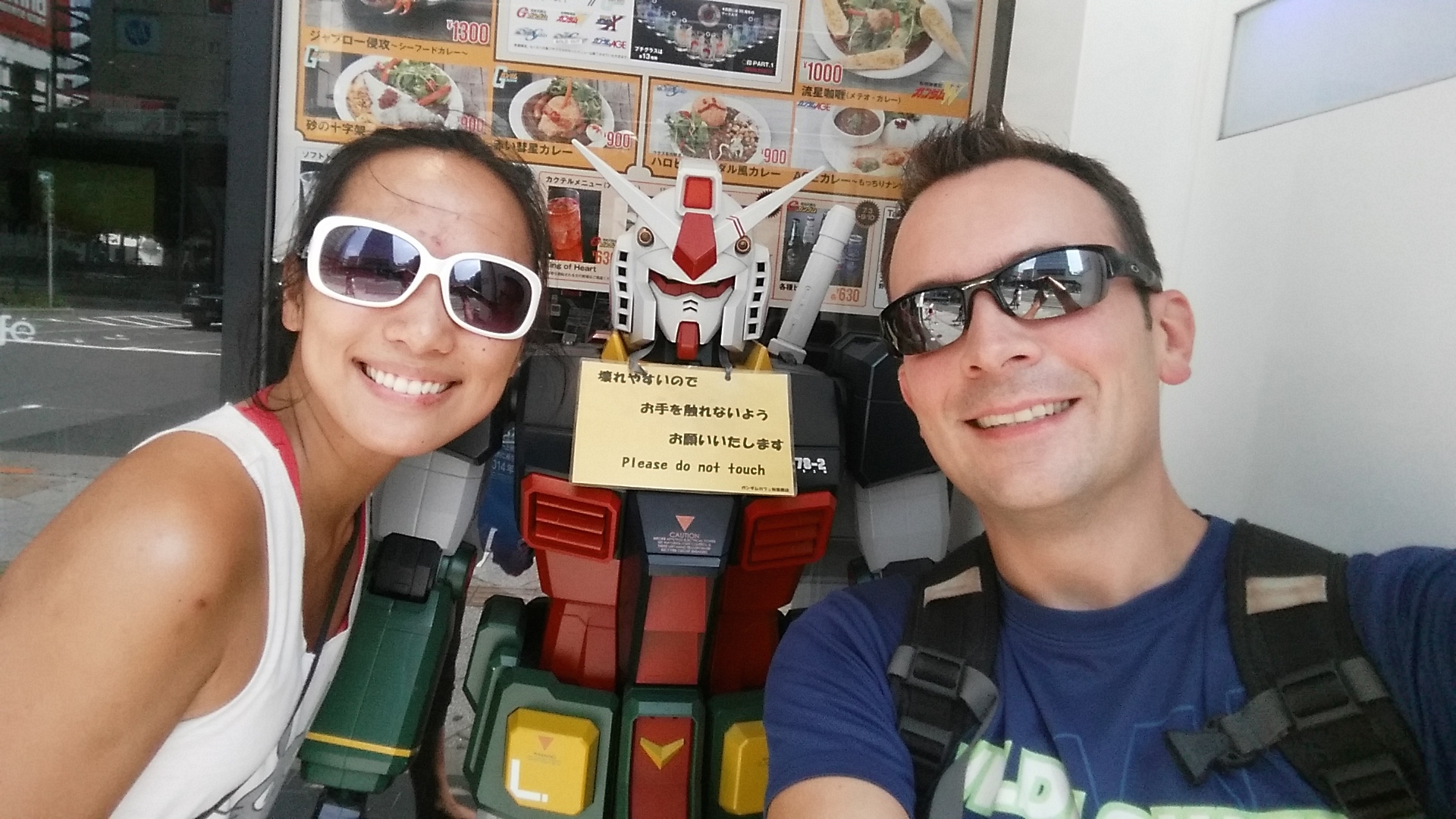
And finally, my favorite—the maid cafés. Akihabara is full of these cafés that cater to the otaku clientele, from geeky, nerdy anime freaks to the strangely perverted hantai geezers. Maid cafés have become increasingly popular; some have even opened in Bangkok! Maids are all over Akihabara, passing out fliers to lure tourists into their maid café. We went to MaiDreamin’ on our last night in Tokyo, where there was a typical ¥500 cover per person.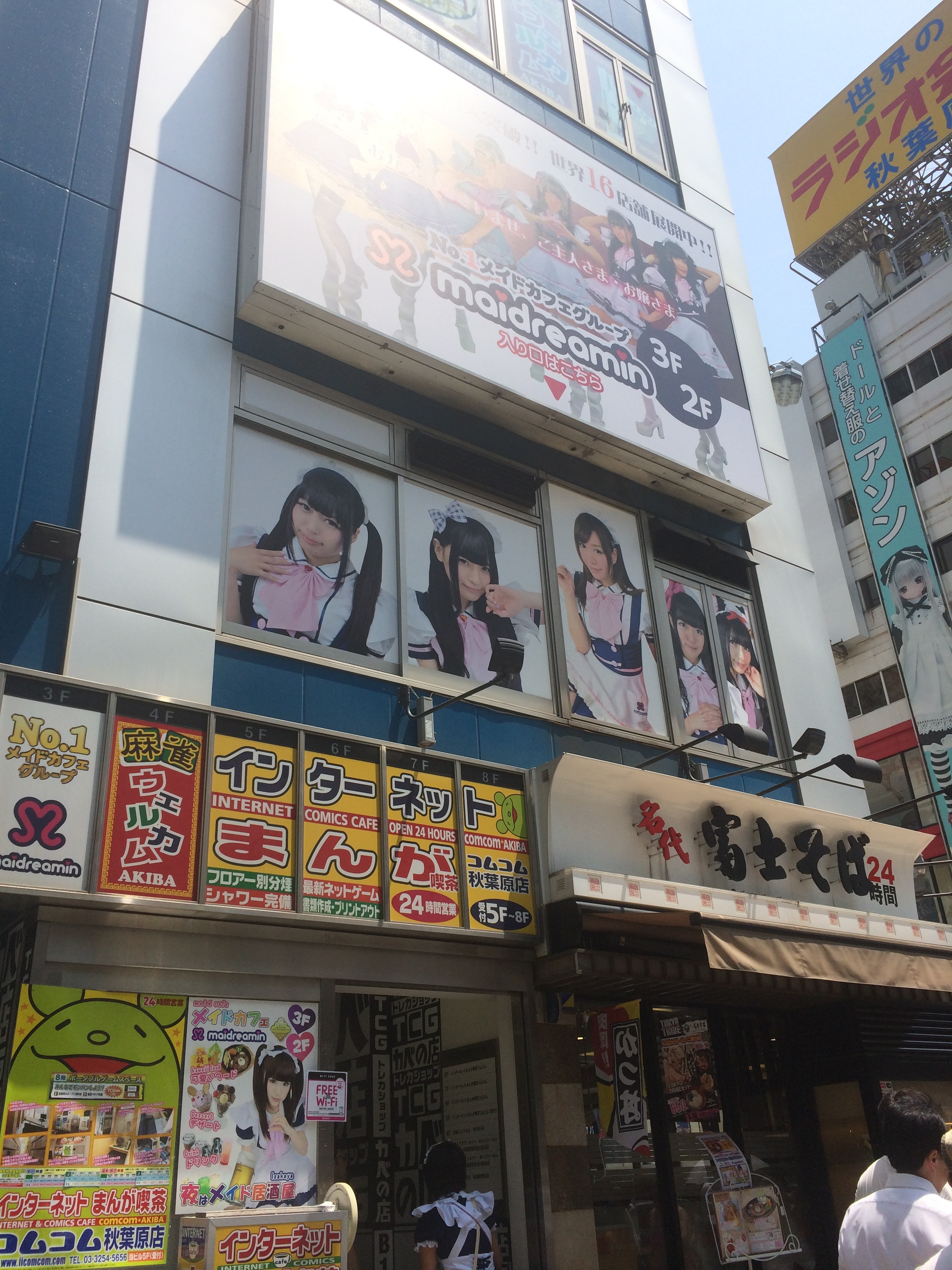
A maid handing out fliers during the day: 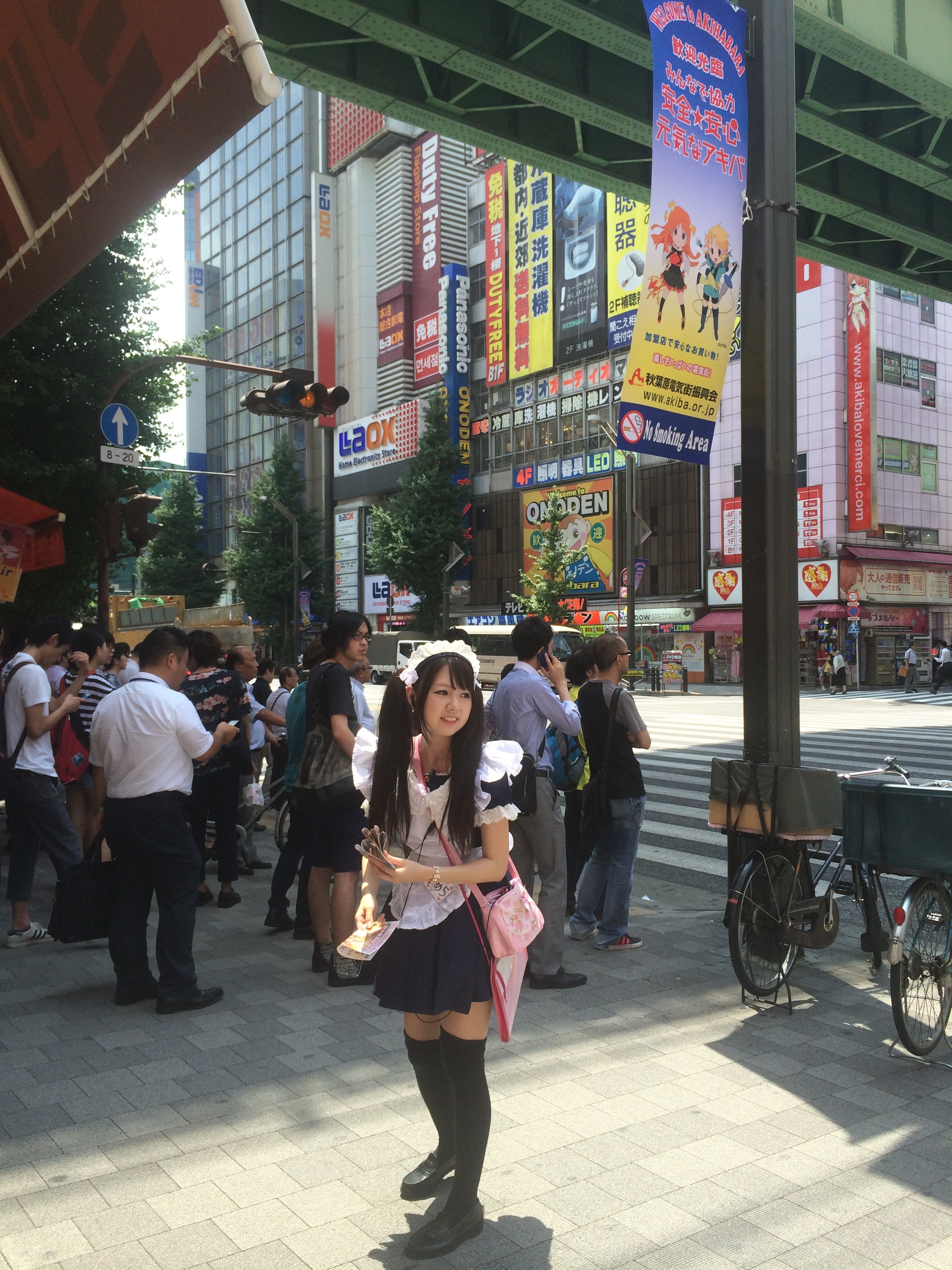
What is a maid café? In a brief summary, it is a cafe/restaurant/bar with cute, innocent-looking teenage “maids” who are eager to serve you. When you enter, they greet you with, お帰りなさいませ, which translates to, “Welcome home, Master/Mistress!”
Sometimes they even put kitty ears on their guests. When guests need something, they call out, “Meow, meow!” to get their attention. How creepy/cute.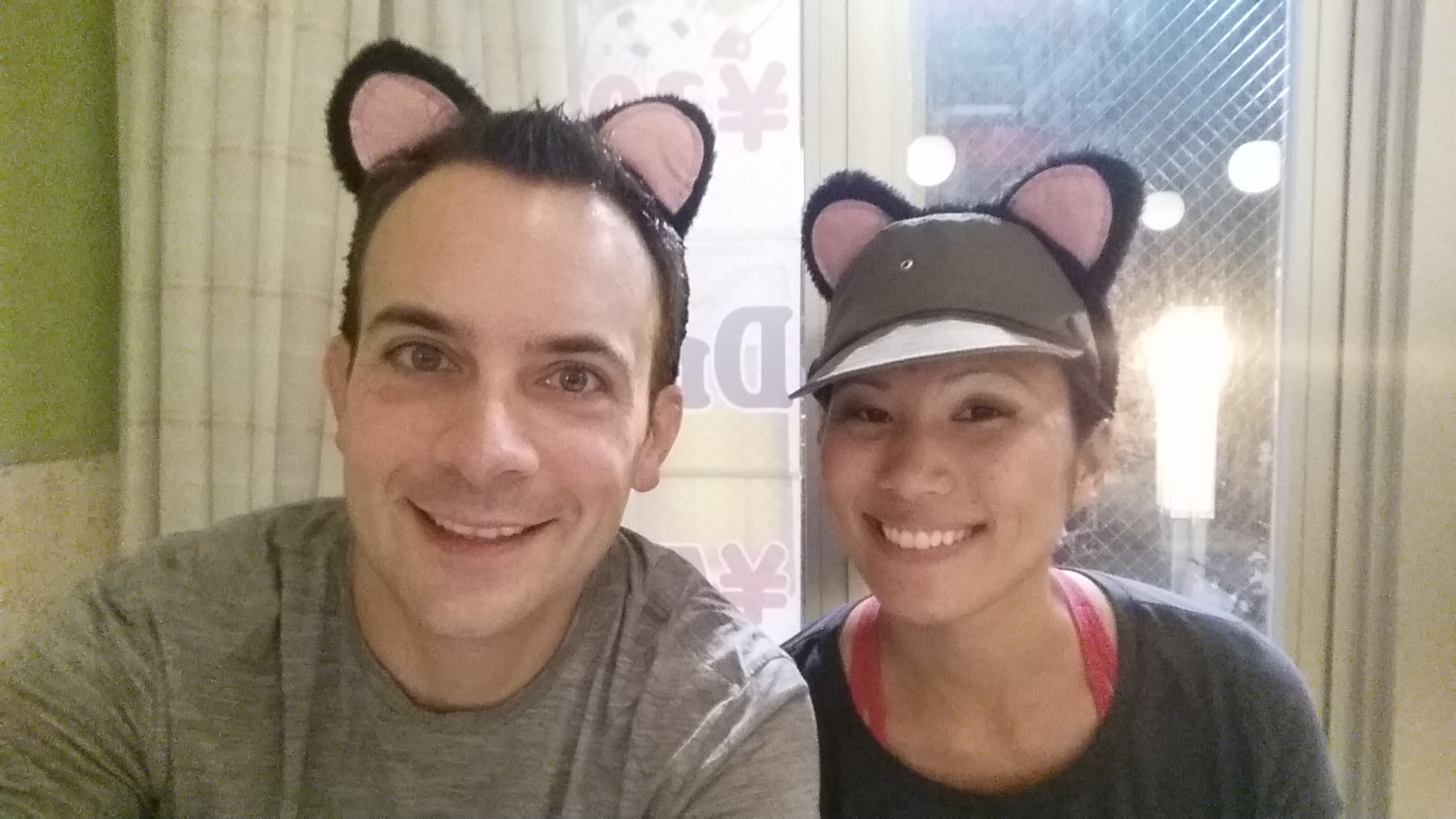
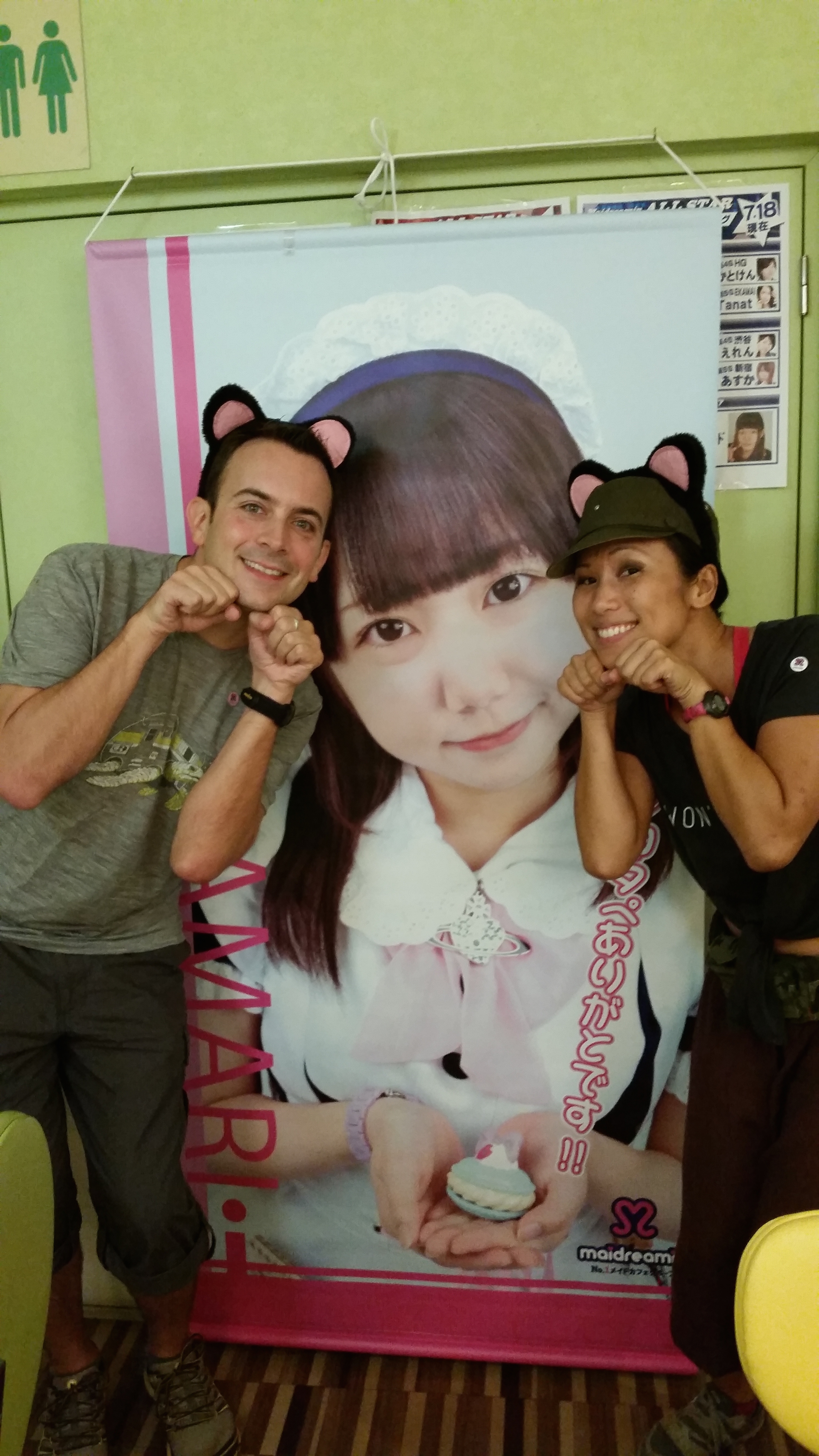
The elevator ride up after being lured in from the street: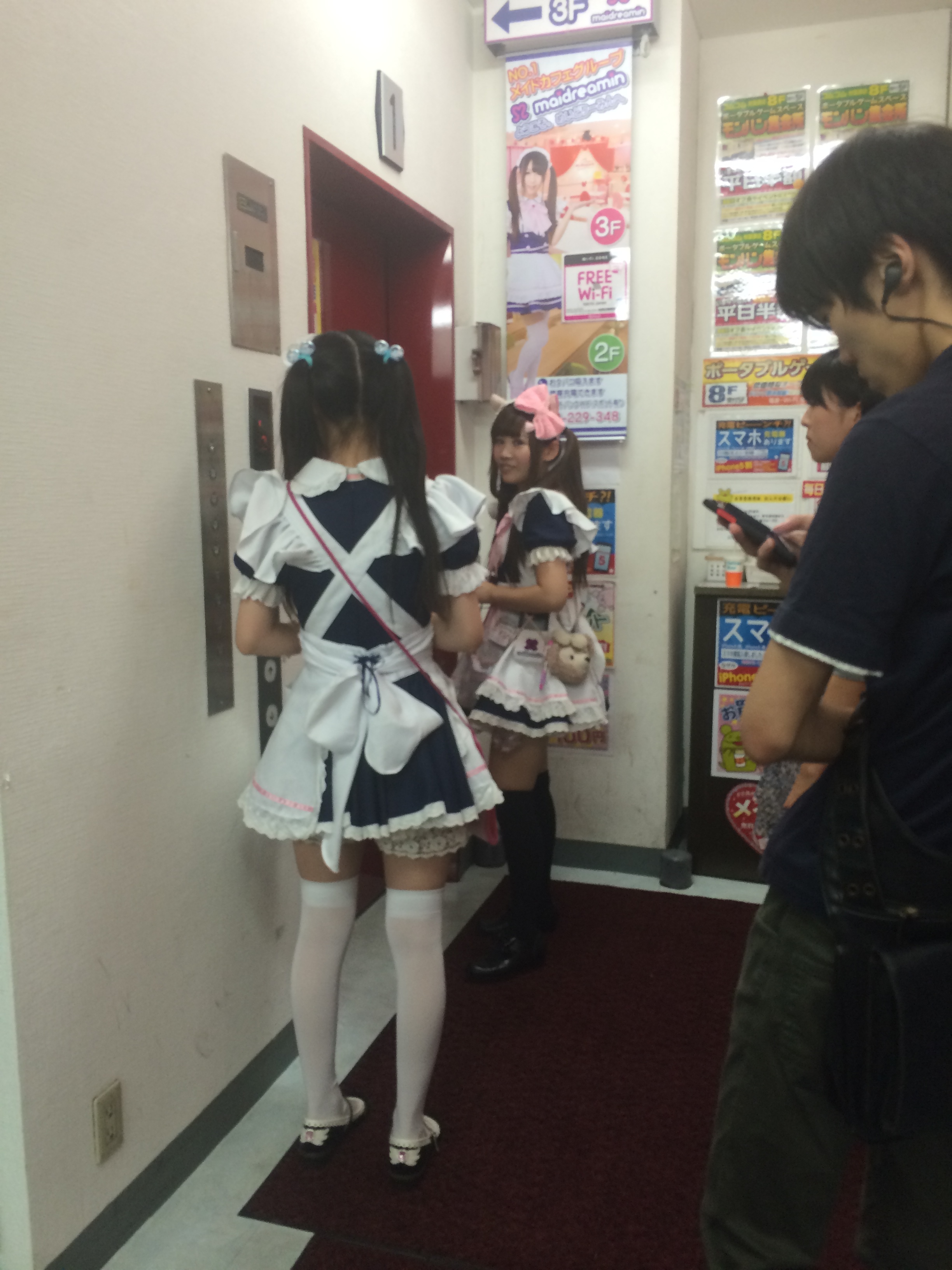
This was the stupidly cute menu: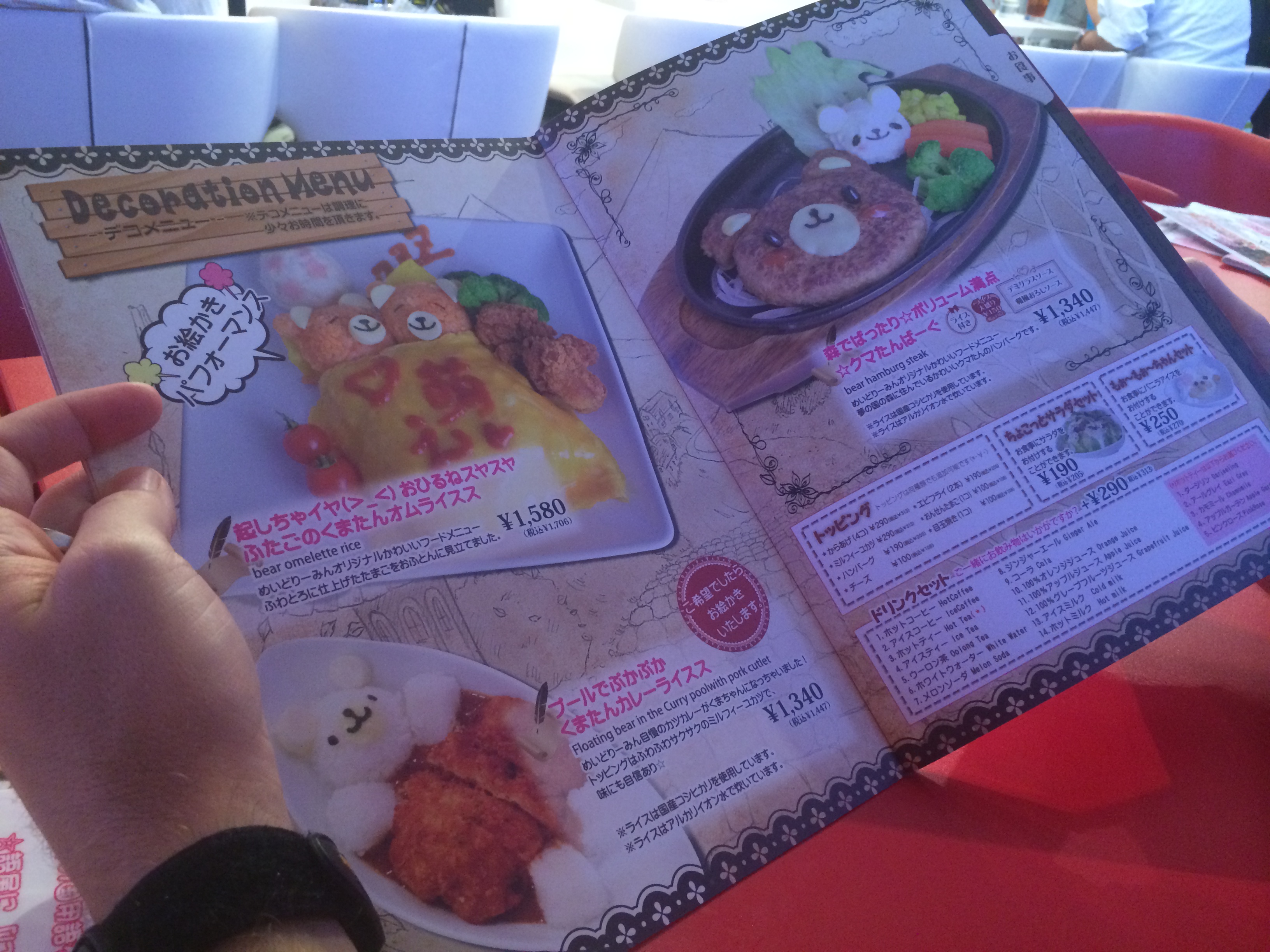
Throughout our dining experience, they were energetic and playful, often clapping and making heart shapes with their hands, and speaking in cutesy, girly voices. This was our food: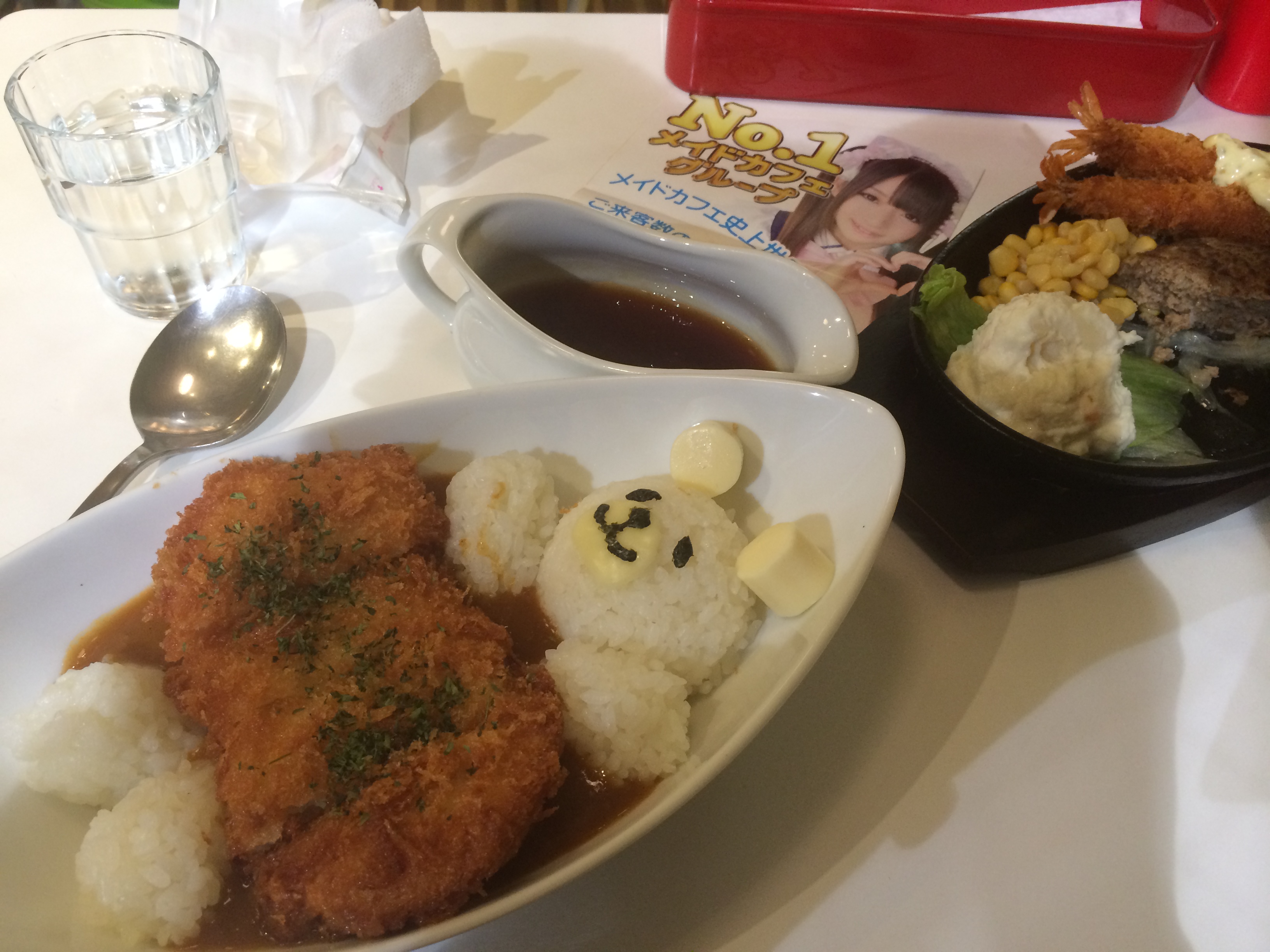
When we left, they raised both hands close to their faces and excitedly waved goodbye. I heard in some cases maids can pretend to cry/whine when their guests leave.
In addition to spending quite a bit of money on food and drinks, you can spend even more to play games and take pictures with them. Sometimes they even provide entertainment by singing on stage. Apparently, guests can get a member card and earn points from games (I’m not quite sure how you get a card and what you do with it but one creepy guy came alone while we were there and he was clearly a member). Guests are not allowed to take pictures of them, but I of course managed to take some anyway (ninja!). =) It was incredibly silly and ridiculous, but we had a great time. I highly recommend it.
Following the maid café in Akihabara, we took the subway to Roppongi which is gaijin central. I’ve had many amazing all-night memories in Roppongi when I was 20. My classmates and I would regularly party every weekend until the subway stations opened at 5am to catch a ride home. While the sidewalks, nightclubs, and subways are quite a site when the skies slowly lighten from black to blue, we knew we weren’t young anymore so we called it an early night and caught the last train around midnight back to Asagaya. I was however glad to see that the streets were still the same; well-dressed Japanese and African men continued to line the sidewalks in attempt to lure partygoers into their bars or nightclubs. The street culture was rambunctious and lively, and we thoroughly enjoyed it. 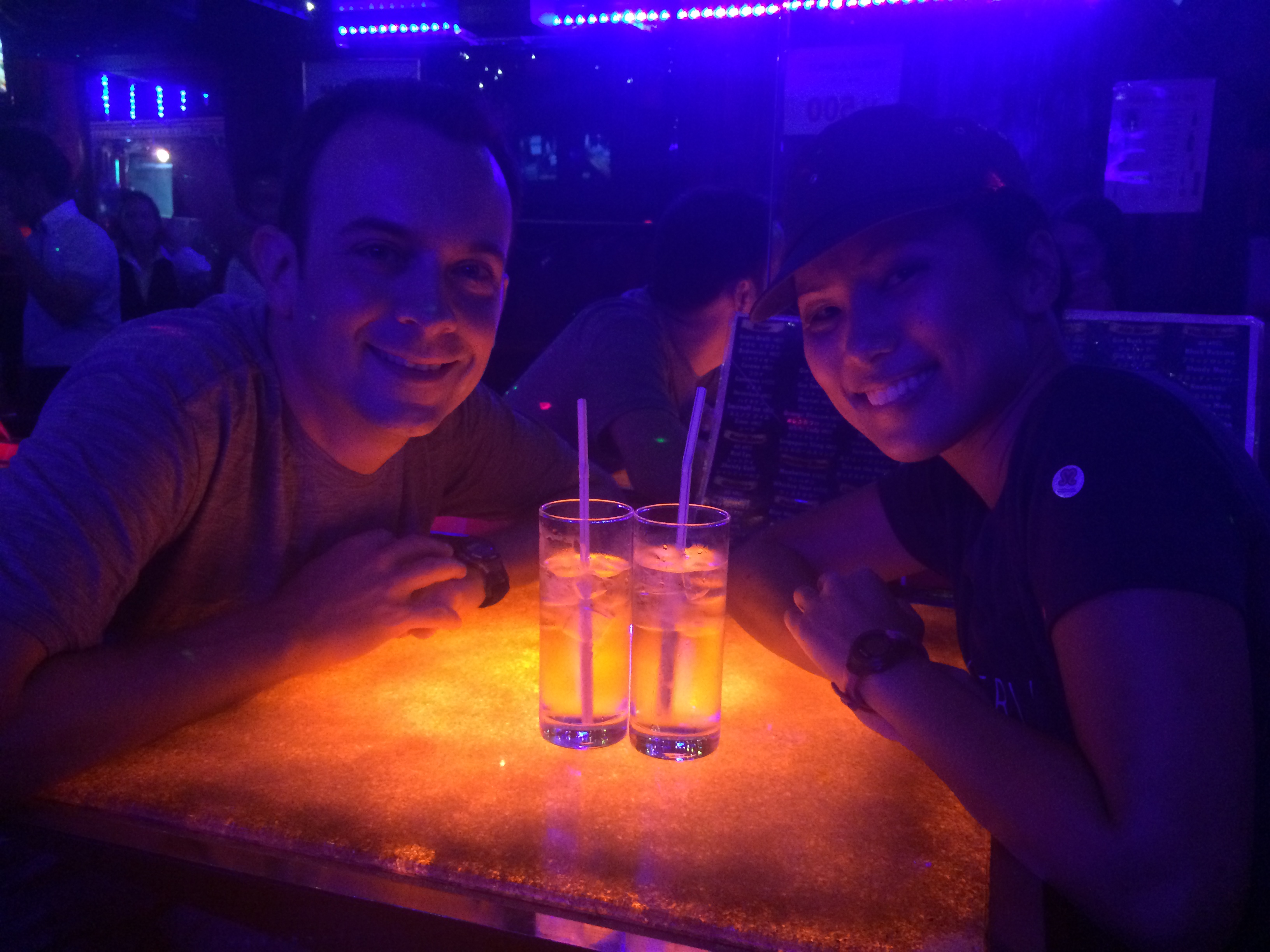
As expected, our three and a half days in Tokyo ended quickly, and though I just shared our experiences and excursions from beginning to end in this post, I cannot publish my entry on Tokyo without writing about the FOOD!
For practically every meal, we hunted down reputable restaurants which rewarded us with absolutely amazing food. Five months ago I was dining on the world’s finest Vietnamese cuisine along grimy sidewalks and now we’ve just stuffed our faces with the world’s tastiest Japanese food within izakaya-style shops. In the small, elbow-to-elbow restaurants, Japanese chefs are known to specialize in a single dish that everyone queues for. And boy, the traditional Japanese dishes we had the pleasure of devouring brought the most eye-closing satisfaction.
Cique’s ramen in Asagaya is known for the stewed tomato, but I also noticed that the fatty pork was remarkably flavorful and tender. The best part, however, was the creamiest soft-boiled egg, which I savored as if it was a dessert. 
Chris literally polished his ramen bowl. Holy shit.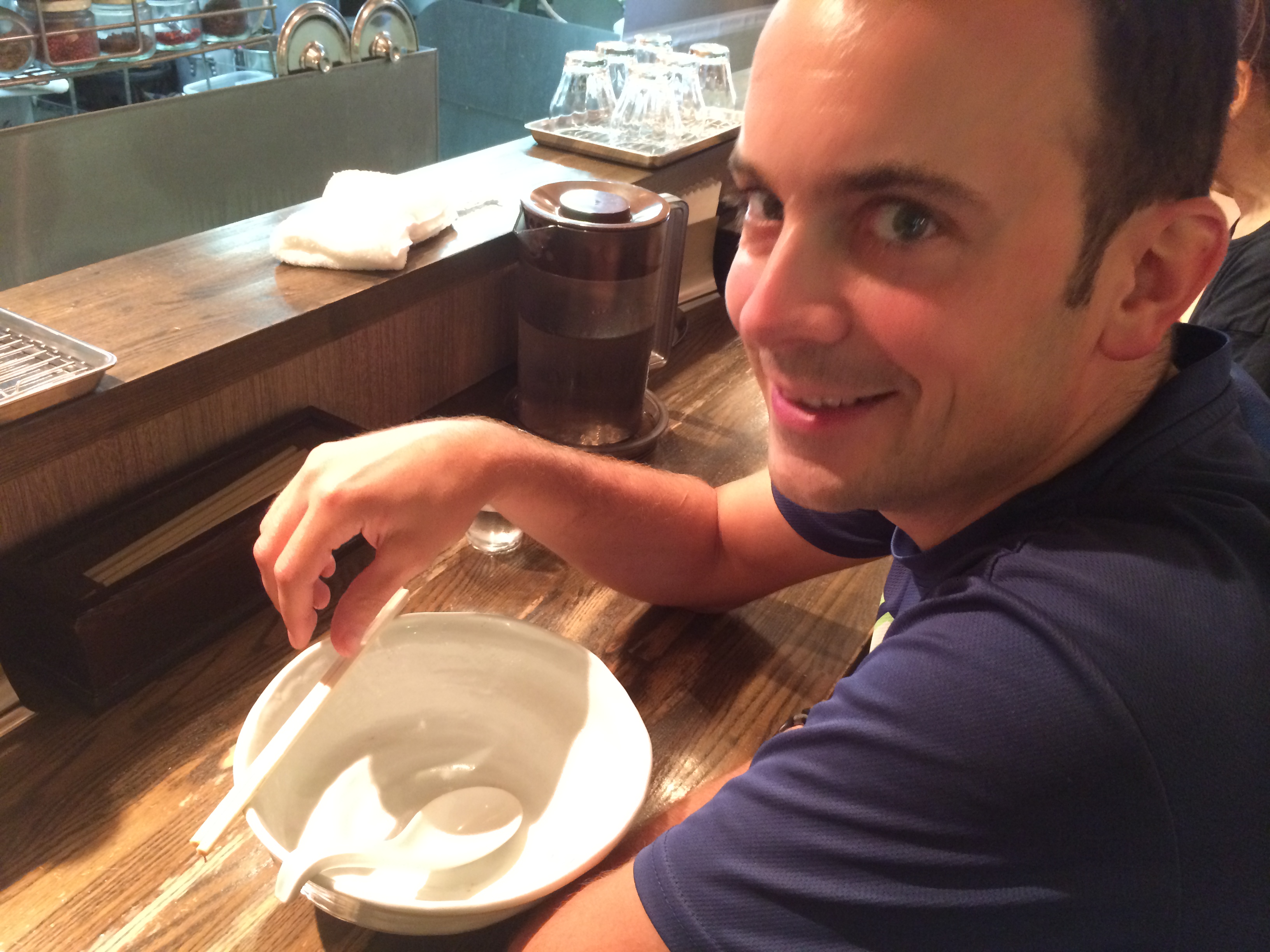
Chris and I did not want to spend a fortune on sushi, nor did we want to queue up in a one-hour (or longer) line at a sushi shop. Based on a recommendation, we ate sushi at the Food Show below the Shibuya station two times! Incredible sushi at incredible prices (¥1000-¥1500 for generous cuts of fresh fish) can be found at Uoriki Kaisen Sushi. 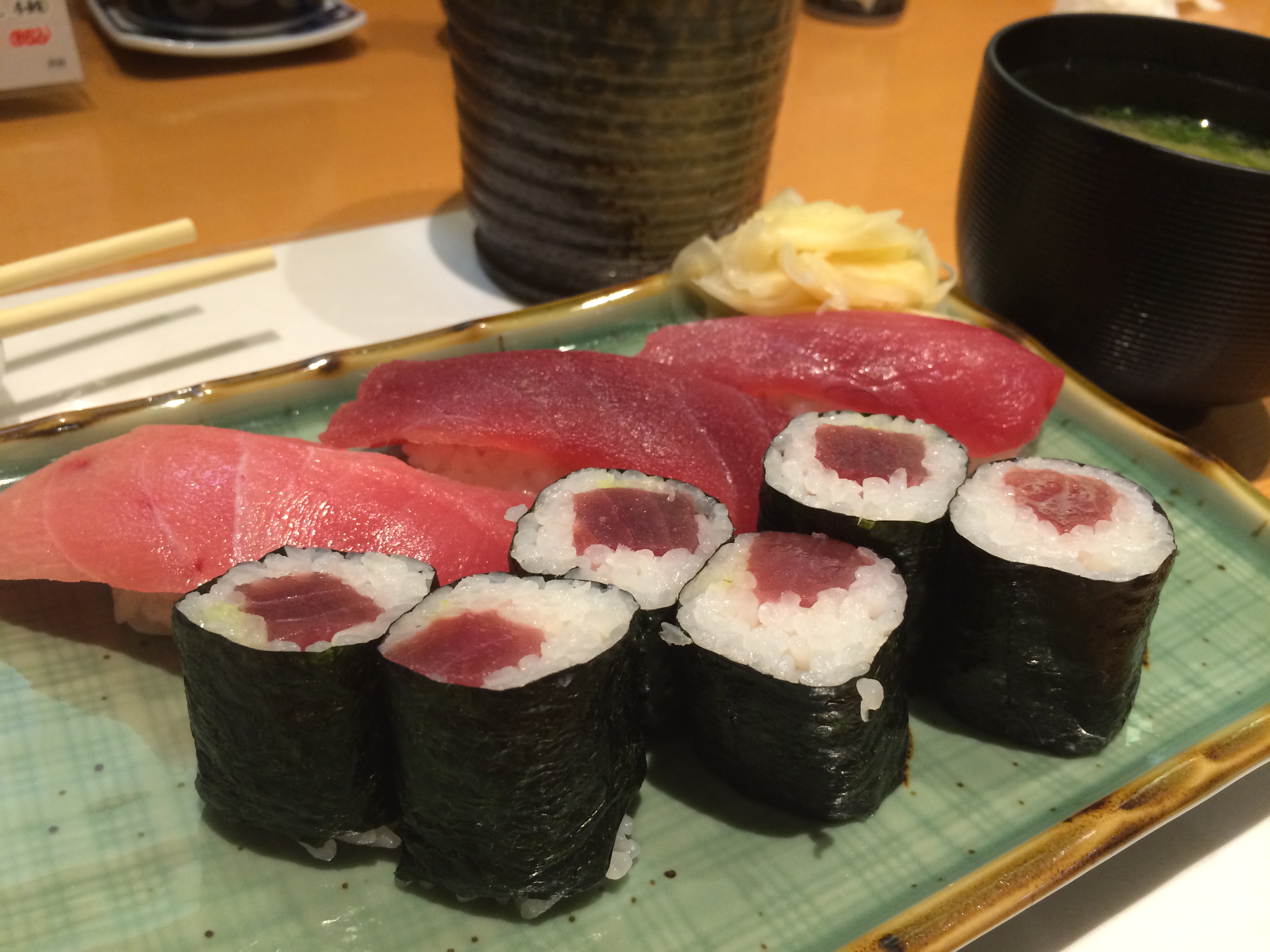
Hashida-ya is a restaurant that specializes in chicken, and is known for their oyakodon during lunch. AMAZING!!! 
Chris found the hands down most amazing tonkatsu we have ever had. Chefs here don’t flatten their chicken by tenderizing it; instead, plates are topped with a thick slab of slowly fried chicken with the lightest, crispest panko ever. 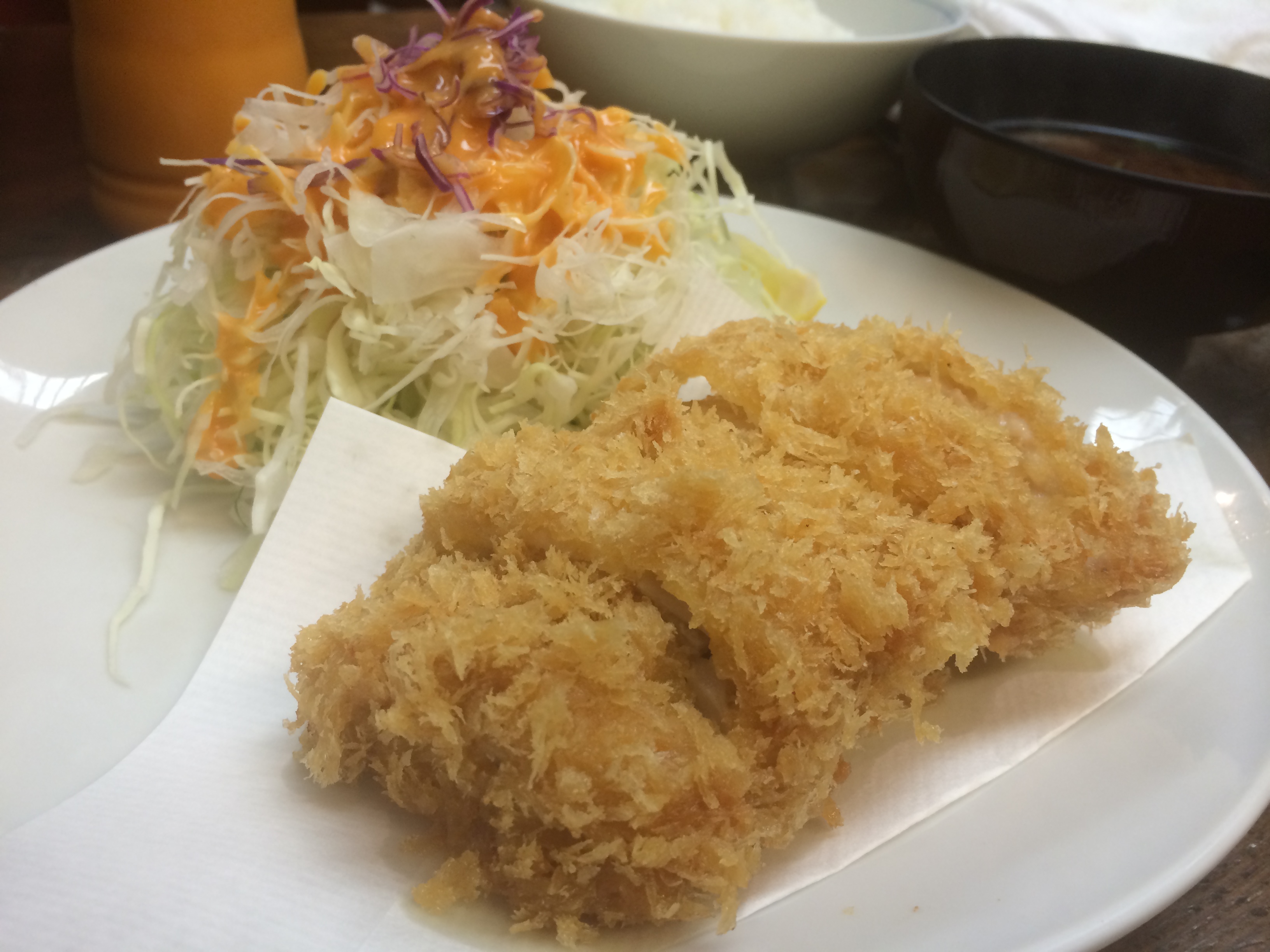
When I was in Japan 9 years ago, I spent the entire summer in the Yokohama-Tokyo area. Tokyo is obviously freakin’ AMAZING, and I am fortunate to relive that time within the past three days, but the rest of Japan has yet to be seen. With about a week and a half left in Japan (and before finally returning home), I decided to split our time between Hiroshima, Miyajima, Kyoto, Yokohama, and Mt. Fuji. That’s a lot of action-packed Japanese fun and I can’t wait for the final days we are about to encounter.

